
Travel to Yunnan – A Complete Guide to The South Western Province
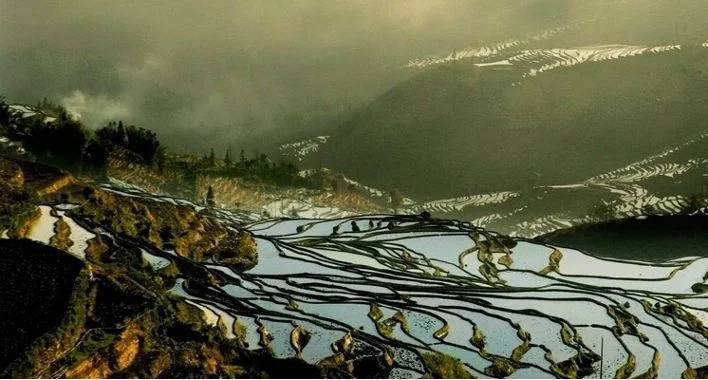
This article is a travel guide to Yunnan Province, in the South West of China. It was written by Harley Greenberg, who works with a local travel agency (WindhorseTour) in China.
Travel to Yunnan – Index
Yunnan basic travel facts.
- Possible itineraries
- The Stone Forest near Kunming
- Dali Ancient Town
Lijiang Ancient Town
- Yuanyang Rice Terraces
Frequently asked questions
Yunnan Province is famous for its diverse scenery and for being home of a third of all China’s ethnic minorities. It has lots to offer any traveler!
A trip to Yunnan province realistically takes at least one week. However, if you want to cover all the highlights I encourage you to spend twelve days or longer.
A trip to Yunnan is a breathtaking view of some of the most spectacular and overwhelming scenery within China. You can watch the sun rise and set on the magnificent Yuan Yang rice terraces; escape the crowds and enjoy the days exploring the less visited Lugu Lake, or get lost among the canals and cobbled lanes of Lijiang ancient town or Dali Cang Mountain.
Yunnan’s climate is diverse as its terrain, for many places such as Dali there is an ideal temperature – an eternal spring – that attracts tourists all year-round. The northwestern region around Shangri-la is situated on the Tibetan plateau and can be very cold during winter.
I find the best time and also peak season for traveling Yunnan is from April to October, when the vegetation is a lush green and flowers are in bloom.
Yunnan can be easily accessed by air, bus and trains from most cities across China. Kunming, the capital, is served by all Chinese airlines and has daily flights to most cities.
Other popular attractions such as Lijiang, Dali and Shangri-la also have airports with connecting flights offered from Kunming and other major cities in China. Another option is to take the train – or the bus – that goes from Kunming to Lijiang (via Dali).
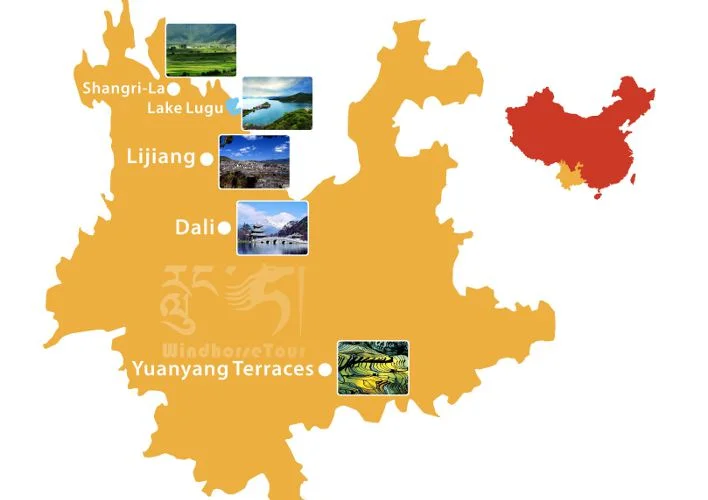
Itineraries
Here some possible itinerary to visit Yunnan Province:
- Kunming – Stone Forest – Dali – Lijiang – Shangri-La and then back to Kunming or up to Sichuan.
- Kunming – Stone Forest – Dali – Lijiang -Lugu Lake and then back to Lijiang or up to Sichuan.
- Kunming – Yuan Yang and then back to Kunming, East to Guanxi Chinese Province or South to Vietnam.
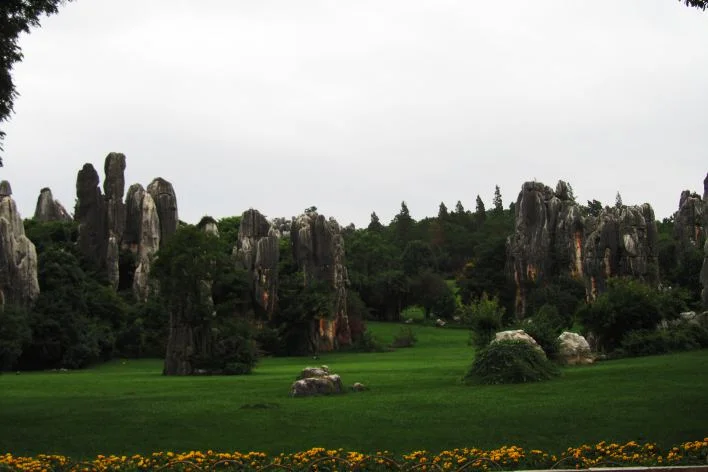
The Stone Forest
The Stone Forest (or Shilin, in Mandarin) is a beautiful park composed by limestone formations.
You can get there by private car, taxi or taking the bus that leaves from Kunming every hour (the trip takes about ninety minutes). The Stone Forest is quite popular, especially among Chinese tourists. This means that most days by nine am it will be jam packed, this is one reason why clients that visit the forest tend to don’t recommend it. However when asked if they are glad they went the answer is “yes”. So there you have it.
A hint on how best to enjoy the Stone Forest is to travel there with an agency that brings you early on or head to Lunan – the near by town – the night before so you can wake up early and visit it before the buses from Kunming start to arrive (normally around nine am). For more info you can read this story published here on the site longtime ago.
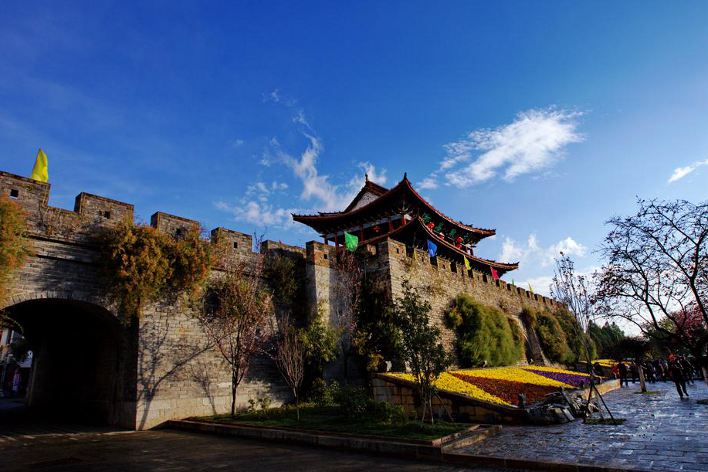
Dali Ancient City
Dali is one of those few places in China with an infectious ambiance, an environment that seem to attract many Chinese backpackers. Don’t be surprised when you find some of them sitting around strumming their guitars and telling tales of their travels.
With over 2,000 years of history, Dali shares a glorious past of being the former capital of the Nanzhao Kingdom, a powerful entity separate from China. It lies on the western edge of Erhai Lake at an altitude of 1,900 m (6,234 ft.), with a backdrop of the imposing 4,000 m (13,123 ft.) tall Jade Green Mountain (Cang Shan in Chinese). You can climb it using the stairs but be careful to do not lose yourself.
Flights are probably the most popular transportation to get to Dali. You can also choose an overnight sleeper train from Kunming or take a bus, always from Kunming, that will take around four hours.
Within the heart of Dali still lives the ancient city that retains a historical atmosphere that is hard to come by in other parts of China.
A short distance northwest from the old town stand the Three Pagodas (you can walk till there). Like 3 guardians this landmark is a definite “can’t miss” attraction in the city. The tallest of the three has 16 tiers, reaching 72 m. (234 ft.), and was originally constructed in the 9th century.
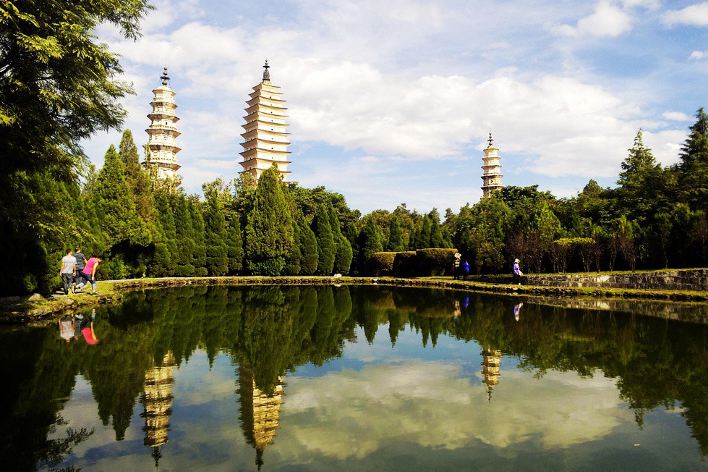
The countryside around Dali can also be dazzling, with small fascinating temples, and the occasional village showcasing exquisite traditional local architecture.
A good start is to visit the Zhonghe Temple. You can climb the paths that snake their way up and see the marvelous views of Erhai Lake.
Other way to explore Erhai Lake is by either renting a bike or zipping across the water on the many ferries that crisscross the lake. Roads now encircled the lake so it is possible to do a loop of the lake by mountain bike. There are some small villages dotted along the way for you to buy food and water.
24 km. (15 mi.) north of Dali, the old town of Xizhou is a must-see to extend your cultural trip in Dali. Much of the original Bai architecture is well preserved. Here you will witness the local courtyards with children play, chickens squawk, dogs fight, and all the rhythms of family life play out.
When the night falls, find a bar at the Foreigner’s Street, sit back with foaming cappuccinos and banana pancakes, there is another singer telling his stories in Dali.
Click here to read SDC’s hotel recommendation in Dali .

In the foothills of Qinghai-Tibet Plateau lies Lijiang, a splendid little town that is home to the Naxi people. Filled with a maze of cobbled stone streets, rickety old wooden buildings and gushing canals makes it one of the most visited sites in northern Yunnan. Here you will find the stunning Jade Dragon Snow Mountain that presents a splendid backdrop viewable from across Lijiang.
Beyond Jade Dragon Snow Mountain lies one of the most popular backpackers destination in Yunnan, Tiger Leaping Gorge. Most travelers will spend two days hiking within Tiger Leaping Gorge.
Lijiang can be easily accessible by air, bus and trains from Kunming and other big cities in China.
A visit here requires at least two days to take a glimpse of the highlights this town has to offer. However, I would suggest you arrange a local guide either local or along with a private tour. This will help your to better understand the rich culture of the region and history of the nearby Baisha and Shuhe Villages.
Here the most popular attractions in Lijiang:
- Dayan ancient Town: It is one of the main draws for people coming to Lijiang. The whole town is crisscrossed by canals, bridges and a maze of narrow streets. Dayan is full of traditional Naxi architectures that still today fills the town. As you walk through the narrow street you will observe the many wooden doors that are left open to reveal the interiors of both Naxi and Western restaurants.
- Black Dragon Pool: As you head towards the north you will reach the Black Dragon Pool. One of the most popular vantage points of Jade Dragon Snow Mountain.
- Dongba Culture Museum: If you fancy museums stop and visit the Dongba Culture Museum dedicated to the Shamanistic Dongba religion.
Jade Dragon Snow Mountain : A visit to the Jade Dragon Snow Mountain is a must-do in Lijiang. 34 km. (21 mi.) north of Lijiang, this mighty mountain rises raggedly above the ancient town. The mountain’s summit soars to 5,596 m. (18,354 ft.), encrusted with snow and set against a sharp, blue sky.
Located at 4,506 m (14,784 ft.), Cloud Fir Meadow is the highest point you can ascend to at Jade Dragon Snow Mountain. The walkways provided to help protect the environment lead you to some awesome glacier views.
Be warned that the elevation here can make some people feel uncomfortable. Mind your health and tell your guide immediately if you start feeling queasy.
Tiger Leaping Gorge : For further exploration in Lijiang, head over to Tiger Leaping Gorge. A hike here is a “can’t miss” experience of Northern Yunnan.
The gorge is considered one of the deepest in the world. With Jade Dragon Snow Mountain in the back, the Jinsha River flowing through the gorge and later swelling into the Yangtze River it offers a dramatic and thrilling journey to travelers.
The nightlife in the ancient town is lively! Chinese people believe this is one town filled with romance. Also, there are many bars and western cafes in the old town. With a cold beer in your hand and exotic music in the air, it offers you a great place to experience the Lijiang nightlife and perhaps find your true love.
Click here to read SDC’s hotel recommendation in Lijiang .
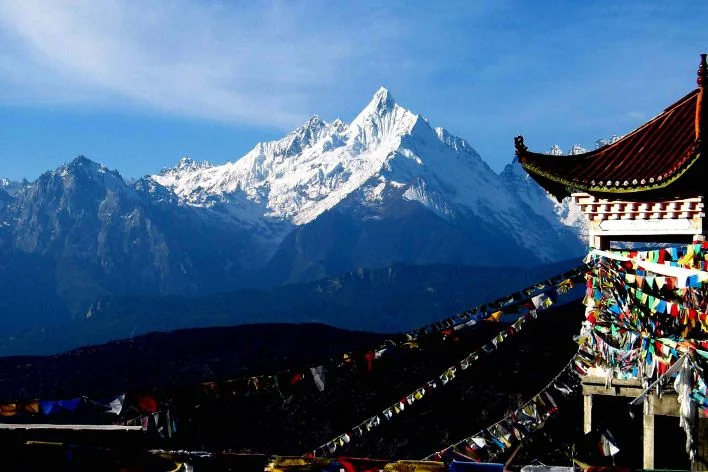
Traveling along the northern route of Yunnan, Shangri-la is the last stop for most travelers . It is home to several remote temples, rugged scenery and is the start of the Tibetan world.
Originally called Zhongdian, this place has attracted travelers since it was declared the location described on the novel The Lost Horizon written by the British writer James Hilton .
While we cannot confirm or deny James Hilton intention, the real Shangri-la exists today. The real scenery you will witness here is awe-inspiring, and the people are some of the warmest heartiest in the world.
If you cannot make a Tibet tour , Shangri-la is a pretty popular runner up to get a taste of Tibetan cultures. However, I would still suggest a trip into western Sichuan if you are craving Tibetan culture and cannot travel into the Tibet Autonomous Regional.
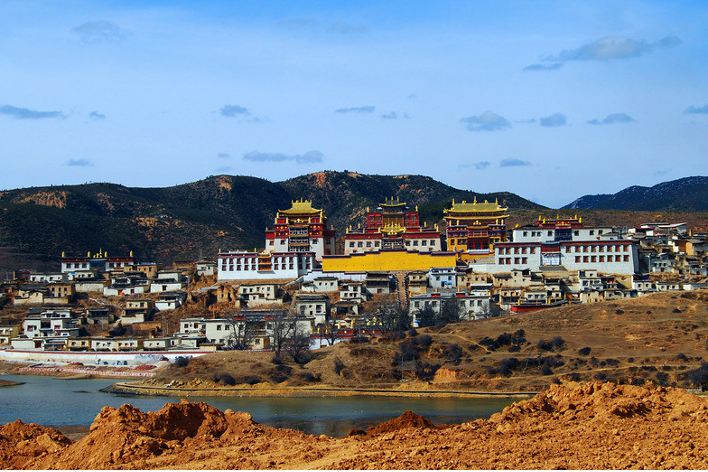
Within Shangri-la there are Tibetan towns, named Gyeltang or Gyalthang, where you can experience the daily life of Tibetan people.
About an hour’s walk north of the town is the Ganden Sumtseling Gompa. One of the main reasons people to come here is to see the little Potala Palace. This monastery was built based on the layout of the Potala Palace in Lhasa, and is home to countless Tibetan Buddhist treasures.
The view of town from the top of Ganden Sumtseling is gorgeous. A sunset from here is particularly picturesque among the tinkling bells and fluttering prayer flags.
Shangri-la is a wonderful place to get off the beaten track.
I encourage you to spend some time trekking or horse riding to explore the surrounding areas. There are many less visited monasteries and villages.
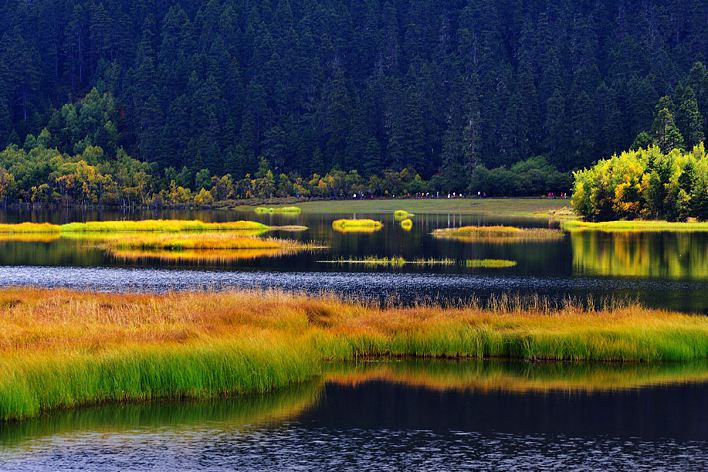
There is a severe lack of reliable public transportation in these remote areas, so be prepared to hire a local driver for a couple of days or consider organizing a private tour with a local guide who will share with you the intricate details of her culture.
When visiting in Shangri-la, I suggest you spend a day at Pudacuo National Park, which is composed by two beautiful lakes, Bita Hai and Shudu Lake.
Fed by small streams from the snow mountains encircled, Bita Hai Lake resembles a trumpet shell. The picturesque scenery of the pure green water with snow mountains and trees reflecting in it will offer you a great photography chance. The Shudu lake is home to lush plants and various wild animals.
Shangri-la is also popular for being the “backdoor” access to Yunnan Province from Sichuan (the main and easier route being the train Chengdu-Kunming). Be aware that for enter (or exit) Yunnan from Shangri-la you’ll have to travel by bus through the Tibetan Plateau, which isn’t always opened to foreigners and it may take up to two days.
SDC’s cheap hostel recommendation in Shangri-la: Shangri-La Lamtin Youth Hostel .
SDC’s hotel recommendation in Gyalthang (it’s not that cheap but it’s were I slept and it’s awesome, check the pics of the bedrooms!): Shangri-la Gyalthang Dzong Hotel .
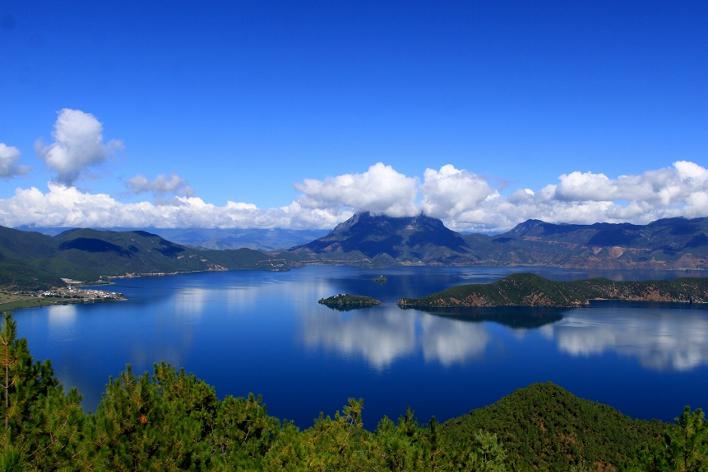
This forest lined lake overlaps the remote border between Yunnan – Sichuan provinces . It is home to several Tibetan, Yi as well as Mosuo minority villages.
The stunning scenery and ethnic cultures are two main features that attracts thousands of visitors.
A visit to the Lugu usually can be started from Luoshui. The lake, was formed by two sinking faults, and this high alpine lake sits 2,685 m. (8,809 ft.). Most people say it is shaped like a horse’s hoof – long from north to south, and narrower from East to West.
The lake which is surrounded by hills is filled with inviting clear water, that makes it easy to see the fish swimming within. The forest that protects the lake if full of dense trees and fresh mountain.
Lugu Lake is a place that has not been disturbed by the other economic developments and pollution; its’ natural beauty has been retained.
The weather is pleasant – it is cool in summer and warm in winter.
From Luoshui you can visit several islands on the lake by dugout canoe: Liwubi Island is the largest island where you can practically wade across to a spit of land in Sichuan; Heiwawu Island is in the center and has a variety of birds living on it; the smallest is Nixi Island, an oblong rock covered with shrubs and moss.
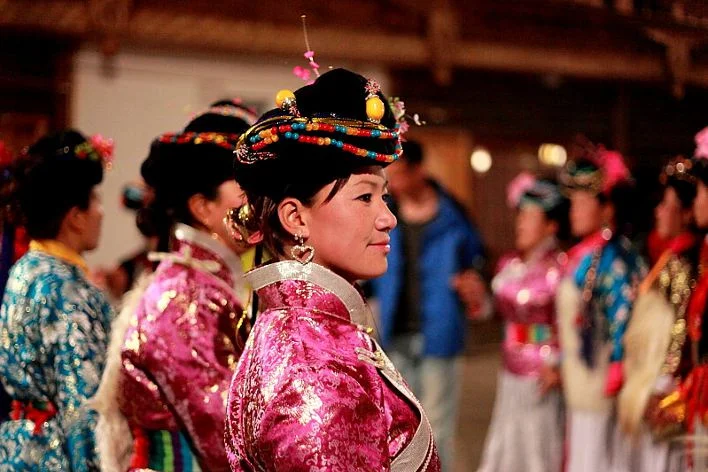
One of the main reason Lugu Lake has maintained its’ mystery and charm is because the Mosuo people who live here. The Mosuo are the last practicing (almost) matriarchal society in the world .
Mosuo women never marry and never cohabit, instead they are free to choose as many lovers as they like throughout their lives.
Children are brought up by women, and use the surname of their mothers. Families are composed of the members of the matrilineal kind. Women hold the principal positions in the society, forming a modern day ‘woman’s kingdom’, which adds mystique to this magical place.
The best time to visit Lugu Lake are April to May, and September to October, when the weather is dry and mild.
In order to reach Lugu Lake you’ll have to take a bus or private minibus from Lijiang (it should take around seven hours to arrive here).
p.s. You can enter Sichuan also through Lugu Lake. You’ll have to take a bus till Xichang (the trip takes about seven hours) and then a train till Chengdu (you may want to stop at Emei Shan, one o the holy Buddhist mountains and Leshan, where you can admire the biggest statue of Buddha in the world).
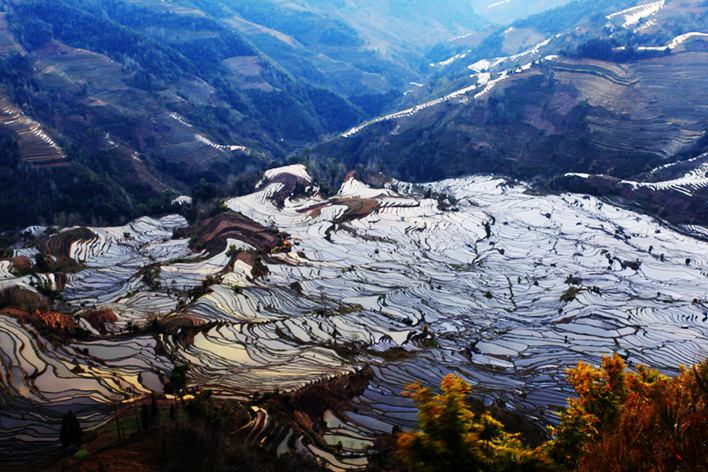
Yuan Yang Rice Terraces
Yunnan is a destination that is never lacking of natural beauty. However the last place I want to recommend to you is famous for its spectacular man made sights.
The famed rice terraces are slopes claimed from nature for cultivation in these hilly and mountainous areas. Some are hundreds or even thousands of years old.
Yuan Yang, located in the south of Yunnan, is one of the two most popular places to capture this unique sight in China. Fashioned over hundreds of years by the ancient Hani people, Yuan Yang Rice terraces cover roughly 125 sq. km. (48 sq. mi.).
A proper trip to the rice terraces can be done in two days when driving from Kunming. For those willing to spend more time a three days visit offers a chance to explore deeper into the local culture.
The scenery here is amazing and each year Yuan Yang attracts numerous photographers who flock here to capture the spectacular sunrise and sunsets that convert the terraces into pools of gold, red and silver.
Even in poor weather the views can still be breathtaking! When the fog rolls into the terraced valleys leaving only the hilltop village visible, the effect is dramatic. Many describe it as islands floating in the clouds.
Xinjie is the traditional starting point near Yuan Yang to reach the rice terraces. It is the recommended place to start any trip.
The terraces around each of the dozens of villages that you will find here have their own special characteristics which vary from season to season. Having a local guide helps to determine which terrace matches with your interest and helps to find the best ones given the time of year you visit.
To help you plan your trip, here are several popular photography places within Yuan Yang Rice Terraces:
- Duoyishu, about 25 km. (16 mi.) from Xinjie, has the most spectacular sunrises and is one you should not miss.
- Bada and Laohuzui are two of the best places to capture the sunsets. The scenery can be mesmerizing.
- Longshupa Scenic Spot is famous for its closest views of the terraces, while Mengpin is splendid for the bird’s eye view of the terraces.
Besides these landscapes, the unique mushroom-shape Hani houses and Hani costumes are also great for photography.
The rice harvest will traditionally occurs in early September and the fields will remain dry till December when flooded again. The fields are then again filled with water in December.
I advise you to plan your trips from January to March, when the seas of clouds above the terraces are most likely to be witnessed. In early spring according to the Chinese lunar calendar (from late February to March), the terraces are filled with wild flowers, including pink peach blossom and white pear blossom.
Yuan Yang lies on the Tropic of Cancer, so the climate is neither extremely hot nor cold.
However, it is cooler in morning and evening, and the sun is very strong at noon. So pay attention to the sun and wear proper protection. Moreover, T-shirts and shorts can be worn all year round, but you are advised to take a jacket.
In addition to capturing the picturesque scenery, exploring the unique Hani ethnic cultures at the surrounding villages is also an interesting experience not to miss. Participate in a local country fair, during which the entire minority people dress in colorful ethnic costumes, you will find it is very lively.
p.s. Here you find all you need to know to book your hotel (or hostel) in China .
Also, bring some sunblock and sunglasses as the sun is strong. You should also try to buy a hat or a cap beforehand or when arriving. Preferably, you should also buy medicine which prevents high-altitude disease and also oxygen, if you’re to ascend the mountains.
Photo Credits: Photos by Harley Greenberg
About The Author
Harley Greenberg
Related posts.

The Stone Forest and the legend of Ashima

From Lijiang to Lugu Lake: Chronicle of a Hectic Trip

Gubeikou: Hiking on the Wild Great Wall
23 thoughts on “travel to yunnan – a complete guide to the south western province”.
Thanks so much for sharing. 🙂 zinbeauty
This website is great, thank you! I’m planning to visit Yunnan this summer. I’ve read info on the Chinese Embassy in my country about Covid-19 policies, and it says that one should refer to the dispositions given by the local authorities. I’ve tried to find out whether in Yunnan some rules still apply, but I couldn’t find anything – I can’t speak Mandarin *that* well. Do you know something about this issue? Where should I seek info?
As far as I know at the moment, there aren’t any restrictions and it’s unlikely that the situation will change this summer. However, here in China the situation can change really fast.
I have never been in Yunnan before, but spent quite some time in south east Asia. It is different word, but those are the places in my opinion worth visiting. Culture, people, way of living and the way of thinking if you want. It is great you not only visited Yunnan, but also described you journey in details here. Thank you!
Yunnan is an incredible place and culturally close to Southeast Asia
Yunnan is an extremely beautiful destination to visit also Yunnan is full of natural beauty. Next month, gonna plan to visit here. This travel guide is full of useful travel information. Thanks for sharing this informative post. Keep sharing the good work ahead……Bookmarked for the future read. If you are planning to visit Morocco, Visit us here. We are best hotels in Marrakech, Morocco
Visiting Yunnan is probably the part of my Asia trip Im the most excited about! It just seems as if there are so many beautiful places :) Im planning to visit Feilai si in Deqin, you have any tips for doing so? The mountains there seem absolutely incredible!
Hello Niclas,
the only tip I can give you for a specific spot is the following: sometimes in Yunnan is difficult to find public transportation for short trips. In this case the best way is to rent a car with a driver for a day (usually is not expensive). You can ask to your hotel reception to help you finding a driver, it shall not be too difficult
Hi. My husband and I are thinking of going to Yunnan from September 30th until October 4th. We are thinking of just going to one place so we are not rushing on one place to another. Which one would you recommend? Our choices are Dali, Shangri La and Lijiang.
Probably Dali is the best choice. Lijiang is too crowded and Shangri-La had a big fire on 2014 so I don’t know if it’s still a beautiful place to visit
Are night buses between Kunming and Yuanyang safe for two female travelers!?
Hello Jaimie,
yes, there are night buses
Your article has been a great help in me deciding to travel Yunnan for ten days with my boyfriend. I am living in Shanghai for three months and this is the only big trip that we will take. If I am coming from Shanghai and only have ten days.. do you recommend a specific set of places to visit? You have provided three options in this article, I wonder if you could say which you think would be most suitable? I want to spend as little time as possible travelling and being on buses (I get very travel sick). I’m aware that a lot of travelling will need to be done between places but want to keep it to as much of a minimum as possible. Maybe you could recommend routes that have night trains for example? We are most interested in seeing beautiful nature and wonderful scenery. We are both very fit so lots of climbing, hiking, cycling etc would be wonderful. Thanks so much, looking forward to hearing your advice!
Hello Lucy,
if you have troubles traveling, the easiest itinerary is Kunming-Dali-Lijiang-Shangri La.
I think the longest trip by bus is Kunming-Dali, which is just 4 hours.
You will find a ton of nature near all these 3 cities!
Dear Furio,
I am planning a trip in spring next year.
Arrive in Kunming (one day), onwards to Dali (one night), then Lijiang (one night), Tiger Leaping Gorge, then back to Lijiang. Onwards to Zhongdian. Have not decided whether to go onwards to Chengdu or back to Kunming to catch an international flight out of China.
I know I won’t be able to see all recommended places so my priorities will be Lijiang, TLG and Zhongdian.
Due to a tight schedule and budget, what’s the fastest way, other than flights? Train or bus? Will I be able to save if I take overnight buses or trains?
Hello Audry, you really have a tight scheduling here…
If your priority is Lijiang, I’d catch a night train Kunming – Lijiang to save time (although personally I prefer Dali to Lijiang).
Zhongdian is only 2-3 hours by bus from Lijiang, and the Tiger Leaping Gorge is on the way, thus in this case a night train / bus is not needed.
Yes, China is pretty safe.
Dear All, I would like to visit Yunnan for 5 days arriving on 31 December 2017. I would like to include in the itinerary : (1) Shillin Stone Forest (2) Black Dragon Pool Park (3) Jade Dragon Snow Mountain (4) Tiger Leaping Gorge and (5) Zhongdian/Shangri-la. Please add other destinations which you think should be included. It will be for 2 adults. We would like to stay at the Intercontinental in Kunming, then Grand Hyatt in Lijiang and the Songtsam in Zhongdian/Shangri-la. Is December and January a bad time to visit the places in my itinerary for Yunnan? Will cold, icy weather and snow interfere with travel? What percentage of shops and restaurants will be closed at this time of year? I look forward to your reply.
Hello Maria,
the itinerary seems ok, maybe even too much for only 5 days!
In winter Shangri-la may be cold as it’s on the Tibetan plateau
Awesome info – thank you for sharing! Is there a faster way to get to the Yuanyang area? Wondering if there’s a closer airport if we’re flying in from Beijing so we don’t have to spend as much time on a bus. Yunnan looks spectacular!
Shannon, there’re several regular flights from Beijing to different Yunnan’s cities as Kumming (the capital), Dali, Shangri-la and Lijiang. Beijing-Kumming is normally the cheapest. You can check it out in the ctrip website.
China is the safest country I’ve visited so far. And I’ve visited quite a few countries : P
Harley Greenberg is a teacher? Please tell me he isn’ t teaching English. The article is littered with mistakes.
Wow thank you for the constructive comment Ruby; keep them coming : )))
Leave a Comment Cancel Reply
Your email address will not be published. Required fields are marked *
Save my name, email, and website in this browser for the next time I comment.
Privacy Overview
Get 3 Months FREE with EXPRESS VPN
+ Best VPN For China + 30-Day Money-Back Guarantee + 24/7 Live China Customer Support + 3 Months Free on 12 Months Package
Yunnan Travel Guide
Book your individual trip , stress-free with local travel experts
- roughguides.com
- Travel guide
- Itineraries
- Local Experts
- Travel Advice
- Accommodation
Plan your tailor-made trip with a local expert
Book securely with money-back guarantee
Travel stress-free with local assistance and 24/7 support
Dr. Meiborg Christa Maria & Kiessling Andreas
We are very satisfied with the tour - Tour gudie, driver and the agency (Wendy). Always felt safe and well protected! Thank you!
Yunnan has always stood apart from the rest of China, set high on the empire’s barbarous southwestern frontiers, and shielded from the rest of the nation by the unruly, mountainous neighbours of Sichuan and Guizhou. Within this single province, and dwelling among a stew of border markets, mountains, jungles, lakes, temples, modern political intrigue and remains of vanished kingdoms are 28 recognized ethnic groups, the greatest number in any province. Providing almost half the population and a prime reason to visit Yunnan in themselves, the indigenous list includes Dai and Bai, Wa, Lahu, Hani, Jingpo, Nu, Naxi and Lisu plus a host shared with other provinces (such as the Yi or adjoining nations. Each minority has its own spoken language, cuisine, distinctive form of dress for women, festivals and belief system, and with enough time you should be able to flesh out the superficial image of these groups laid on for the tourist industry.
Brief history
- Yunnan's Far West
Southeastern Yunnan
Yunnanese food.
In recent years tourism has boomed out of all proportion to Yunnan’s remote image, bringing batallions of tour buses, souvenir stalls and loudspeaker-toting guides from far and near; the upside is improved resources geared to their needs, including backpacker cafés and companies offering cycling and trekking trips, ensuring that Yunnan is one of the easiest regions to explore in China.
The northeast of the province is home to the attractive capital, Kunming, whose mild climate earned Yunnan its name, meaning literally “south of the clouds”. A scattering of local sights – including the brilliant green, near-vertically terraced valleys at Yuanyang – extends southeast from the city towards the border with Vietnam. Northwest of Kunming, the Yunnan plateau rises to serrated, snowbound peaks, extending to Tibet and surrounding the ancient historic towns of Dali and Lijiang; there’s one of China’s great hikes here too, through Tiger Leaping Gorge. The Far West, laid out along the ghost of old trade routes, has less of specific interest but allows gentle probing along the Burmese border. Yunnan’s deep south comprises a further isolated stretch of the same frontier, which reaches down to the tropical forests and paddy fields of Xishuangbanna, a botanical, zoological and ethnic cornucopia abutting Burma and Laos – about as far from Han China as it’s possible to be.
Getting around can be time-consuming, thanks to Yunnan’s sheer scale, but the state of country buses and roads is often surprisingly good; new expressways are springing up at a regular rate and it’s an undeniable achievement that some of the lesser routes exist at all. Yunnan’s fairly limited rail network is due for expansion too, with recently completed services to Dali and Lijiang making these popular destinations more accessible than ever.
The weather is generally moderate throughout the year, though northern Yunnan has cold winters and heavy snow up around the Tibetan border, while the south is always warm, with a torrential wet season in summer.
Tailor-made travel itineraries for China, created by local experts

8 days / from 2208 USD
Sichuan Specialities: Chengdu, Temples and Pandas
Discover the Buddhist history and the natural wonders of Sichuan. From bustling Chengdu and its giant pandas, to the national parks and lake districts of Sichuan Province, to the giant Buddha statue at Leshan, this trip is perfect for those who want to discover this culturally rich part of China.

5 days / from 838 USD
Family Time in Guilin and Yangshuo
This 5-day family trip is a magnificent opportunity to experience the beautiful outdoor settings of Guilin and Yangshuo. Walk, cycle and raft through awe-inspiring scenery, including dramatic limestone karst mountains, and learn about the everyday lives of the Zhuang and Yao ethnic groups.

8 days / from 1962 USD
Sichuan Family Adventure
Sichuan is home to a rich and vibrant culture, stunning scenery and wildlife, and delicious cuisine. Spend time with Chengdu's giant pandas, trek around Mount Qingcheng, stand in awe of the world’s largest Buddha at Leshan, and much more, all with this exciting trip, which is perfect for families!
Tailor-made trips for China
According to the Han historian Sima Qian, the Chinese warrior prince Zhuang Qiao founded the pastoral Dian Kingdom in eastern Yunnan during the third century BC. The Dian were a slave society, who vividly recorded their daily life and ceremonies involving human sacrifice in sometimes gruesome bronze models, which have been unearthed from their tombs. In 109 AD the kingdom was acknowledged by China: the emperor Wu, hoping to control the Southern Silk Road through to India, sent its ruler military aid and a golden seal. However, the collapse of the Han empire in 204 AD was followed by the dissolution of Dian into private statelets.
The Dali and Nanzhao kingdoms
In the eighth century, an aspiring Yunnanese prince named Piluoge, favouring Dali for its location near trade routes beteen central and southeastern Asia, invited all his rivals to dinner in the town, then set fire to the tent with them inside. Subsequently he established the Nanzhao Kingdom in Dali, which later expanded to include much of modern Burma, Thailand and Vietnam. In 937, the Bai warlord Duan Siping toppled the Nanzhao and set up a smaller Dali Kingdom, which survived until Kublai Khan and his Mongol hordes descended in 1252.
The Muslim Uprising
Directly controlled by China for the first time, Yunnan served for a while as a remote dumping ground for political troublemakers, thereby escaping the population explosions, wars and migrations that plagued central China. However, the Mongol invasion had introduced a large Muslim population to the province, who, angered by their deteriorating status under the Chinese, staged the Muslim Uprising in 1856. Under the warlord Du Wenxiu, the rebellion laid waste to Kunming and founded an Islamic state in Dali before the Qing armies ended it with the wholesale massacre of Yunnan’s Muslims in 1873, leaving a wasted Yunnan to local bandits and private armies for the following half-century.
Modern times
Strangely, it was the Japanese invasion of China during the 1930s that sparked a resurgence of Yunnan’s fortunes. Blockaded into southwestern China, the Guomindang government initiated great programmes of rail-and-road building through the region, though it’s only recently that Yunnan has finally benefited from its forced association with the rest of the country. Never agriculturally rich – only a tenth of the land is considered arable – the province looks to mineral resources, tourism and its potential as a future conduit between China and the much discussed, but as yet unformed, trading bloc of Vietnam, Laos, Thailand and Burma. Should these countries ever form an unrestricted economic alliance, the amount of trade passing through Yunnan would be immense, and highways, rail and air services have already been planned for the day the borders open freely.
Yunnan's Far West
Southwest of Xiaguan, Yunnan’s far west bumps up against the Burmese border, an increasingly tropical area of mountain forests and broad valleys planted with rice and sugar cane, all cut by the deep watershed gorges of Southeast Asia’s mighty Mekong and Salween rivers (in Chinese, the Lancang Jiang and Nu Jiang, respectively). Settlements have large populations of ethnic minorities, and mainstream China has never had a great presence in the region; indeed, at times it’s still often unclear whether rules and regulations originate in Beijing or with the nearest officer in charge.
The far west’s main artery, the underused G56 Expressway, roughly follows the route of the old Burma Road, built during World War II as a supply line between British-held Burma and Kunming, from where goods were shipped to China’s wartime capital, Chongqing. Something of the road’s original purpose survives today, with towns along the way, especially Ruili, right on the Burmese frontier, still clearly benefiting from the cross-border traffic. With the exception of geologically unsettled Tengchong, however, sights are few and – unless you’re heading into Burma – the main point of visiting is simply to experience a fairly untouristed, if not actually remote, corner of the country, not least along the upper reaches of the Nu Jiang Valley.
Transport through the far west is by bus, though you can also fly to Tengchong and the district capital Mangshi, just a couple of hours by road from Ruili. Some minor scuffles along the Burmese border in recent years, plus the area’s perennial drug-trafficking problems, mean you’ll encounter military checkpoints in the region, where you have to show passports and wait while vehicles are checked for contraband. The weather is subtropically humid, especially during the wet season between May and October, when landslides frequently cut smaller roads.
Tours to the Nu Jiang Valley
Tourism to the Nu Jiang Valley is in its infancy, with regional agencies offering guided treks – currently the best way to explore the area. While tours organized from Dali and Lijiang are likely to access the river valley via Xiaguan, agencies in Shangri-La may be able to organize a trek west towards the far north of the area, depending on the time of year. Be wary trekking in winter and spring, however, when high rainfall makes landslides common.
Trekking from Dimaluo
From Dimaluo it’s possible to trek to neighbouring valleys and avoid having to catch the bus all the way back down to Liuku. You’ll need a guide, though: expect to pay around ¥250 per day, including very basic food and accommodation.
One popular option begins with a stiff, two-day hike across the Nushan range to Cizhong (茨中, cízhōng), a village with another stone church in the parallel Lancang River valley; the locals even make their own red wine for Communion, though Christianity has been laid on top of much older, animist beliefs. There is an irregular, fair-weather bus service south from Cizhong to Weixi (维西, wéixī; 6–10hr), from where you can catch a bus to Lijiang via Shigu.
The region southeast of Kunming is a nicely unpackaged corner of the province, and there are good reasons, besides the Vietnamese border crossing at Hekou, to head down this way. Amiable, old-fashioned Jianshui boasts a complement of Qing architecture, and an unusual attraction in nearby caves, while Yuanyang is the base for exploring the cultures and impressive terraced landscapes of the Hong He Valley. Jianshui and Yuanyang can be tied together in a trip to the border, or each are directly accessible by bus from Kunming.
The access point for viewing the rice terraces is Yuanyang, a district 80km south of Jianshui and 300km from Kunming. The name covers two settlements: the riverside township of Nansha (元阳南沙, yuányáng nánshā), terminus for Jianshui buses; and, where you actually want to base yourself, XINJIE (元阳新街镇, yuányáng xīnjiēzhèn), 30km uphill at the top of a high ridge. Xinjie is a small, untidy brick-and-concrete town which becomes a hive of activity on market days (every five days), when brightly dresssed Hani, Miao, Yi and Yao women pour in from surrounding villages.
Yunnanese food splits broadly into three cooking styles. In the north, the cold, pastoral lifestyle produces dried meats and – very unusually for China – dairy products, fused with a Muslim cuisine, a vestige of the thirteenth-century Mongolian invasion. Typical dishes include wind-cured ham (火腿, huŏtuĭ), sweetened, steamed and served with slices of bread; dried cheese or yoghurt wafers (乳扇, rŭshān or 乳饼, rŭbǐng); the local version of crisp-skinned duck (烧鸭, shāoyā), flavoured with Sichuan peppercorns – you’ll see drum-shaped duck ovens outside many restaurants – and a tasty fish claypot (沙锅鱼, shāguō yú).
Eastern Yunnan produces the most recognizably “Chinese” food. From here comes chicken flavoured with medicinal herbs and stewed inside a specially shaped earthenware steamer (气锅鸡, qìguōjī), and perhaps the province’s most celebrated dish, crossing-the-bridge noodles (过桥米线, guòqiáo mǐxiàn), a sort of individualized hotpot eaten as a cheap snack; you pay by the size of the bowl. The curious name comes from a tale of a Qing scholar who retired every day to a lakeside pavilion to compose poetry. His wife, an understanding soul, used to cook him lunch, but the food always cooled as she carried it from their home over the bridge to where he studied – until she hit on the idea of keeping the heat in with a layer of oil on top of his soup.
Not surprisingly, Yunnan’s south is strongly influenced by Burmese, Lao and Thai cooking methods, particularly in the use of such un-Chinese ingredients as lime juice, coconut, palm sugar, cloves and turmeric. Here you’ll find a vast range of soups and stews, roughly recognizable as curries, displayed in aluminium pots outside fast-turnover restaurants, and oddities such as purple rice-flour pancakes sold at street markets. The south is also famous in China for producing good coffee and red pu’er, Yunnan’s best tea.
Top image: Dali, Yunnan, China © Jakrit Jiraratwaro/Shutterstock
Discover more places in China
- Xishuangbanna
The Rough Guides to China and related travel guides
In-depth, easy-to-use travel guides filled with expert advice.

Find even more inspiration here

Planning your own trip? Prepare for your trip
Use Rough Guides' trusted partners for great rates

written by Andy Turner
updated 06.09.2021
Ready to travel and discover China?
Get support from our local experts for stress-free planning & worry-free travels.
- Where to stay
- Travel advice

- [email protected]
- 86-773-286-5632 (Intl rates apply)
Yunnan Travel Guide
Yunnan is reopening to tourists and you can travel without any restrictions and quarantine. You are no longer required to prepare a negative acid test and the certificate of health code and travel code.
Yunnan is a province that encompasses the climate in four seasons. It is suitable to travel all year round. Visitors will not only feast on their stunning scenery of snow mountains and glaciers but also their exotic ethnic culture and customs.
Why Should Visit Yunnan in a Lifetime
- 1. Yunnan Province has the largest number of minority groups in China. The 25 minorities consist of an amazing array of ethnically diverse cultures, tourists are willing to experience minorities' cultures and customs that differ from the cities they live.
- 2. The majestic nature beauty : The ancient city of Lijiang, the spring city of Kunming, the Tibetan inhabit of Shangri-La, Dali, the famous Cang Mountain, Erhai Lake, the scary Jade Dragon Snow Mountain, Lugu Lake, etc...
- 3. The spring-like weather : the city of Kunming, Dali is located on the low latitude of the plateau, characterized by a small temperature difference and an average temperature of around 12℃(54F) ~ 22℃(72F). The places are suitable for travel all year round.
- 4. The Food : Yunan food is famous for its wide range of ingredients and different ways of cooking. The dishes you must try are: Crossing the Bridge Rice Noodles (过桥米线), Yak Meat Hotpot (牦牛肉火锅), Steam Pot Chicken (汽锅鸡), Wild Mushroom Hotpot (野生菌火锅), Fried Rice-Flour Cake (炒饵块).
Best Places to Visit in Yunnan
Top 1. kunming - the city of ever spring.
Kunming is the capital city of Yunnan, and while reputed as a flower city that attracts tourists from all over China. Owning China's largest flower market that delivers to all over the country every day.
Kunming endows with many historical temples and stunning landscapes like Stone Forest; Kunming Western Hill (Xishan); Dongchuan Red Land; Green Lake (Cui Hu); Dian Lake (Dianchi)...
Top 2 Lijiang - Old Towns and Snow Mountains
Lijiang has three famous ancient towns - Dayan, Shuhe, and Baisha, which were listed as UNESCO World Heritage Sites and inhabited by Naxi People. Lijiang is also renowned as an important gateway to the Ancient Tea Horse Road , the Tea Horse Museum and Lashihai Tea Horse Trail are worth exploring.
Things to see and do in Lijiang: 1. the Jade Dragon Snow Mountains; 2. Lugu Lake · 3. Dayan Ancient Town; 4. Shuhe Ancient Town; 5. Black Dragon Pond Park; 6. Lashihai Town
Top 3 Dali - Explore by Bike
Dali, being the capital of the Dali Bai Autonomous Prefecture, was the capital of the ancient Nanzhao and Dali kingdoms, and served as the political, economic, and cultural center of ancient Yunnan for more than 500 years.
The place we visit is commonly known as Dali Old Town, and the other must-sees are Erhai Lake, bike or take a boat ride there, Shuanlang Old Village, Xizhou Bai Village, composed of the most well-preserved Bai-style architecture complex; Three Pagodas, the simple of the region.
Top 4 Shangri-La - Diqing Tibetan Autonomous Prefecture
Formerly known as Zhongdian County, located at the intersection of Yunnan, Tibet, and Sichuan provinces, with an average altitude of 3,380 meters. Shangri-la featured vast primitive forests, holy snow-capped mountains and glacial lakes, and unique Tibetan culture.
Best places to visit in Shangri-La: Potatso National Park · Songzanlin Lamasery · Napahai Natural Lake Reserve, Balagezong Grand Canyon, Tiger Leaping Gorge
If You have enough Time to Travel, Go a Bit Deeper to Explore...
Extend your trip to see more authentic Yunnan, the Dai ethnic groups and wild tropical forest in Xishuangbanna, the gorges rice terraces in Yuanyang; Laid back in the hot spring resort in Tengchong; One of the important cultivation regions of the Pu'er tea - Pu’er City...Yunan has a lot more to discover.
Contact us via WeChat
for any inquiry
Scan ChinaTravel QR Code
Top Attractions in Yunnan
Old Town of Lijiang - Lijiang
Green Lake (Cuihu) -Kunming
Stone Forest - Kunming
Jade Dragon Snow Mountian - Lijiang
Tiger Leaping Gorge - Lijiang
Dali Old Towns - Dali
- Kunming Attractions
- Lijiang Attractions
- Dali Attractions
- Shangri-la Attractions
- Xishuangbanna Attractions
Best Time to Visit Yunnan - Weather & Climate
Generally speaking, Yunnan is suitable for travel all year round, among the four seasons, the best time to visit is from October to April , the weather is dry and pleasant at this time.
Due to the different topography and latitudes, you can experience seasonal scenery from winter to summer within one province, according to the regions you visit.
February to April is the best time to visit Yunnan as the spring warms up earlier than in the north. Luoping is the best place to see the rape flowers . The "spring city" of Kunming is in its most pleasant season, and the peach blossoms in southeastern Yunnan are just in time.
In April , you can go to Xishuangbanna to engage in the grand Water-sprinkling Festival. Furthermore, it is time for the azalea blooms in Laojun Mountain in Lijiang.
May to August is the best travel time to enjoy the summer scenery of Shangri-La ; in addition, lotus flowers are in full bloom in Puzhehei and Damei in southern Yunnan.
July and August is the season when the wild mushrooms are in harvest, savor your taste buds for the meals of mushroom hot pot.
Summer is the rainy season in the south and southwest of Yunnan, The driving road in the mountain area was use to blocked by a landslide. Should pay attention to the weather forecast when you travel in this region.
From September to November , you can visit Dali to experience the fishing festival in Erhai Lake. While in November, the hundred-year-old ginkgo village of Tengchong offers the most beautiful golden autumn scenery in Yunnan.
Xishuangbanna is in its dry season with pleasant weather. You can also enjoy the world-famous Yuan Yang Terraces offer stunning views during this season.
How to Plan a Trip to Yunnan
Yunnan is the most diverse country in China, Take a trip to the must-see regions Kumming, Lijiang, and Dali in Yunnan basically takes at least one week . However, if you want to cover all the highlights, suggest spending two weeks or more discovering the region from south to west.
So Where to start the trip? How to arrange the classical 7-day itinerary? How to get around Yunnan? To find out the answers in this article, click for Yunnan trip planning >>
How Many Ethnic Groups in Yunnan
Besides its Han Chinese majority, China has 55 ethnic minorities, 51 of which can be found in Yunnan Province, of which a subgroup of 25 both have a population in excess of 5000 and have lived for generations in enclaves in the province.
There are 15 ethnic minorities that are indigenous to Yunnan. These include the Bai, Blang (aka Bulang), Dai, De'ang (aka Deang), Drung (aka Dulong), Hani, Jingpo, Jinuo (aka Jino), Lahu, Lisu, Naxi, Nu, Wa, Pumi, and Yi.
Four minorities Dai, Hani, Yi, and the Zhuang have populations that exceed one million.
Moreover, among all the above ethnic groups, the national majority of Han, Hui, Miao, Shui, and Yao are distributed in different regions of Yunnan.
Top Recommended Yunan Tours
- 8-Day Authentic Yunnan Discovery
- 4-Day Lijiang and Magnificent Tiger Leaping Gorge Tour
- 6-Day Yunnan Xishuangbanna Tour
We can also customize your own trip based on your group size, budget, interests, preferences, and other requirements. Please contact us .
Amid the coronavirus crisis, any customer who has booked a trip with us can cancel or reschedule it for free .
Request a custom itinerary today and get one step closer to your personalized trip
Create Your Trip
- ✉️
The complete Travel Guide to Yunnan (云南), the most diverse Chinese province
- April 10, 2024
Yunnan is one of the most beautiful and diverse provinces in China. In this travel guide, you can find the top things to do and see.
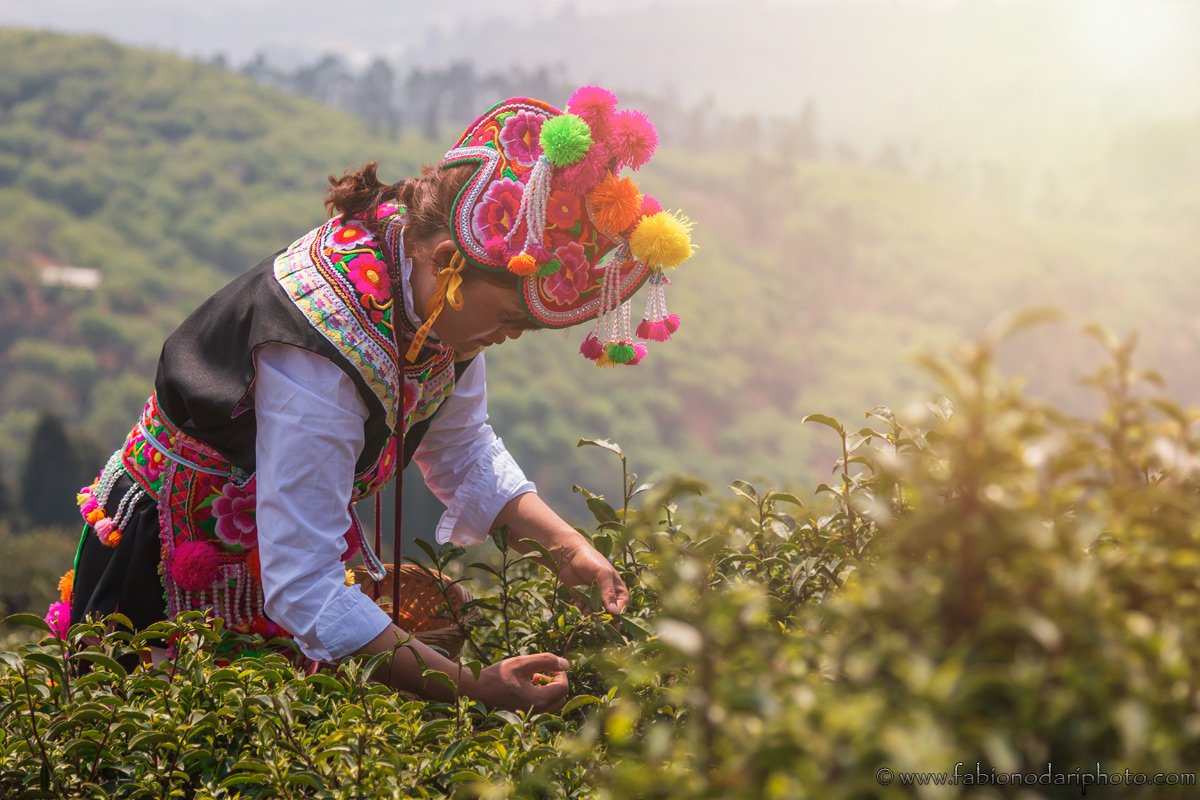
Yunnan Province in China is a beautiful, diverse, landlocked region known for its stunning natural beauty, rich cultural heritage, and delicious cuisine. With its vibrant cities, picturesque countryside, and unique ethnic minority groups , Yunnan offers travellers a unique and unforgettable experience.
One of the main reasons why Yunnan is such a unique province is its border position, far away from Beijing. There is a local saying: “Yunnan, where the Mountains are High, and the Emperor is Far, Far Away.” Even though this is an easily accessible province, historically, this wasn’t the case, making the local culture so different from the rest of the country.
Getting to Yunnan

Yunnan is located in southwestern China and is easily accessible by air, train, or bus. The province’s capital city, Kunming , is a central transportation hub with several daily flights to and from all major Chinese cities. Alternatively, you can also get to Kunming by train. As always, when travelling in China, the best website in English to book trains, hotels, and flights is Trip.com. Other websites have fewer options and are generally more expensive .
In the past few years, the government has built new high-speed railways that connect most of the province. You can now get to Shangri-la in the north, Xishuangbanna in the south, and almost every city. In short, travel to and from Yunnan and all around the province has never been easier.
Things to do in Kunming, the spring city
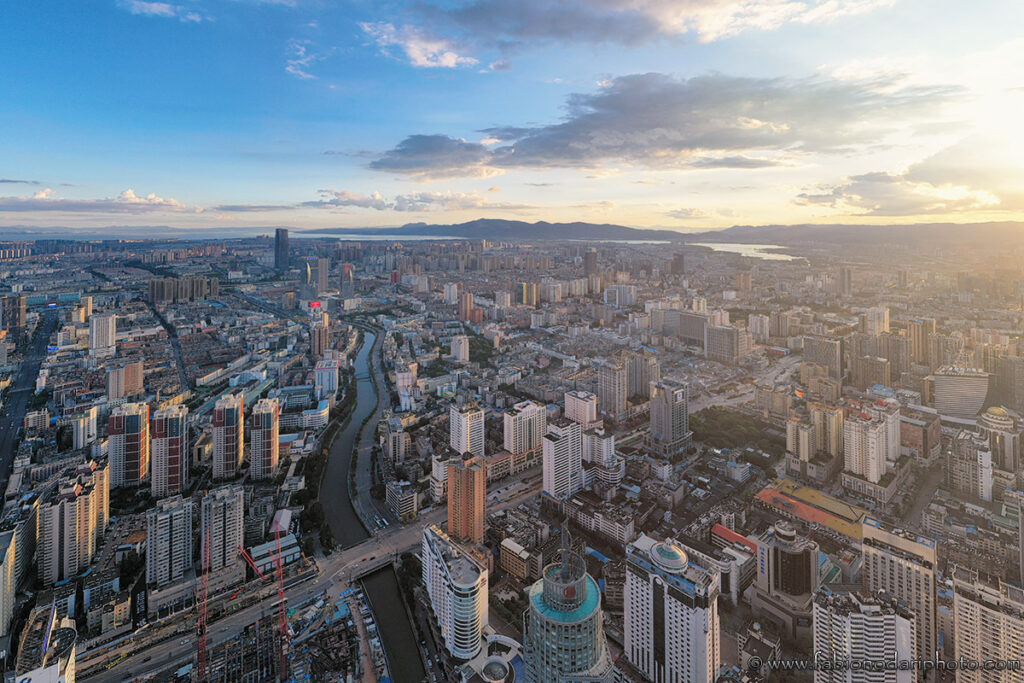
Kunming, the capital, is known for its mild climate. The city is also home to several cultural and historical attractions. Here are some of the top things to do and see in Kunming ( here you can find my complete Kunming Travel Guide ):
- Stone Forest 石林: The Stone Forest is a natural geological wonder made up of towering karst formations. It is a popular attraction in Kunming and is a must-see for anyone visiting the city.
- Kunming Old Town 古城: Kunming’s Old Town is a charming area full of narrow streets, ancient temples, and traditional shops and restaurants. It is a great place to wander and explore, and you can learn more about the city’s history and culture, although, like many other similar places, the town is not old: it has been recently renovated.
- Western Hills 西山: The Western Hills are a series of picturesque hills and forests on Kunming’s western edge. The area has many temples, cultural attractions, and beautiful city views.
- Golden Temple 金殿: The Golden Temple is a Buddhist temple on the top of Mingfeng Mountain. It is known for its beautiful architecture and intricate gold leaf decorations and is a popular destination for tourists and locals.
- Yunnan Provincial Museum 云南省博物馆: The Yunnan Provincial Museum is a great place to learn more about the history and culture of Yunnan province. It has an extensive collection of artifacts and exhibits that showcase the region’s diverse history and culture and is free of charge.
- Green Lake Park 翠湖: Located in the city’s center, Green Lake Park is a popular spot for locals and tourists. It is beautiful in early spring when all the trees bloom.
Interesting places around Kunming
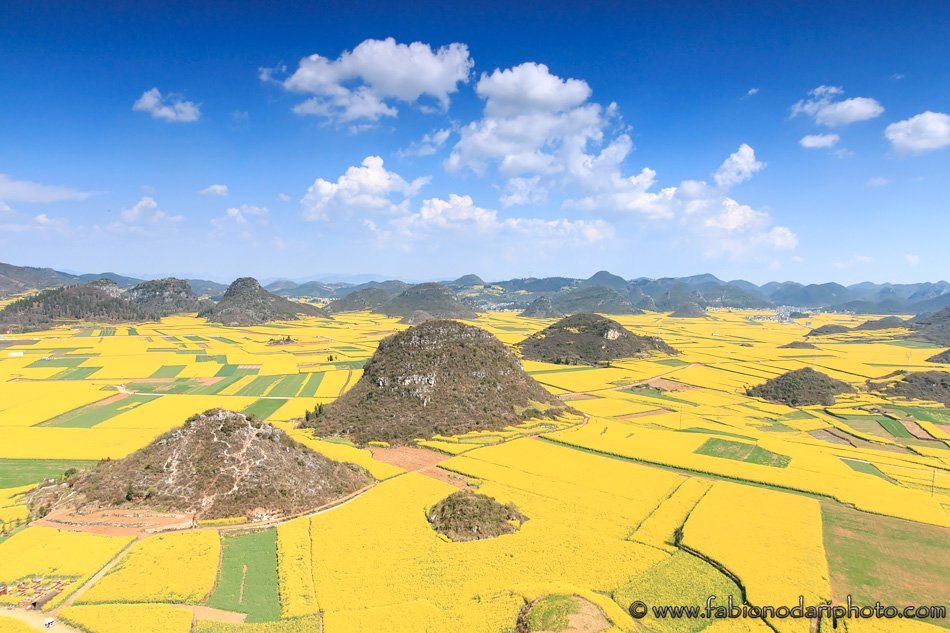
- Luoping 罗平: One of the most interesting places to visit is Luoping. Famous for its huge rapeseed flower fields, remember that it’s worth going there only between February and April. I wrote a detailed guide about it that you can find here.
- Yiliang 宜良: Yiliang is a small town located only 1 hour by bus from Kunming. It’s famous for its Roast Duck , the Colored Rice Fields and the beautiful Jiuxiang caves.
- Mile 弥勒 : another small town located only 30 minutes from Kunming, has become popular thanks to a new art park called Dongfengyun (东风韵). Here you can read my travel guide.
- Fuxian Lake 抚仙湖: Fuxian is the third largest lake in Yunnan and the third deepest in China. If you’re planning a trip without straying too far from Kunming, Fuxian is the right option. Here you can find my detailed travel guide.
- Puzhehei 普者黑: famous for the typical karst hills, the numerous rivers and ponds, and many caves. Summer is the best season to visit when the ponds are filled with lotus plants in full bloom, which makes the landscape even more beautiful. You can find my travel guide here.
Top things to see in Southern Yunnan
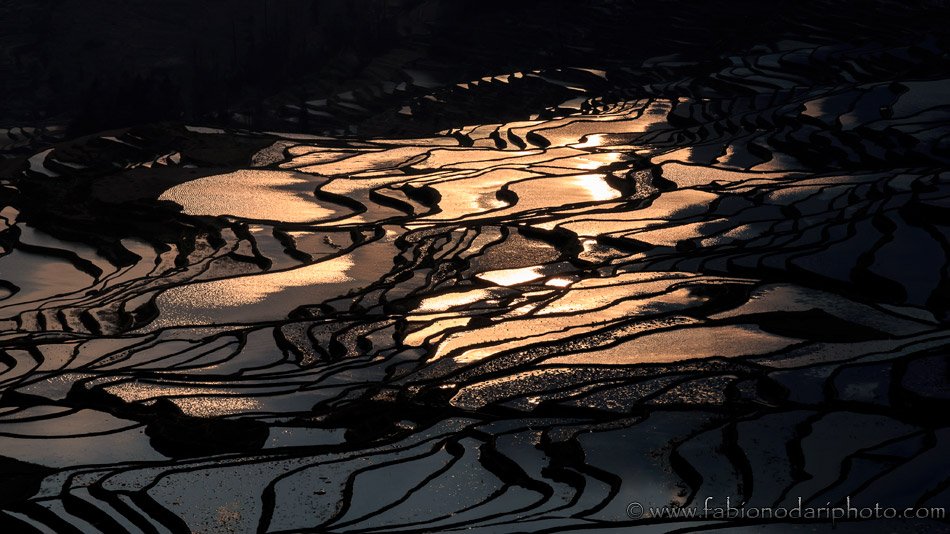
- Yuanyang Rice Terraces 元阳: these are my favorite rice terraces in China. Since 2013, they have been part of the UNESCO World Heritage sites. Keep in mind that the best season is during winter. Here you can find more info.
- Xishuangbanna 西双版纳: located on the border between Myanmar and Laos and crossed by the Mekong River, Xishuangbanna is often considered the Thailand of China. Due to its remote location in a province, Yunnan, which historically is also one of the remotest in China, not many people have heard about this place. Here you can find my travel guide.
- Pu’er 普洱: you might have heard about this place if you like drinking tea. In the past few years, it has become one of the most popular types of tea in China. The city, formerly known as Simao, doesn’t offer that much, but you can explore the surrounding tea and coffee plantations. Fun fact: 99% of the coffee produced in China comes from Yunnan, and Pu’er is an important production center.
Top things to see in Northern Yunnan
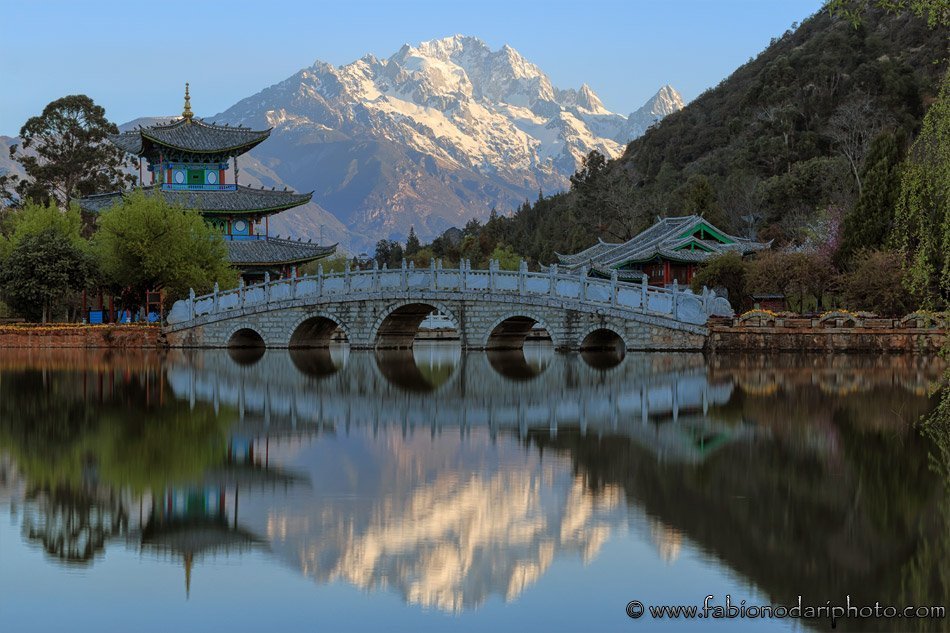
- Lijiang 丽江 : this is likely the most famous place in Yunnan. Some people think it’s too touristy, and they have a point. Nevertheless, a visit to Yunnan is incomplete until you visit the Old Town ( here is my guide ). The good thing about Lijiang is that it can be used as a starting point to explore other nearby places like Jade Dragon Snow Mountain 玉龙雪山.
- Tiger Leaping Gorge 虎跳峡 : at a maximum depth of approximately 3,790 meters (12,434 feet) from the river to the mountain peak, Tiger Leaping Gorge is one of the deepest and most spectacular river canyons in the world. It can be visited with a day trip (but 2 days are better) from Lijiang.
- Dali 大理: along with Lijiang, Dali is the other most famous place in Yunnan. The old town used to be the capital of the ancient Nanzhao Kingdom. It’s a touristy spot like Lijiang, but it’s worth visiting ( here is my guide ).
- Shangri-La 香格里拉: the principal city of the Tibetan area, Shangri-La lies at an elevation of over 3000 meters. You can visit the ancient town, destroyed in a fire a few years ago, that has since been rebuilt. It still attracts many tourists, especially during the summer when people try to escape from the scorching heat in the rest of China. Here is my Shangri-La travel guide . I recommend spending a few days there to explore more remote areas, such as Yubeng . You can find my guide to Shangri-La here.
- Shigu 石鼓: located along the ancient Tea Horse Road, Shigu is also famous for the 140-degree bend of the Yangtze River. You can hike a small hill to have a beautiful aerial view of the landscape. Here is my detailed guide.
- Baisha 白沙 and Shuhe 束河 old towns: these two old towns are located a few km from Lijiang, and you can visit both of them with a day trip. Recommended. Here is my guide to Baisha.
- Shaxi 沙溪: halfway between Lijiang and Dali, Shaxi is a small village almost forgotten by tourists. It’s a city of farmers, but since 2000, the local government has started a program of renovation of the most important buildings. In my opinion, it’s worth spending a night there. Here you can find my guide.
- Dashanbao 大山包: one of the less known places in Yunnan, this is the right place to visit if you are mainly interested in visiting remote places with a lot of nature. Here is my travel guide.
- Dongchuan 东川: also called Dongchuan red land, this area is quite interesting to visit around autumn when the crop is harvested, and you can see the red soil, rich in iron. Here is my travel guide.
- Dulongjiang 独龙江: This is one of the most remote areas in the province where you can find the last women of the Dulong minority with tattooed faces. I’ve talked about it here.
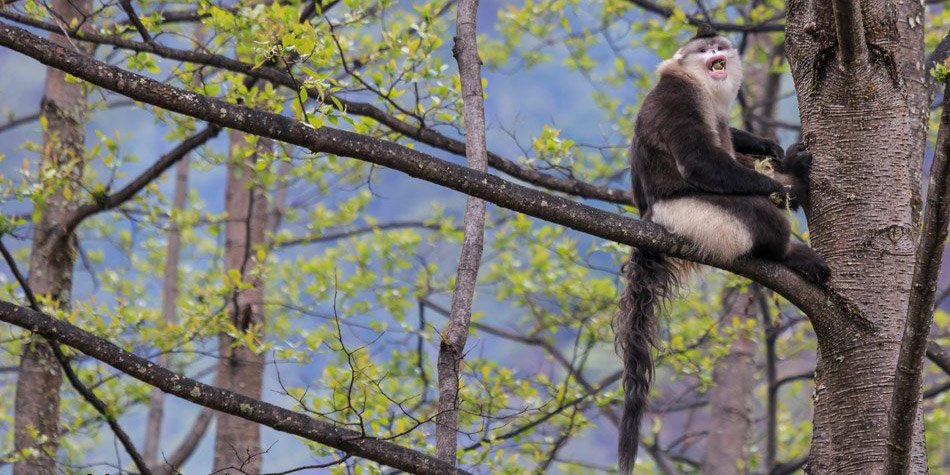
If you decide to visit Shangri-La and are interested in wildlife, don’t forget to check out Baima, where you can observe the rare Yunnan Snub-Nosed Monkey. I wrote an extensive article about the conservation efforts in the area. You can check it out here.
Safety and Health
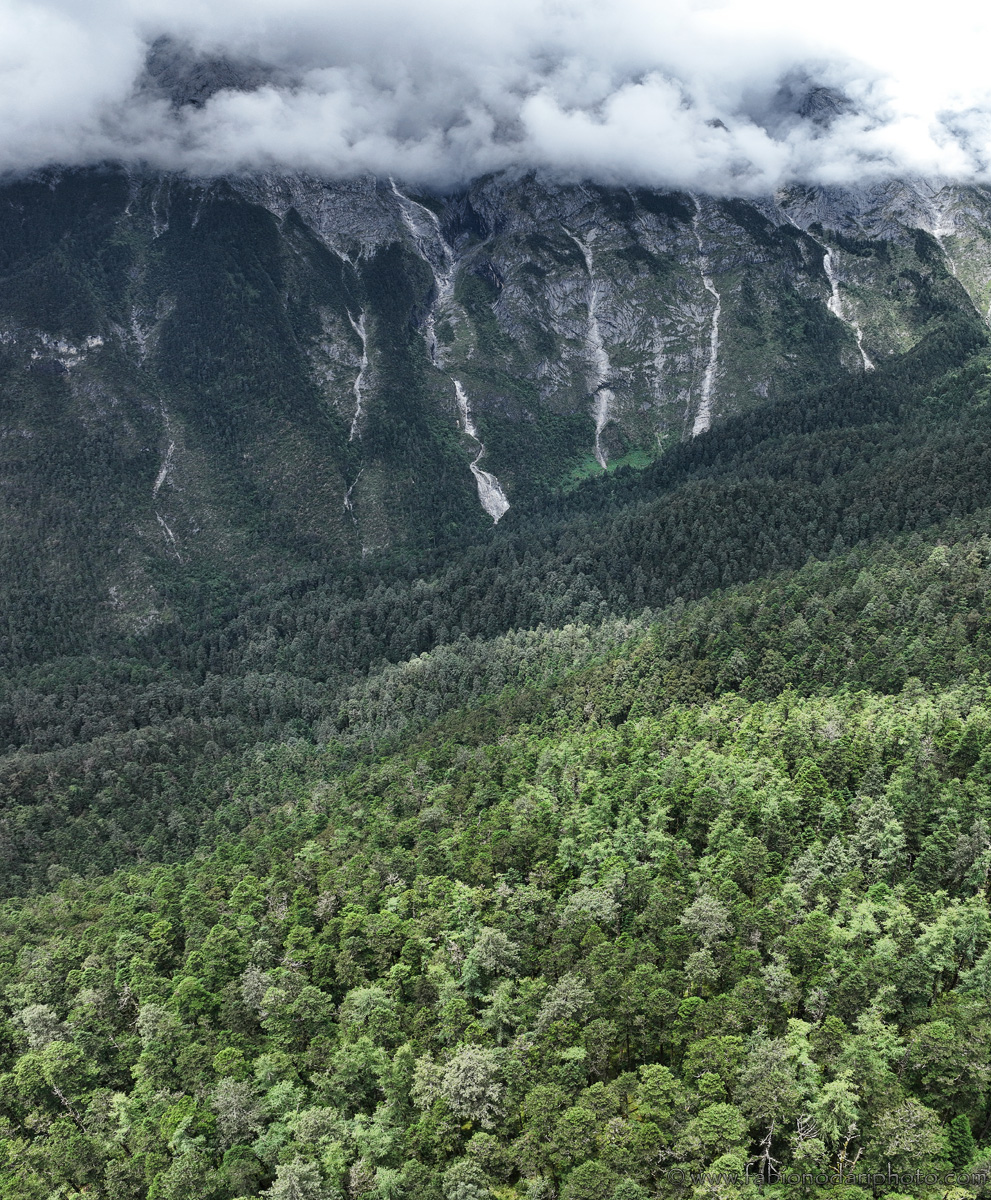
Yunnan is generally a safe place to travel. One thing to keep in mind is related to its geography. The province is mainly located at a high elevation , so you may experience altitude sickness if you are not used to it, especially if you fly from other places in China. Kunming, the capital, lies at an elevation of 1800 meters, and Shangri-La is well over 3000 meters.
In terms of personal safety, Yunnan is pretty safe. I lived there for several years, and I’ve never heard of anything particularly scammy (unlike bordering Vietnam ). This being said, always pay particular attention to your phone.
Yunnan is a beautiful and diverse region that offers travelers a unique and unforgettable experience. Whether you are interested in exploring the vibrant cities, experiencing the rich culture and traditions of the ethnic minorities, or taking in the stunning natural beauty of the province, Yunnan has something for everyone. If you must pick only ONE province to visit in China, I’d recommend Yunnan.
Here, you can find my complete travel guide to China.
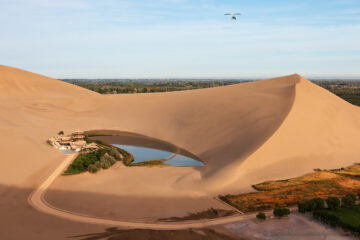
Travel Guide to Dunhuang and its surroundings
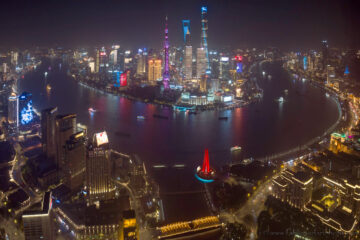
China Travel FAQ: Your Essential Guide for First-Timers

The 15 Cheapest and Most Expensive Countries to Live in 2024
Leave a reply cancel reply.
Your email address will not be published. Required fields are marked *
- Destinations
- Travel Tips
- Travel With Us
- Paid Travel Internship
- TTIFridays (Community Events)
- SG Travel Insider (Telegram Grp)

12D Yunnan Itinerary: China’s Best Kept Secret — Kunming, Dali, Lijiang, Shangri-la
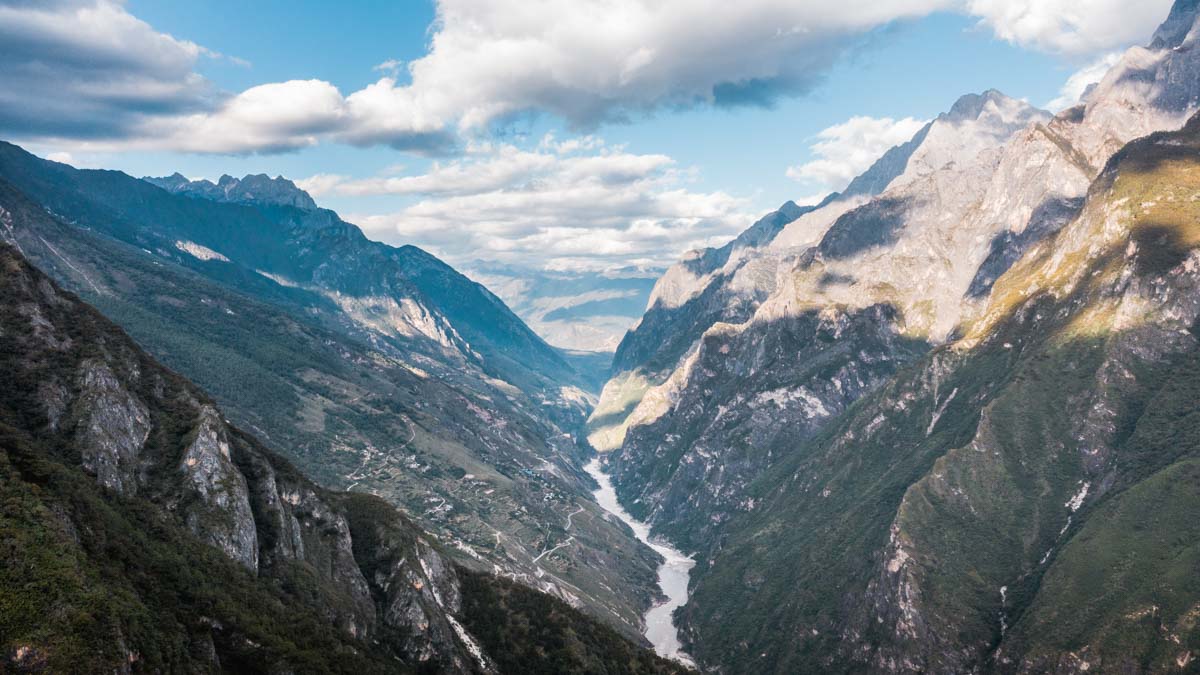
Few people realise how gorgeous this region of China is. Here’s our 12-day Yunnan itinerary with scenic views comparable to Switzerland!
First published on: 6 Dec 2019
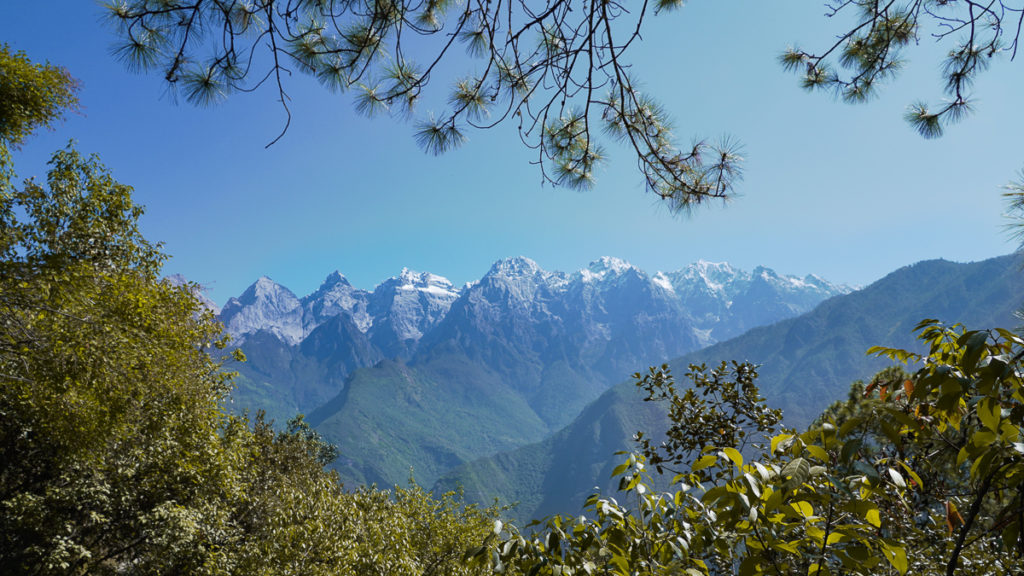
When I think of China, I think of Beijing , Shanghai , and maybe even Guangzhou. Yunnan was not even in my subconscious, let alone on my list of must-travels. But after an exhilarating 12 days around the province, I fell in love with every single city we hit.
I fell in love with the people of Kunming, the nightlife of Dali and the antiquated mystique of Shangri-la. Lijiang even took it to the next level with its iconic snow-capped wonder, the Jade Dragon Snow Mountain, and (in)famous 28-bend hike of the Tiger Leaping Gorge.
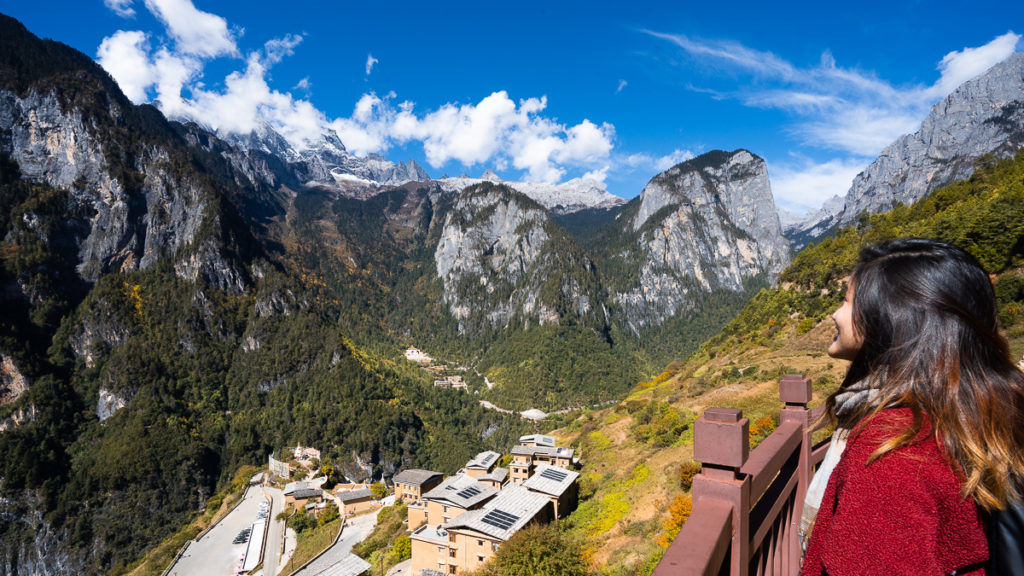
Yet, we found that not many people from all over the world flock to this region. Even though that is a plus point to many, we believe it would be such a shame if we didn’t share this not-so-little secret with the rest of the world!
So before this itinerary hits the houses of many, we recommend that you start planning your Yunnan adventure to see some of the most beautiful sights in the world. Here’s our 12-day Yunnan itinerary for China’s best secrets.
Pre-trip Essentials
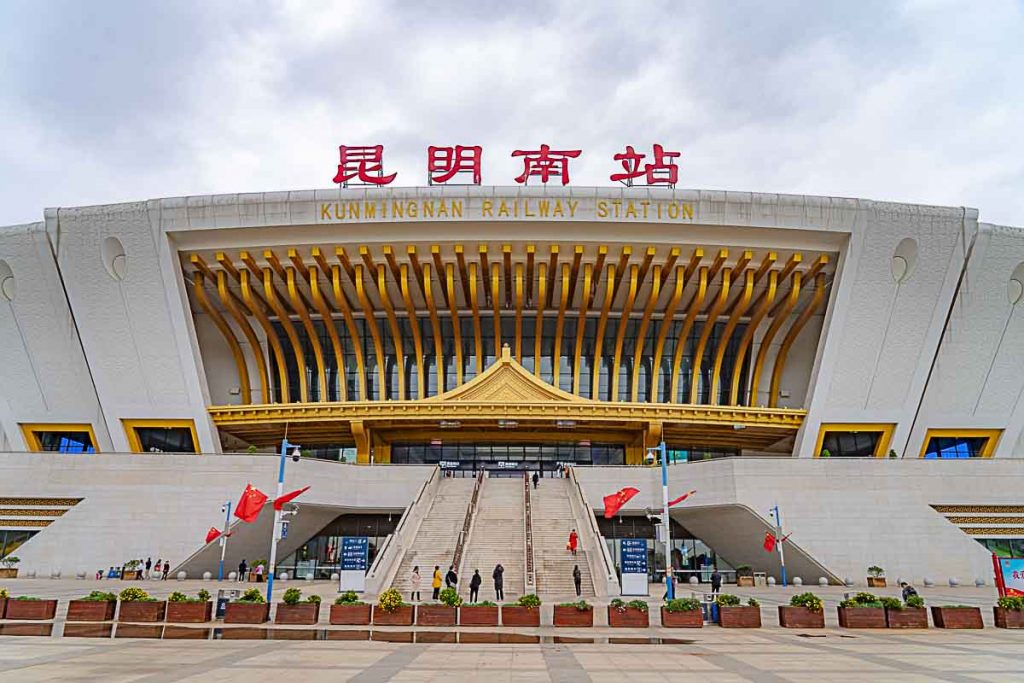
Getting Around: The best way to get around is with the apps Didi and Baidu , their local Uber/Grab, and navigation map respectively.
Connectivity: Stay connected with an eSIM . Make sure to download VPN apps before leaving Singapore to access Facebook, Whatsapp, Telegram, Instagram, etc.
Transport: Book your high-speed rail between Kunming to Dali and Lijiang to Kunming early as these run out fast. In Yunnan, bus tickets can only be bought from the bus station the bus leaves from and you can look at the bus timing schedule here to plan your itinerary for the day.
Day 1 – 2: Kunming (昆明)
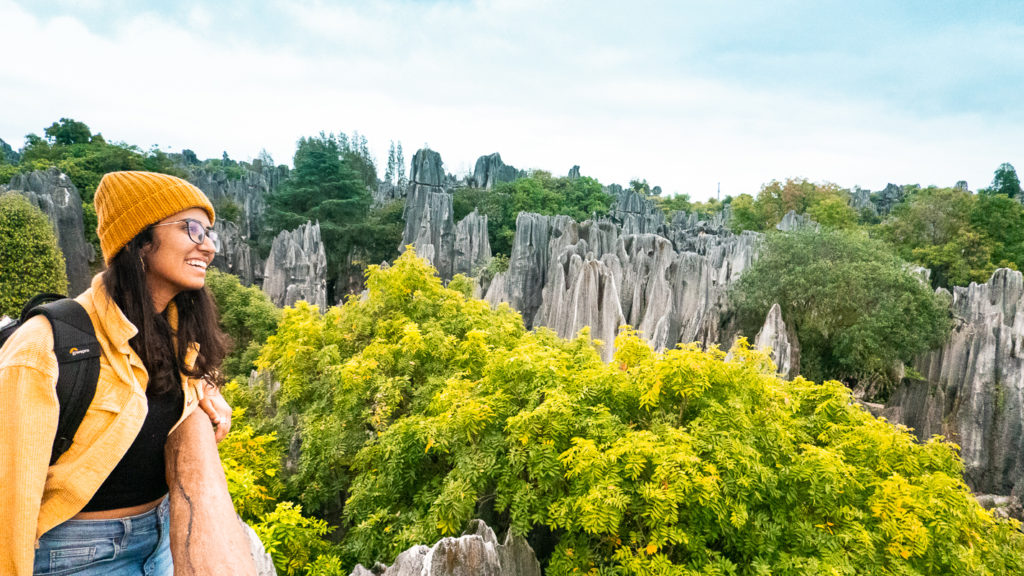
Our first stop in this Yunnan itinerary is Kunming, Yunnan’s capital — known for its pleasant weather and blooming flowers all year round. Kunming was actually the gateway to the famous Silk Road and is still considered today as China’s transportation hub connecting Dali, Lijiang and Shangri-la.
Weather in Kunming: Temperatures average 15°C all year round. January is the coldest at 8°C and July’s the hottest at 25°C.
Accommodation in Kunming: There are several comfortable yet affordable stays within the city of Kunming.
Green Lake Park (翠湖公园)
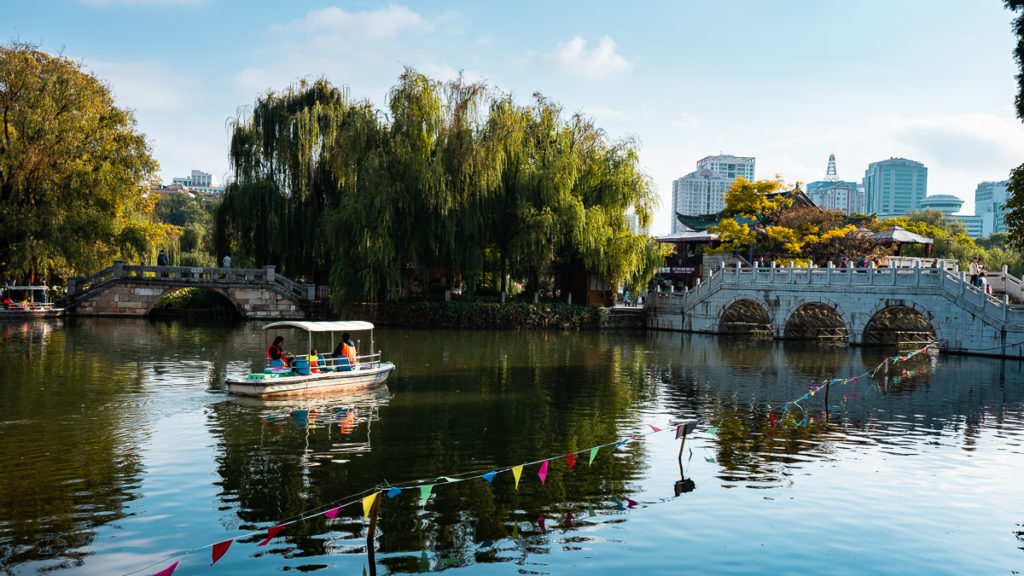
This park is absolutely gorgeous, with always-blooming flowers and clear waters reflecting the magnificent bridges. It’s also the perfect place to absorb the Kunming culture! Every Sunday, locals from all walks of life adorn traditional costumes and gather at the park to dance, sing and have fun.
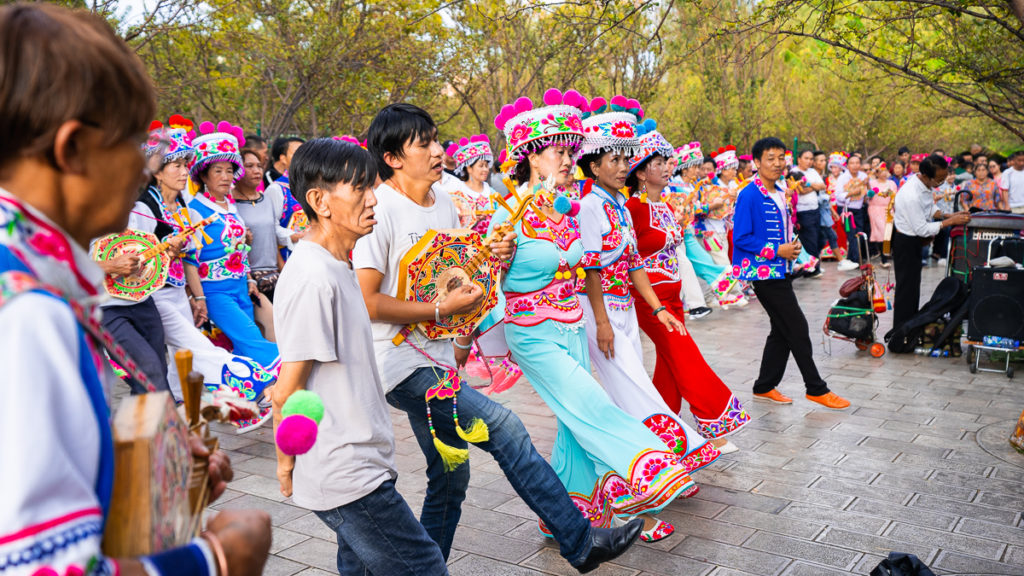
They even welcome foreigners. But beware, the dance steps are not easy at all (It’s like an eastern hoedown where everyone knows the steps and you are like what is going on).
Opening hours: 7AM – 11PM How to get there: 8min walk from Huashan West Rd stn on Line 5 of Kunming Metro ( Baidu Map )
Yunnan Nationalities Village (云南民族村)
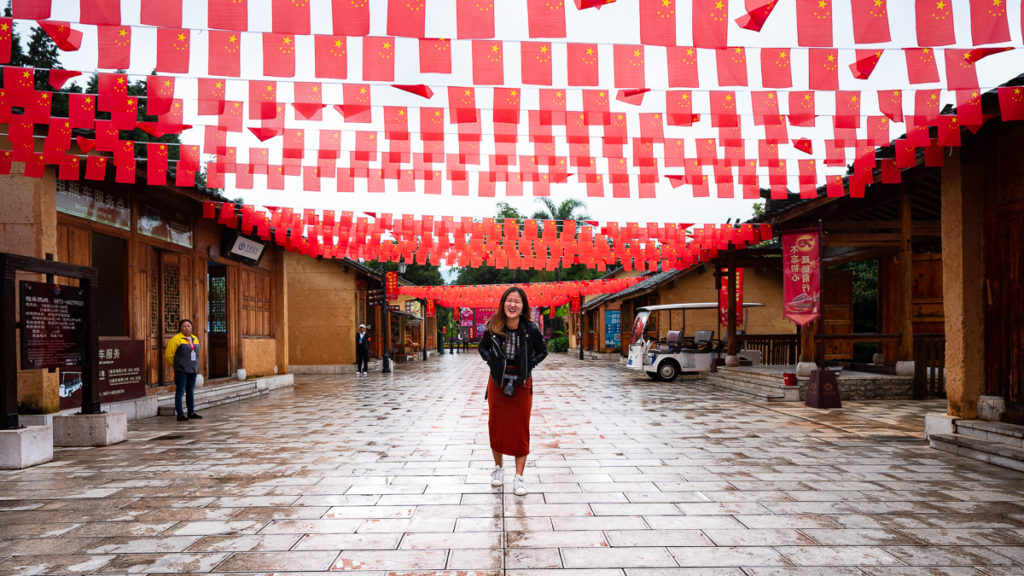
Yunnan is home to 26 different ethnic minorities scattered all around the province, and obviously, the best way to understand a place is to understand its people. It’s almost impossible to visit every single tribe around Yunnan at once unless you’re at the Yunnan Nationalities Village .
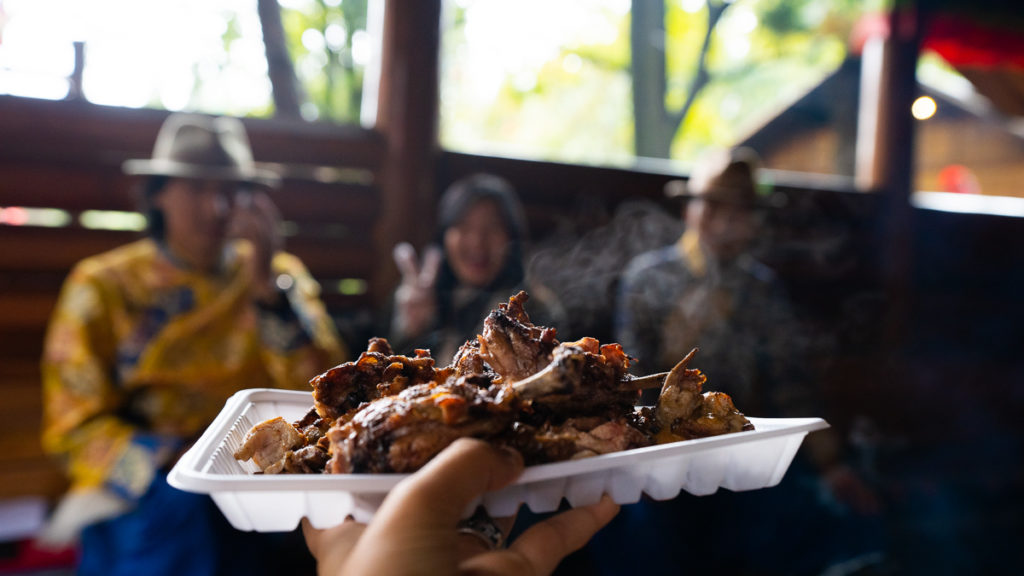
Each tribe in this park offered us an insight into their life back in their hometowns — adorned in their traditional garment, performing tunes of their tribe and taking us around the rebuilt replicas of their homes. We were even lucky enough to get invited to have a meal with the people of the Pumi tribe.
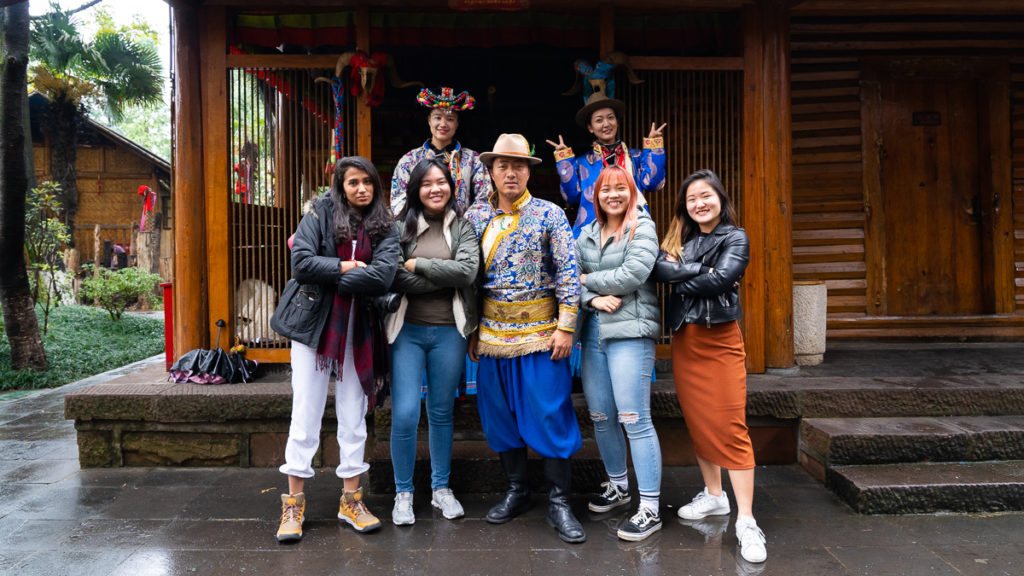
The park is huge, so make sure you allocate enough time to see as many tribes as you want (around an hour per tribe). A faster way to get around is by renting a four-wheel bike (100RMB).
*Pro-tip: Check the timetable at the entrance of the Yunnan Village for the performance timings around the compound and alter your itinerary accordingly.
Entrance fee: 90RMB (45RMB for students) Opening hours: 9AM – 6PM How to get there: Take bus line No. 44, 73 or A1 to Yunnan Nationalities Village Station ( Baidu Map )
Stone Forest & Jiuxiang Scenic Region Day Trip (石林)
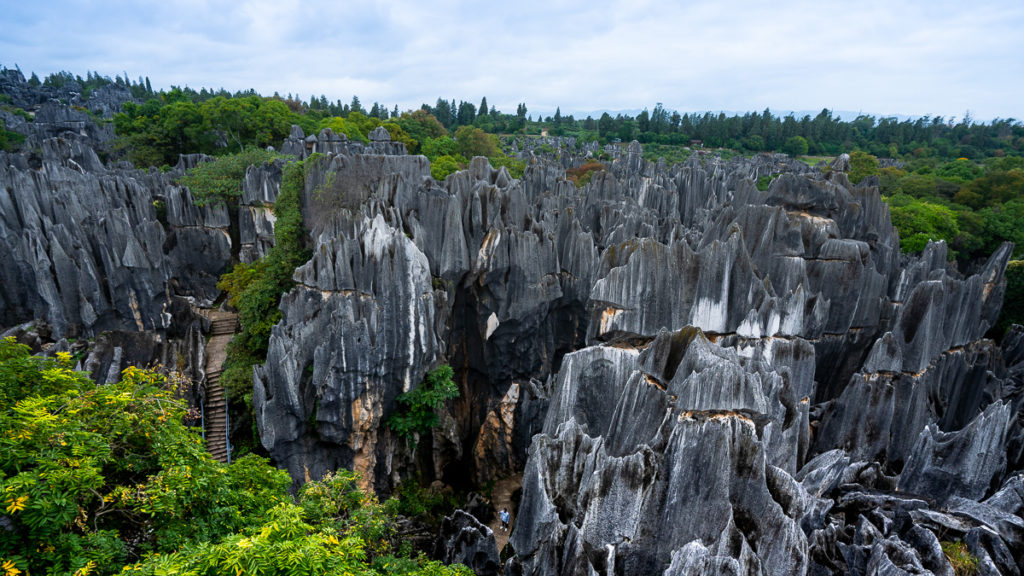
Epic or what? This 400sq km-wide area of towering limestones (all natural!) was considered the “First Wonder of the World” to the Chinese. I mean, can we question that?
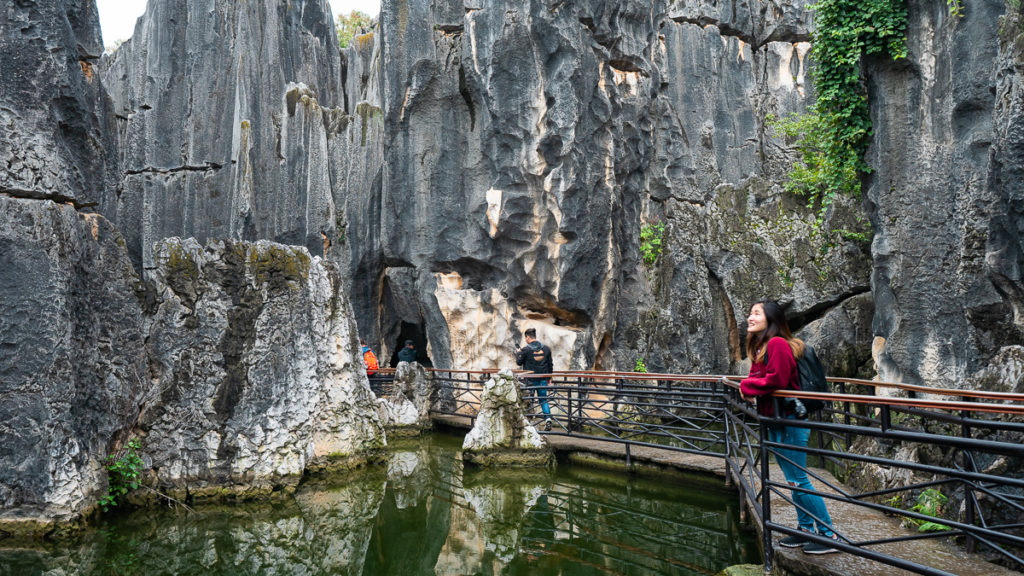
Exploring the Stone Forest itself is like experiencing a giant storybook too. For example, there’s an “Ashima rock” that tells the tale of a beautiful girl who was kidnapped and forced to marry an evil man. Thankfully, her lover saves her, but she eventually gets washed away by a flood and turned into a rock.
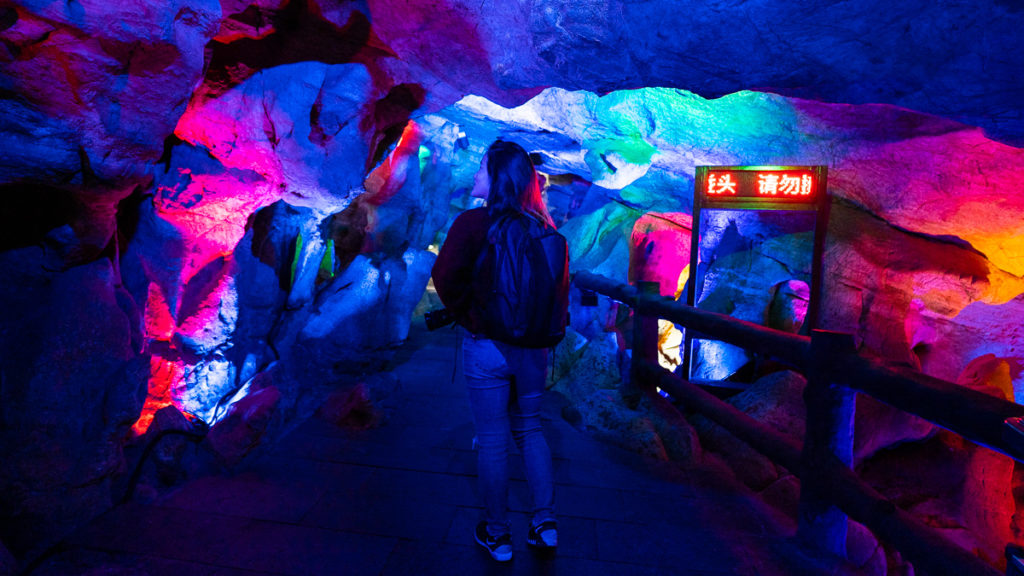
40 minutes by bus from the Stone Forest lies the Jiuxiang Caves , the largest cave group system in China with over 100 karst caves. Here you’ll get to explore a bat cave, a lying dragon cave, a grand lion hall and a fairy field, among others.
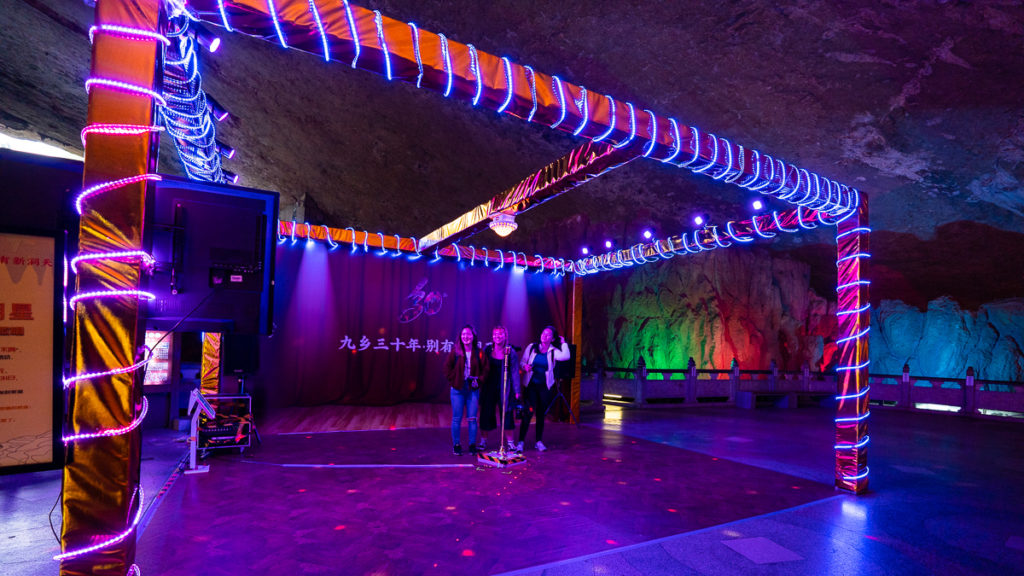
And of course, my personal favourite — a karaoke system in the middle of the entire trail playing classic 90s English songs and Chinese hits. Why is there a karaoke system in the middle of an ancient cave? I can only say China never ceases to surprise us.
Stone Forest Entrance fee: 130RMB per pax Cost of bus ride: 34RMB (1.5hrs) Opening hours: 7AM – 7PM How to get there: Take Line 3 of the metro to East Coach Station. Then, take a bus to Stone Forest ( Baidu Map ).
Jiuxiang Cave Cost: 90RMB + 30RMB (chairlift). The chairlift is optional but we do recommend it because it saves a lot of time. It transported us to the starting point within 10 minutes instead of having to walk back through the trail which would take an hour. Opening hours: 8AM – 6PM How to get there: Ask the locals to direct you to the right bus ( Baidu Map )
Cross Bridge Rice Noodles at Jianxinyuan (建新园)
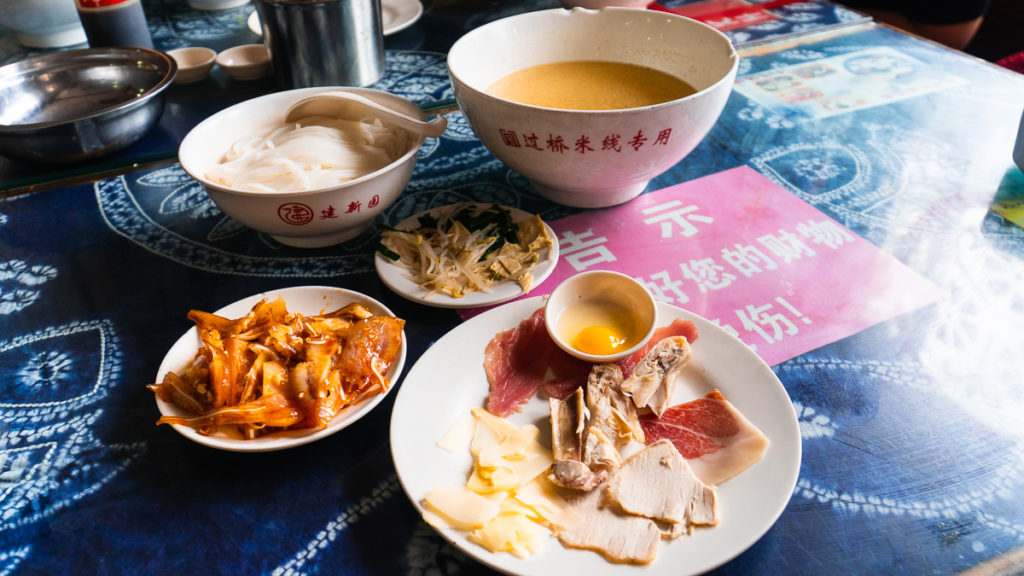
This Yunnan delicacy can be found all over Kunming, with Jianxinyuan being the most famous chain. The noodles are served separately from the soup so they don’t turn soggy, and the boiling-hot broth has a layer of oil to retain the heat. The ingredients are then mixed on the spot upon serving, allowing everything to cook in the broth.
Cost: ~20RMB Opening hours: 8AM – 10PM Address: No.195 Baoshan Street, Wuhua District, Kunming 650021, China ( Baidu Map )
Read also : 16 Things to Do in Kunming — The Unexplored Gem in China
Day 3 – 4: Dali (大理市)
Getting from Kunming to Dali: Take a high-speed rail from Kunming Railway Station To Dali Station (2.5hrs)
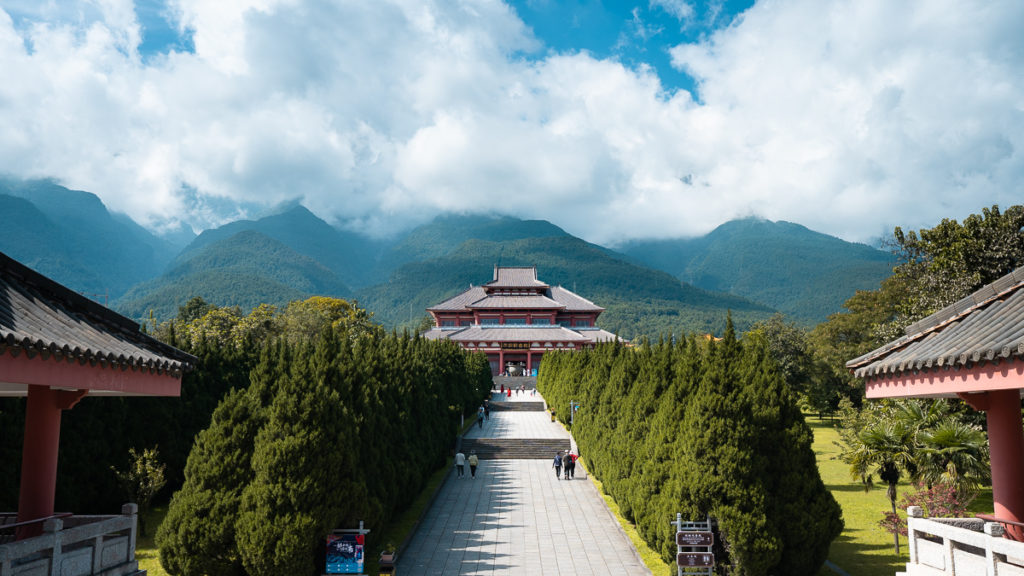
Next in this Yunnan itinerary — Dali! Just 2.5 hours away by train from Kunming, Dali is sandwiched between Erhai Lake and the mountains which means you’ll be greeted with stunning panoramic views everywhere you turn.
Weather in Dali: Temperatures range from 18 – 25°C in (June) and from 4 – 17°C in winter (January).
Accommodation in Dali: We stayed at The Lily Pad Inn which was only a 15-minute walk from Dali Ancient City.
Dali Ancient City (大理古城)
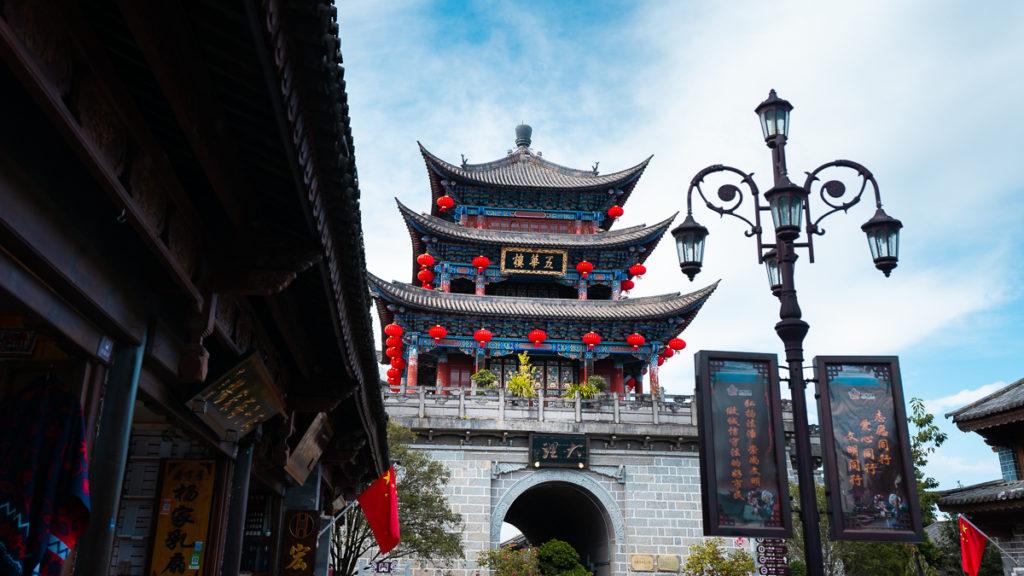
Roaming the streets of Dali Ancient City gave me the perfect snapshot of Dali, from the beautifully decorated streets to its delicious food.
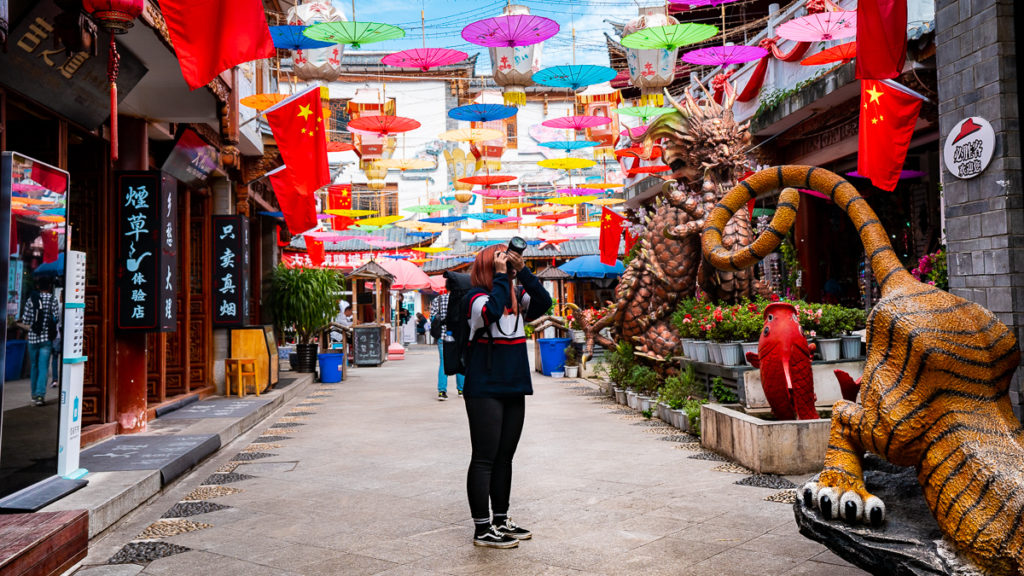
Don’t miss this street with beautifully decorated umbrellas for that Insta-worthy photo!
How to get there: Take bus 3 from Dali Railway Station to Dali Ancient Town, journey is about 1hr ( Baidu Map )
Bad Monkey Bar (坏猴子酒吧)

Dali Ancient City is the only ancient city in this Yunnan itinerary with a lively nightlife. So if you plan on partying it up, this is your stop! When you’re done exploring, chug some local craft beer at Bad Monkey Bar . There’s India pale ale, stout, wheat and amber ale to choose from 40RMB each.

We have to give a special mention to the live music because it really added to the ambience — and the band was singing English songs too.
Opening hours: 9AM – 3AM Address: 73-75 Renmin Road, Dali Old Town, Dali, Yunnan 671003 ( Baidu Map )
Three Pagodas (崇圣寺三塔)
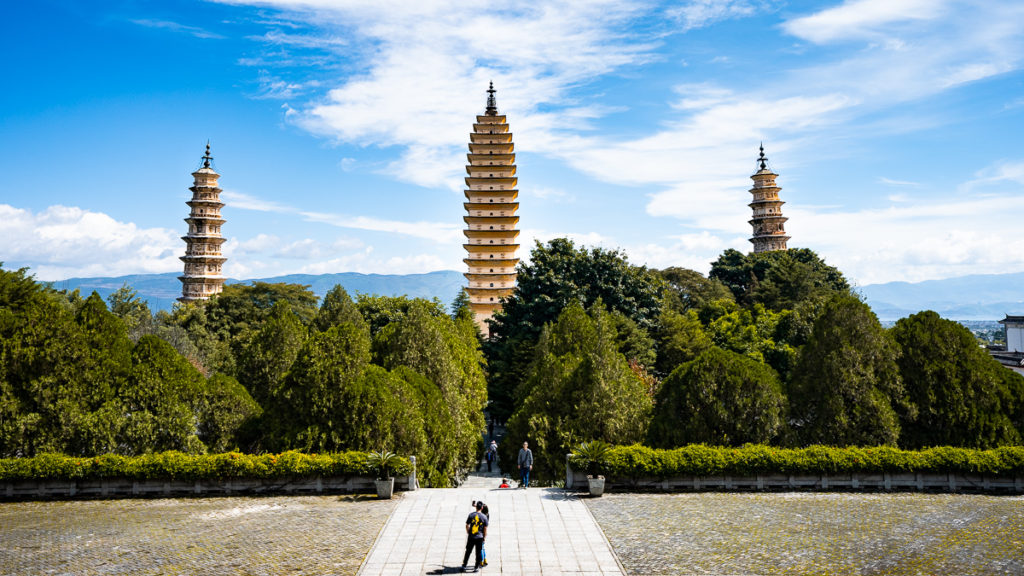
Built 1,800 years ago, the majestic Three Pagodas play an important role in China’s history as it’s a symbol of the development of Buddhism in China. But wait, there’s more!
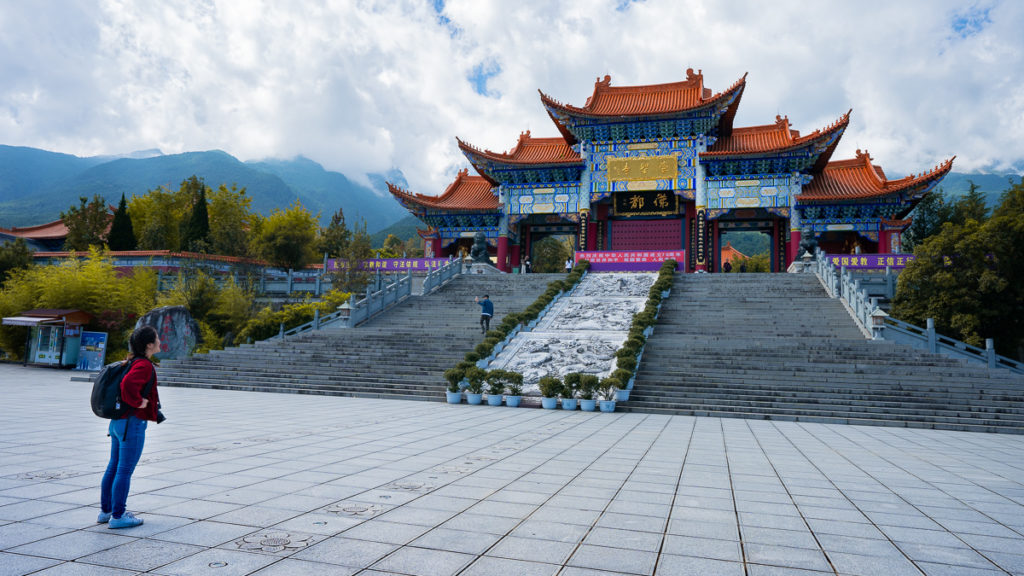
Behind the Three Pagodas is the Chongsheng Temple that was built in the 10th Century, and is one of the largest Buddhist centres in China. It comprises eight terraces, nine sections and 11 levels across 4km leading to the Cangshan Mountain .
Entrance fee: 75RMB (37RMB for students) Opening hours: 7AM – 6:30PM How to get there: Take the Three Pagodas Line in downtown Dali from Dali Railway Station or Xiaguan to the Three Pagodas Scenic Area in Chongsheng ( Baidu Map )
Erhai Lake (洱海)

Erhai is one of the seven biggest freshwater lakes in China. The ‘Er’ actually means ‘ear’ which is also the shape of the sea! It is essential to the daily life of the locals because it is an ideal spot for them to fish. With the backdrop of the vast scenic lake and the opportunity to learn about the life of a local, this serves as the best place to have a relaxing afternoon picnic.
How to get there: From the South Gate of the Ancient Town, take bus C2 and alight at Caicun Dock. Then, walk for 10 minutes to the lake. ( Baidu Map )
Yunnan Wild Mushroom Rice Noodles (云南野生菌米线)
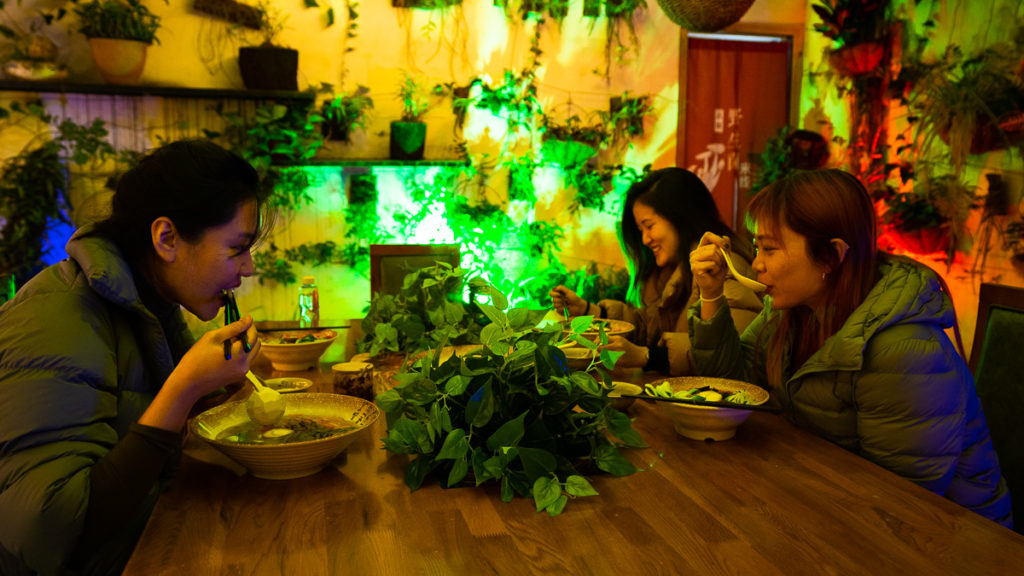
Yunnan is home to hundreds of different edible mushrooms so eating here is a quintessential Yunnan experience. I really recommend you make time in your itinerary to hit this spot as it was the best meal I had in Yunnan!
The rice noodles came with supremely delicious and fresh mushrooms (morels, porcini, matsutake). We left the restaurant caressing our happy stomachs, satisfied with the recommendation from our hostel host.
Cost: 32RMB per bowl Opening hours: 11AM – 10.30PM How to get there: The restaurant is in Dali Ancient Town. Facing Bad Monkey Bar , turn left. The restaurant is about 10 minutes away down the same street on the left, beside a bubble tea store.
Day 5 – 9: Lijiang (丽江)
Getting from Dali to Lijiang: Take the 2.5hrs high-speed rail from Dali Station To Lijiang Station.
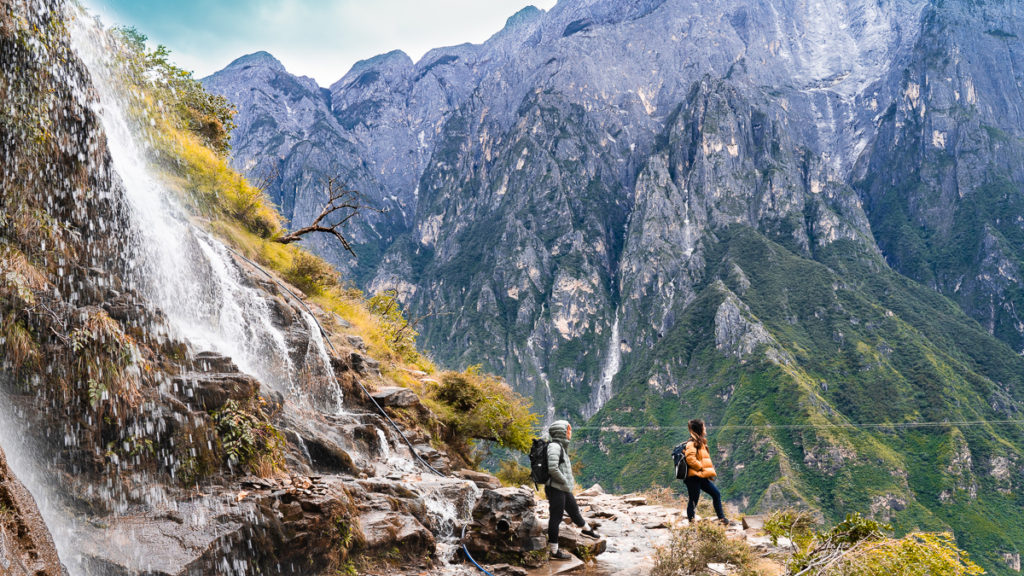
You don’t need to travel to Europe to get sights like these. Arguably the main highlight in Yunnan, Lijiang is a must-have in your itinerary if you’re looking for amazing nature views and hikes, from gorges to snow mountains!
Weather in Lijiang: Wear layered clothing as the temperature throughout the day fluctuates drastically. Temperatures peak at 20°C from June to September, down to 0°C in from December to February.
Accommodation in Lijiang: October Inn Hostel was located 10 minutes away from Lijiang Ancient City.
Jade Dragon Snow Mountain (玉龙雪山)
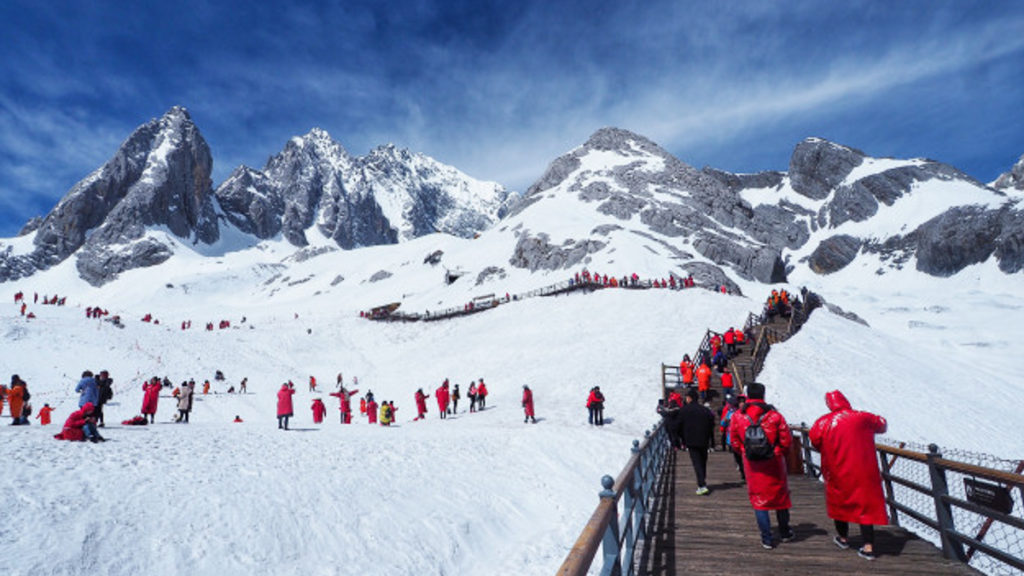
Photo credit: Freepik
Jade Dragon Snow Mountain consists of 13 snow-capped peaks and several glaciers, and till date, no one has reached the summit! Anyone who tried either died or was forced to give up. But don’t worry, the boardwalk goes to a height of 4,680m and is very safe.
But before that, to fully enjoy the Jade Dragon Snow Mountain and its surrounding attractions, we recommend getting the package ticket that also includes entrance to the Blue Moon Valley and Impression Lijiang Show (directed by Zhang Yimou!).
There are several layers to this experience:
(1) Explore the Surroundings: Head over to the Blue Moon Valley first, which is an enormous lake at the foot of the mountain. Stroll along the lake for views of waterfalls and wild yaks.
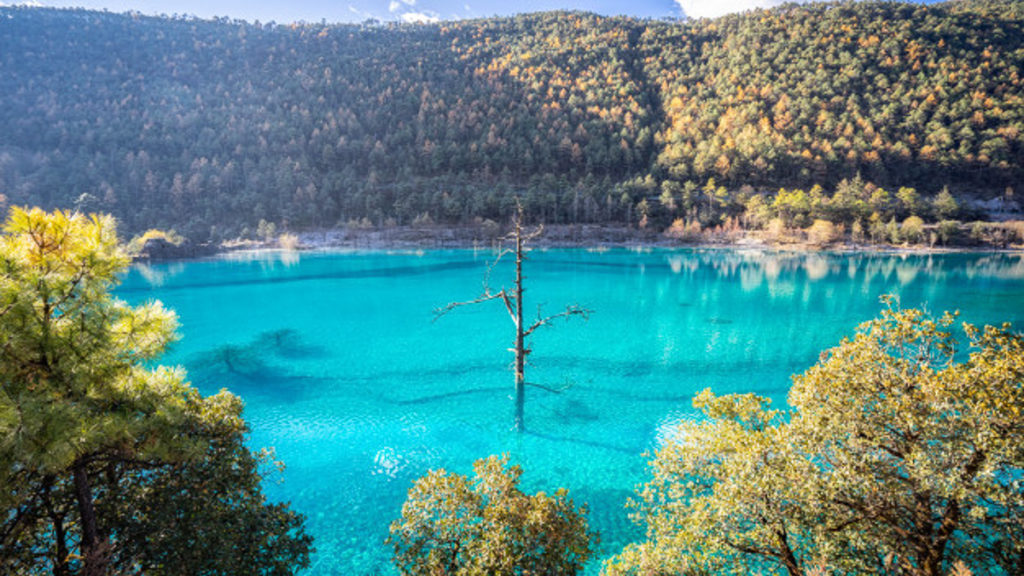
(2) Take the cable car up the mountain: There are three different cable cars that go up to various heights. The highest one goes to the Glacier Park at 4,506m high. From the station, there’s a 100m boardwalk, which is the highest a tourist can go! We recommend booking the 11AM cable car for the best views (the morning fog clears up then).
You’ll want to get your tickets early. Either book through a tour or get a local (like hostel staff) to book for you via WeChat or AliPay. Only 10,000 tickets are released daily at 7AM and they’re snagged fast (This only applies to the Big Cable Car).
If you happen to miss the tickets for Big Cable Car, you can still admire the Jade Dragon Snow Mountain at the foot or mid-levels. You just have to purchase entrance tickets (100RMB) and tickets for the smaller chairlifts (60RMB to the Yak Meadow, 55RMB to the Spruce Meadow) separately on the day of your visit itself.
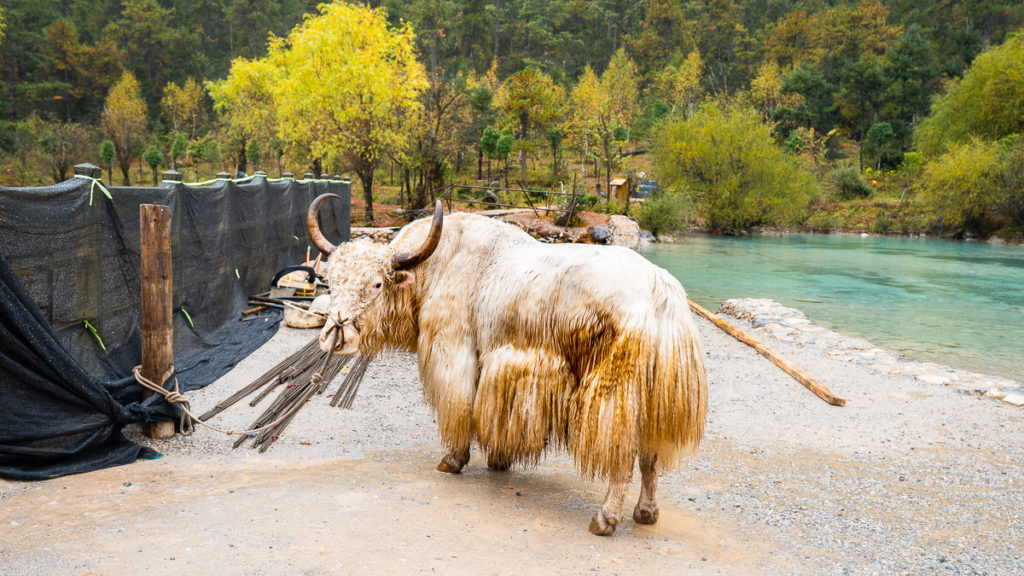
*Pro-tip: Don’t forget to layer up. If you didn’t bring enough clothes, you can rent a jacket from the base for 50RMB. Also, get your oxygen cans from Lijiang City as it’s much cheaper than on the snow mountain. It’s easy to get altitude sickness here, so walk slowly, and carry an oxygen can for good measure — one tank to two people should suffice.
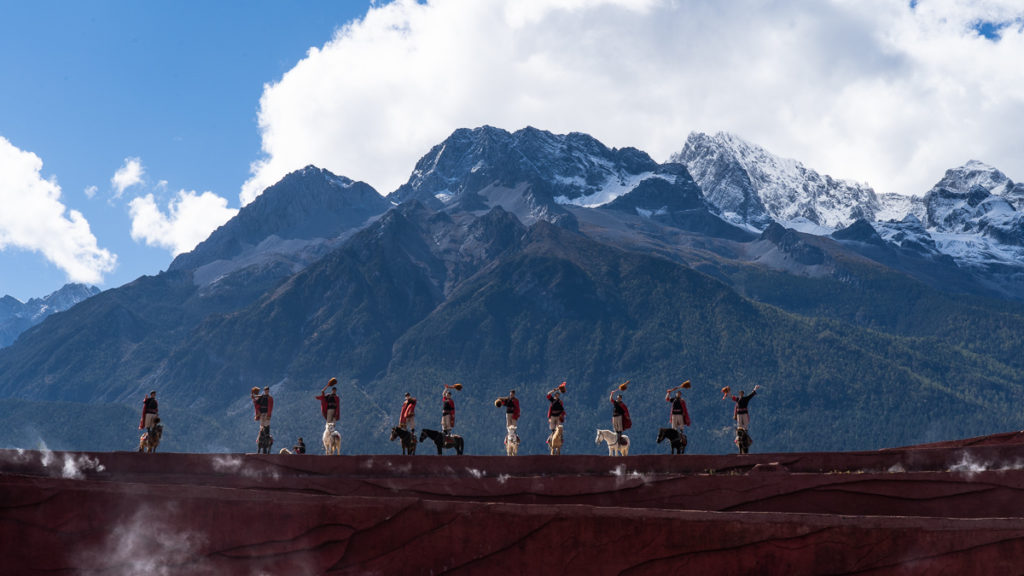
(3) Catch the Impression Lijiang Show: Located at the base of the attraction, the Impression Lijiang Show is an outdoor singing and dancing performance demonstrating the tradition and lifestyle of the local ethnic people. With 500 people in the cast and the spectacular Jade Snow Mountain as the backdrop, this performance truly encapsulated the beauty of Yunnan!
Showtimes: 12:40PM, 2:50PM Cost: 420RMB (incl. chairlift, Blue Moon Valley and Impression Lijiang show) Opening hours: 7AM – 6PM How to get there: Hail a private car along the Mao Ze Dong Hong Tai Yang Square (红太阳广场) that takes you directly there (400RMB). Alternatively, take the no. 7 minivan leaving from the Red Sun Square , right opposite the statue of Mao Zedong (30RMB).
Old Town of Lijiang (丽江古城)
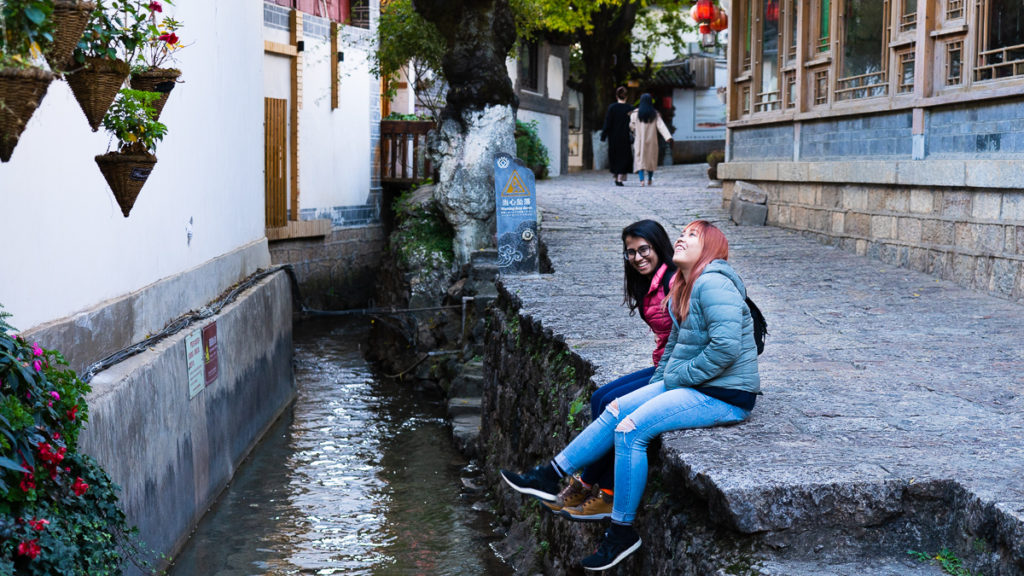
The Old Town of Lijiang is known for its organised bridges and orderly system of waterways throughout the town. This design was actually due to the fact that this town was once a confluence for trade along The Tea Horse Caravan Trail.
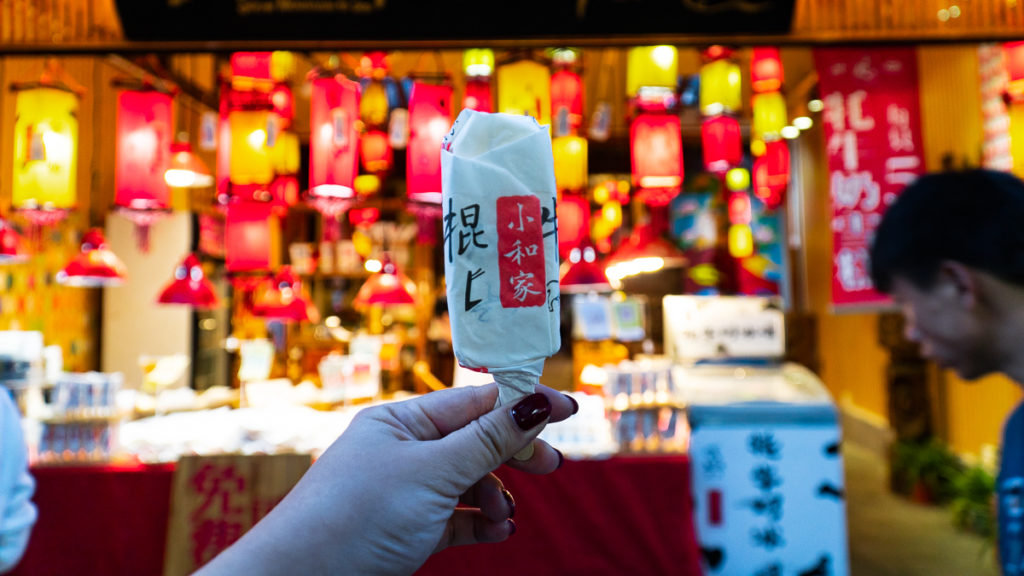
Yak butter milk ice cream is a must-try when in Yunnan.
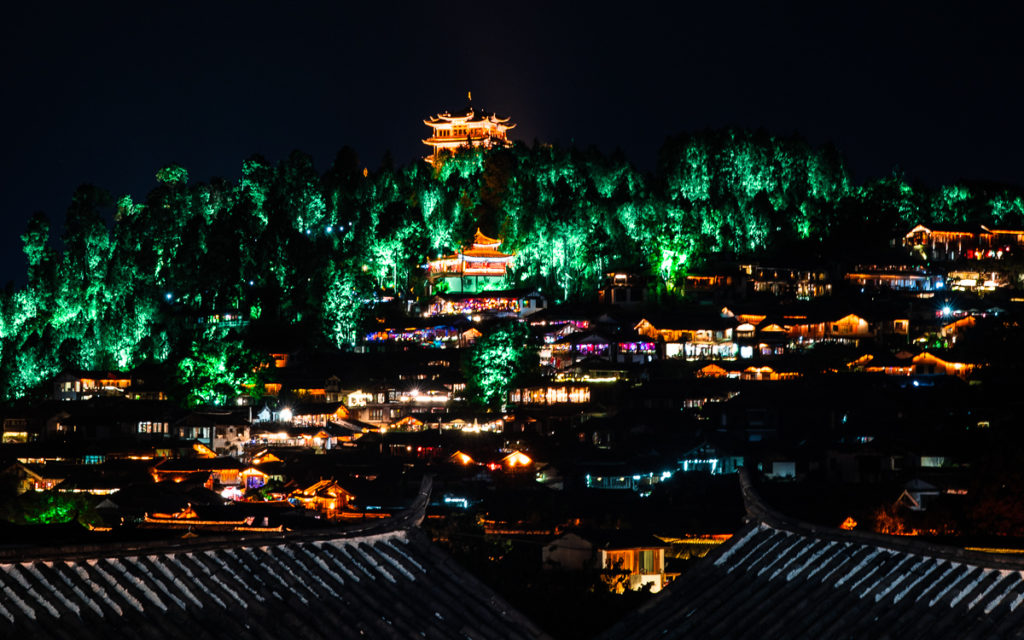
We had spent many nights in Lijiang, so we became rather familiar with the streets. We even stumbled upon this lookout point that eventually became our hangout spot to watch the sunset. At the foot of Da Yan Hua Lane (大研花巷), there are stairs that will lead up to this lookout point. Ask the locals for help locating this lane!
Opening hours: Most shops close by 10PM How to get there: The Old Town of Lijiang is serviced by several public buses in Lijiang, but we took Didi as it’s cheaper and more efficient. ( Baidu Map )
Black Dragon Pool (黑龙潭)
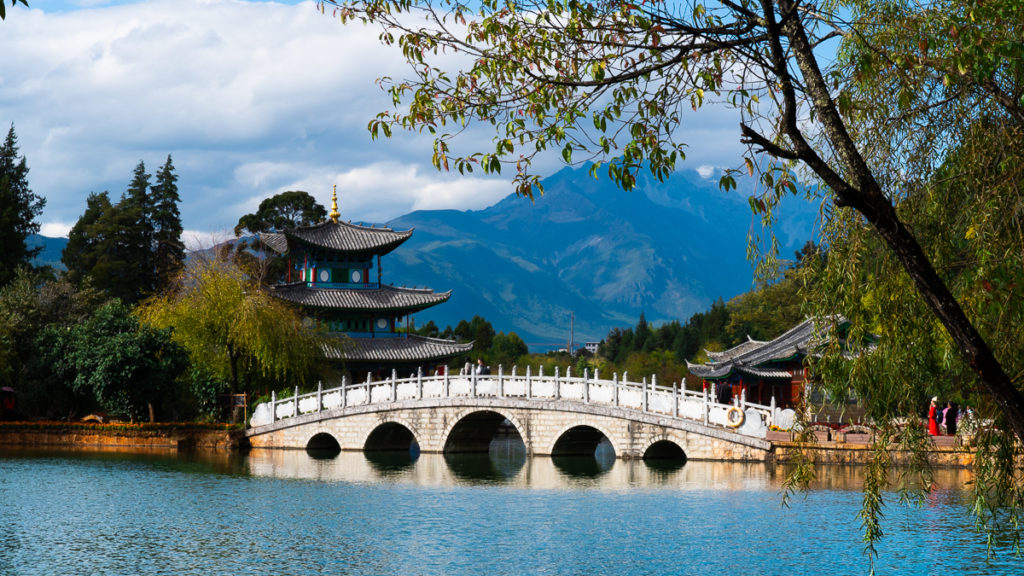
The Black Dragon Pool is a refreshing change of pace from the city. Stroll around the compound with a view of the Jade Dragon Snow Mountain at the back, and explore the Buddhist temple on site.
Entrance Fee: 50RMB Opening Hours: 7AM – 9:30PM How to get there: Take bus 3, 4, 6, 8, 9, 13, 20, or 28 to Heilongtan (Jade Spring Park), or walk 15mins from Old Town of Lijiang ( Baidu Map )
2D1N Tiger Leaping Gorge Hike (虎跳峡)
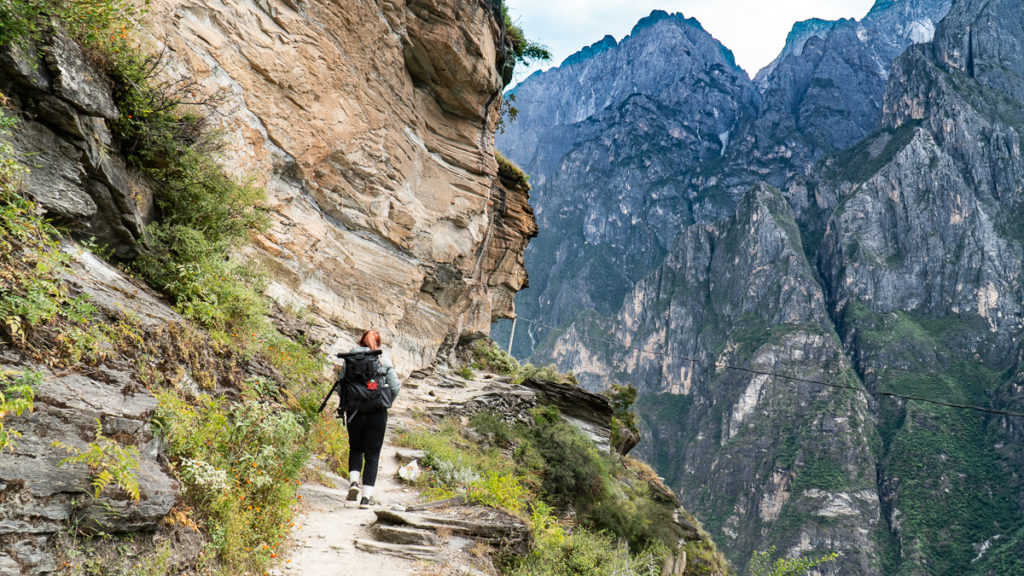
I had always fantasised about the Swiss Alps , but its lesser-known sibling hides in the depths of Yunnan. Tiger Leaping Gorge is one of the deepest gorges in the world, it measures 16km long and is 3900m deep from the Jinsha River to the Haba Mountain.
Conquering the infamous 28 bends over its hiking path is no easy task, but is definitely very doable. For someone who is of average fitness, this would serve as a medium-intensity hike. No pain no gain, and the views of the beautiful Jade Dragon Snow Mountain and Haba Snow Mountain were definitely a very worthy gain! But do make sure to prep sufficiently for the hike, with snacks and loads of water.
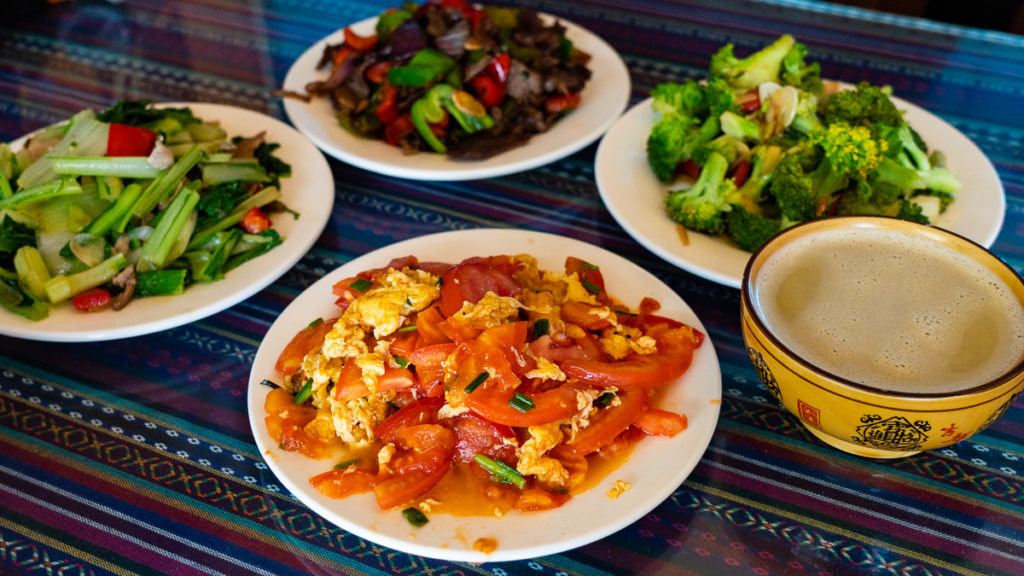
We started our hike a little ahead of Qiaotou. 3 hours in, we stopped for lunch at Mama Naxi Guesthouse (~25RMB/pax), a common stop for Tiger Leaping Gorge hikers serving simple home-cooked Chinese food like eggs and tomatoes, and even butter milk tea using yak milk.
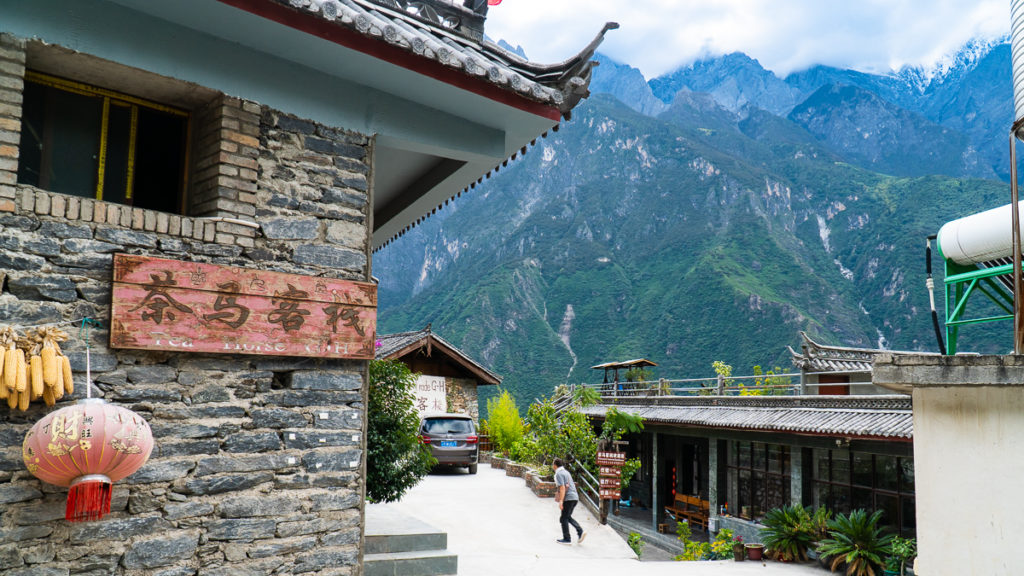
We took another four hours after lunch to complete the 28 bends and the rest of the hike before we reached our accommodation for the night at Tea Horse Guest House . Sleep early because you’ll want to catch the sunrise at 6AM (otherwise, sleeping in till 9AM is fine too)!
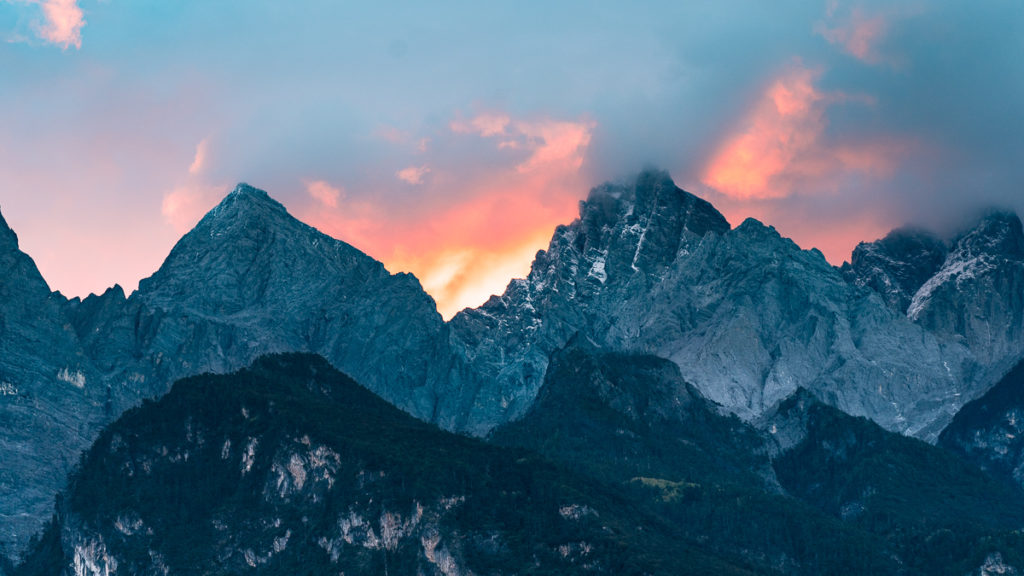
The second-day hike was way easier because it was not crowded, and we spent the entire time hiking at the cliff’s edge. We finished the hike in 5 to 6 hours and stopped by Tina’s Guest House for food along the way down. From here, the only bus back to Lijiang departs at 3:30PM daily so don’t miss it. Depending on your Yunnan itinerary, there’s also a bus towards Shangri-la that departs from Tina’s Guest House at 3:30PM.
Entrance fee: 45RMB (22.5RMB for students under 24) Opening hours: 24hrs How to get there: We got our host at October Inn Hostel to arrange a bus to pick us up at 7AM and drop us at Qiaotou Bridge, which took 1.5hrs. Your trail will start slightly beyond that point (ask the locals for directions).
Naxi Snacks Store
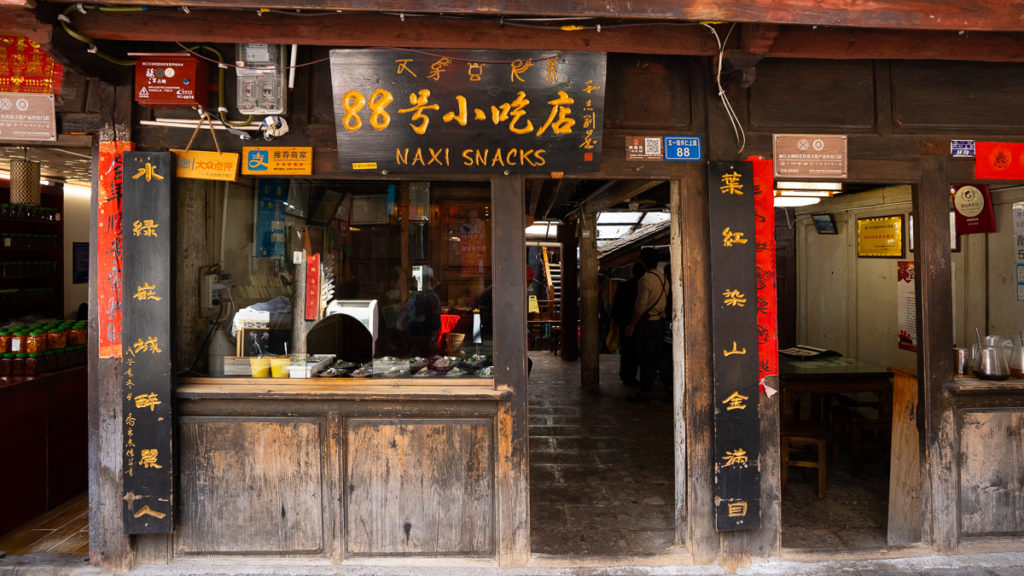
This unassuming store in Lijiang Old Town can be easily missed if you’re not discerning, but it serves up really good food like blood sausage (22RMB) and chickpea noodles (6RMB).
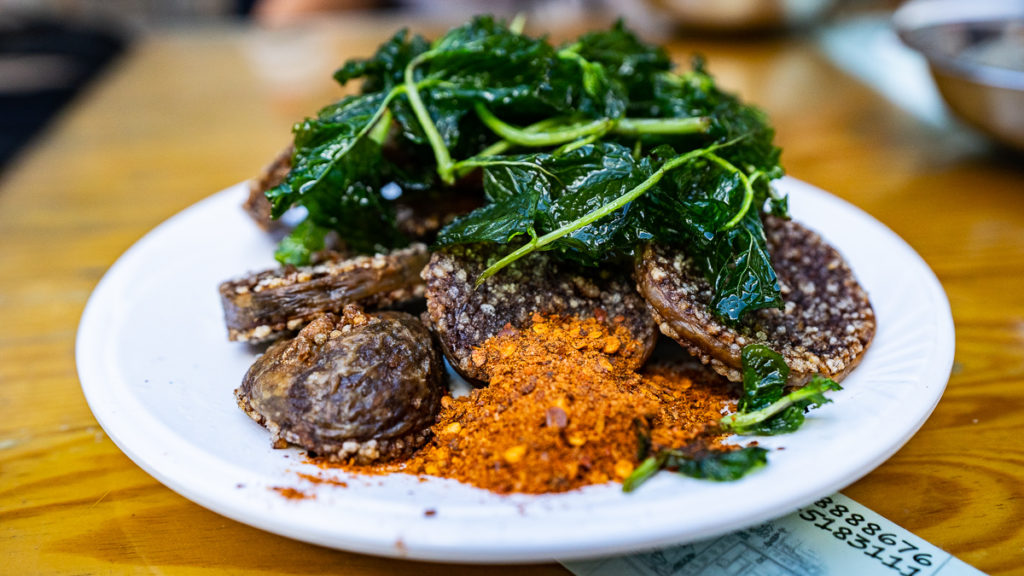
Blood sausage served with fried vegetables drizzled with homemade chili powder .
The main ingredient in blood sausage is pig’s blood which made me a little squeamish. But it was actually very crispy and tasty. It tastes more like a stuffed potato chip. The chickpea noodles are served cold with chili oil, parsley, peanuts, and beansprout in the bowl which all mix together perfectly.
Opening hours: 8AM – 9PM Address: 88 Wuyi Street, Gucheng District, Lijiang City, Yunnan Province, China, 674100 ( Baidu Map )
Day 10 – 12: Shangri-la (香格里拉)
Getting from Lijiang to Shangri-la: Take a 3.5-hour bus from Lijiang Bus Station (62RMB).
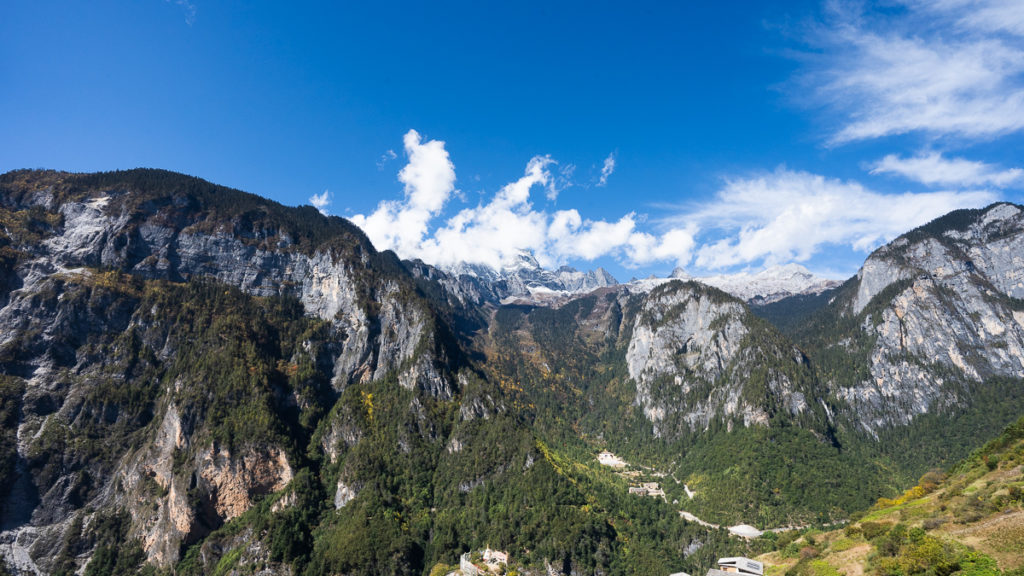
The streets of Shangri-la enchanted us with an antiquated mystique, from unique Tibetan-styled streets to grand monasteries.
Weather in Shangri-la: It’s the coldest place in this Yunnan itinerary. Temperatures average 19°C from June to August, and -2°C from December to February.
Accommodation in Shangri-la: Shangajoy Seasons Inn is located a walking distance away from the Dukezong. They had helpful staff that booked us tours and showed us around!
Balagezong Scenic Area (巴拉格宗风景区)
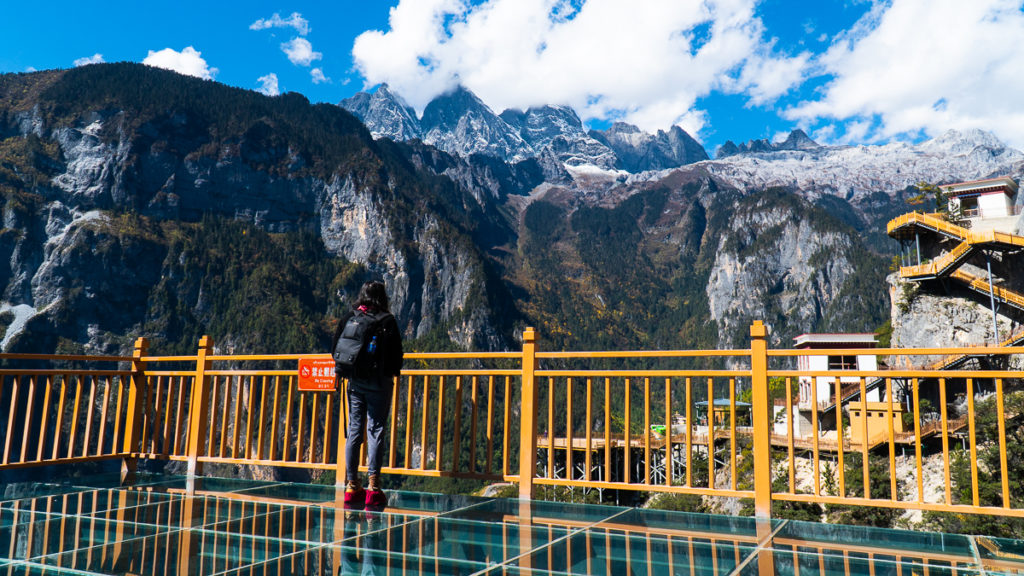
Balagezong was truly breathtaking with its towering mountains, unimaginably fresh air and waters so blue I was sure the saturation was tampered with (it’s not, lah). We explored a magnificent Buddhist temple, a glass walkway perched on the mountains, had a delicious Tibetan lunch and a scenic 2.5km walk through the Balagezong Grand Canyon .
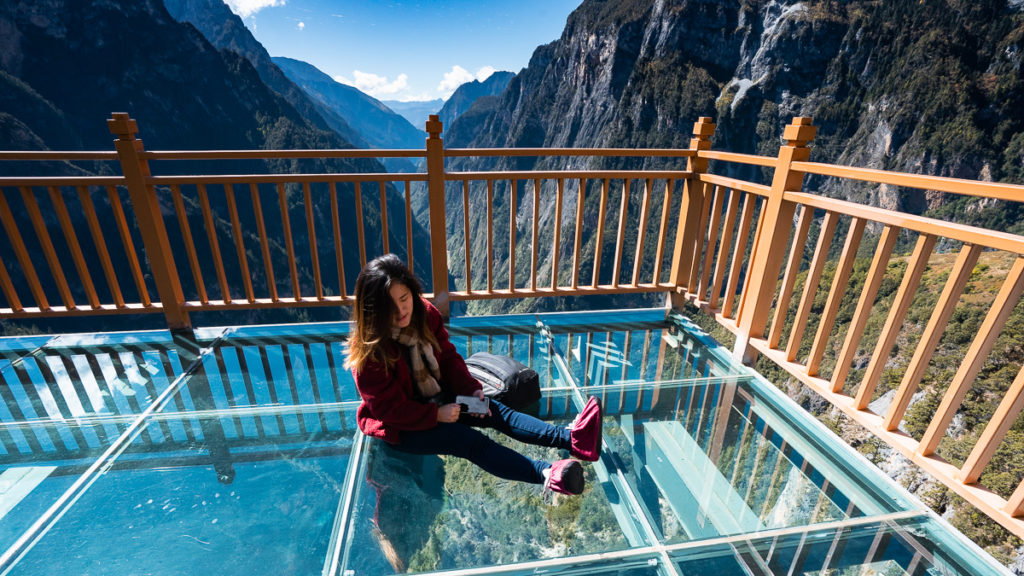
The glass walkway stop was my favourite part of the day trip! Not being the best with heights, having to walk a pathway that allowed me to see 3,000m down to my death was not very comforting. But the views down were so stunning that a little heart palpitation was a worthy cost to bear.
If you’re feeling a little adventurous, this stop also offers a zip-lining activity through the canyon (120RMB).
Cost: 290RMB for tour incl. round trip transport, transport within the scenic area and entrance fees (ask hostel staff to help book a tour). Opening hours: 8AM – 5PM How to get there: Shuttle buses depart daily around 9AM from Shangri-La’s Dukezong Ancient Town, and leave Balagezong from 4PM – 5PM. ( Baidu Map )
Songzanlin Lamasery (松赞林寺)
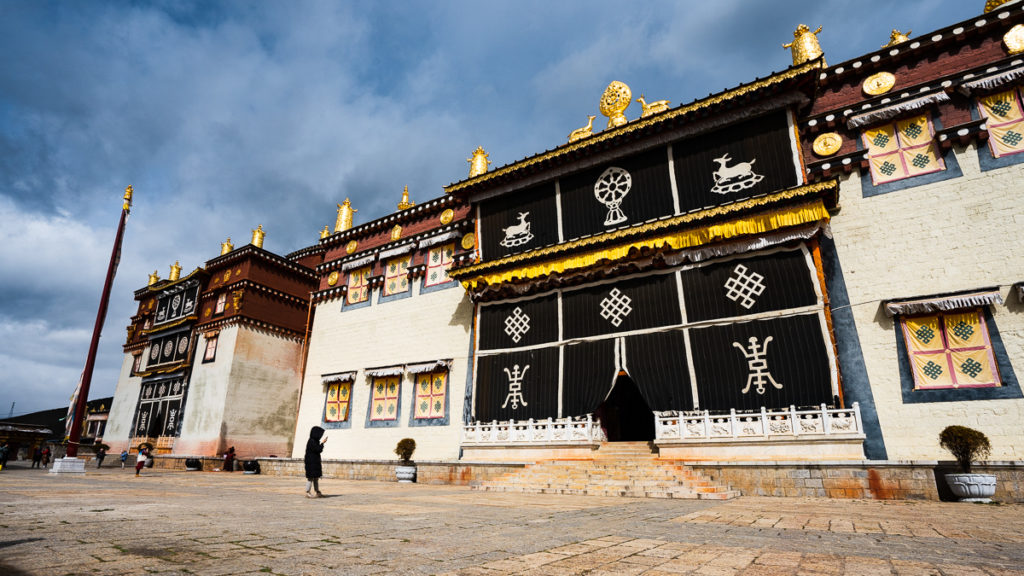
Songzanlin is the largest Tibetan Buddhist monastery in Yunnan, covering 30 hectares. The 5th Dalai Lama chose this site in 1679, and it has since grown into the most important monastery in the community of Yunnan.
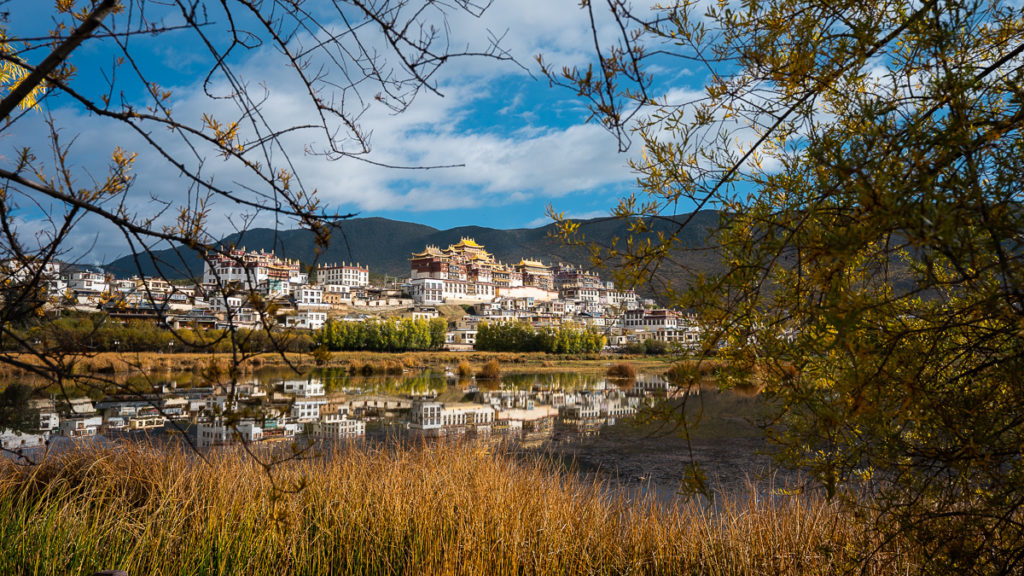
At the entrance, you can board a bus that takes you directly to the monastery, or you can alternatively walk 30 minutes to the monastery around the lake. We recommend walking if you can because the serene stroll through the park allows immaculate views of the Lamasery.
Entrance fee: 115RMB (62RMB for students under 24) Opening hours: 6AM – 6PM Address: Niwang Rd, Shangri-La, Deqen, Yunnan, China ( Baidu Map )
Napahai Lake (纳帕海)
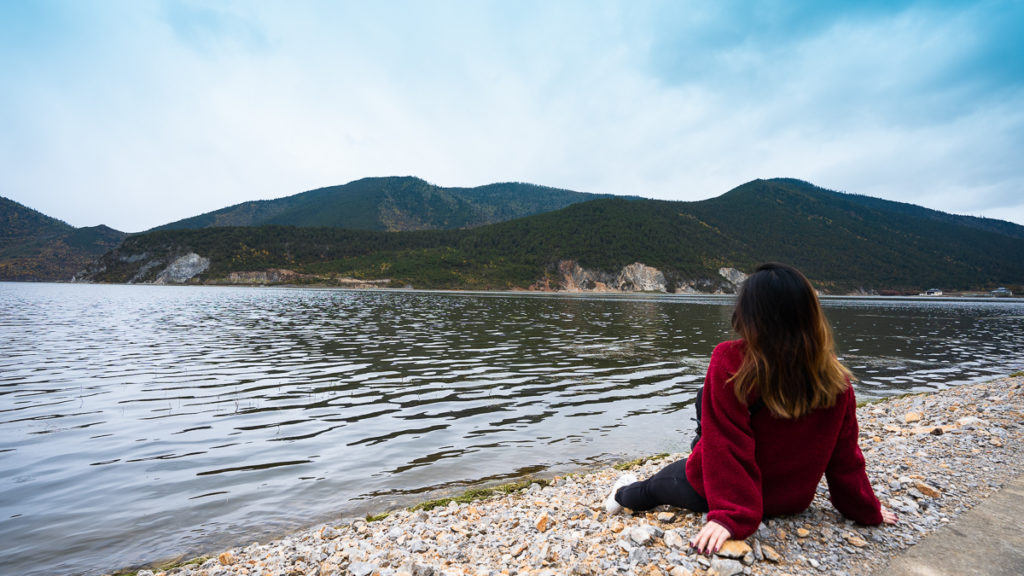
The Napahai Natural Lake Reserve alone is 90% of Singapore’s size at 660km sq wide. The best way to explore the entire lake is to rent a car and drive along the entire coastline. Trust me, the views are worth it!
*Pro-tip: Napahai Lake and Songzalin Lamasery are nearby so we recommend hiring a private car and visiting both in one day.
How to get there: 214 West Side of West Inner Ring Road, Shangri-La, China ( Baidu Map )
Dukezong (獨克宗)
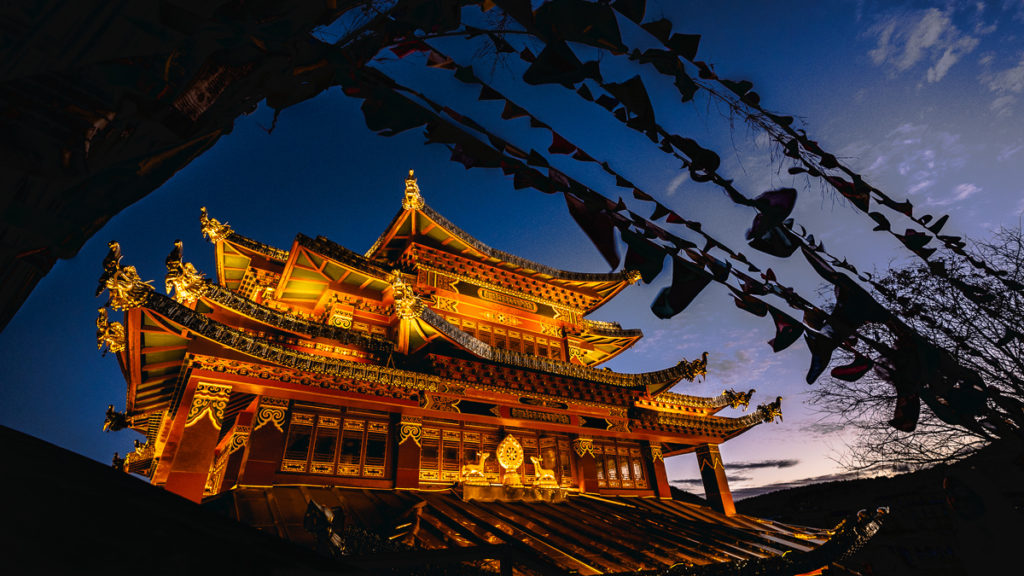
Dukezong is a Tibetan town located in the heart of Shangri-la. Unlike the other ancient towns, the Tibetan culture colours each narrow street with gilded prayer halls, pagodas and Tibetan Buddhist prayer flags.
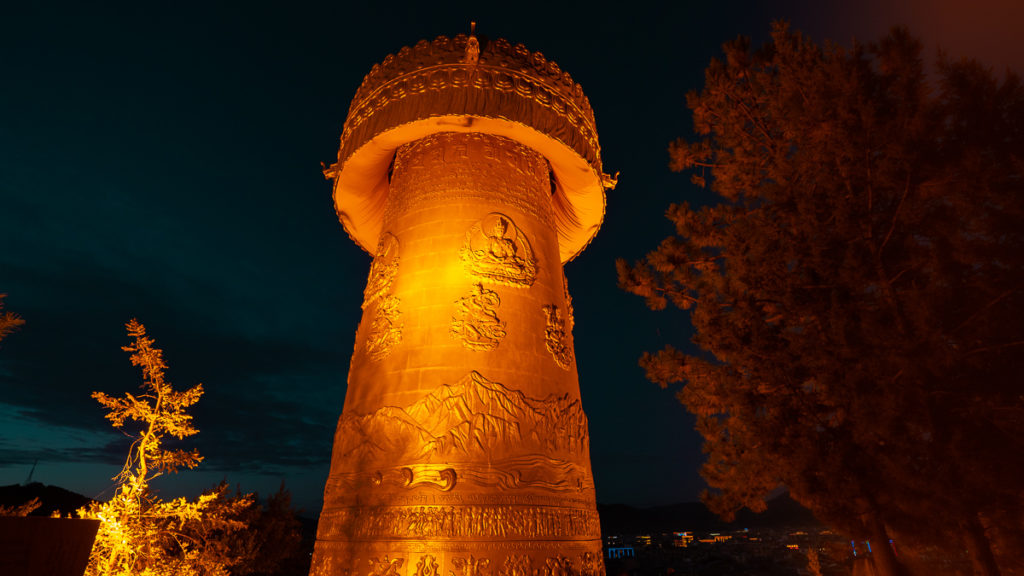
The Prayer Wheel is one of the main attractions of the Ancient Town. Spin the prayer wheel three times and good luck and fortune will fall upon you. It’s the tallest of its kind in the world at 21m high, making it virtually impossible for one person to spin it alone. Rally up your pals to spin it together!
Opening Hours: Most shops close by 10:30PM How to get there: Dukezong is within walking distance from Shangri-La Town ( Baidu Map )
Tibetan Hotpot (藏式火锅)
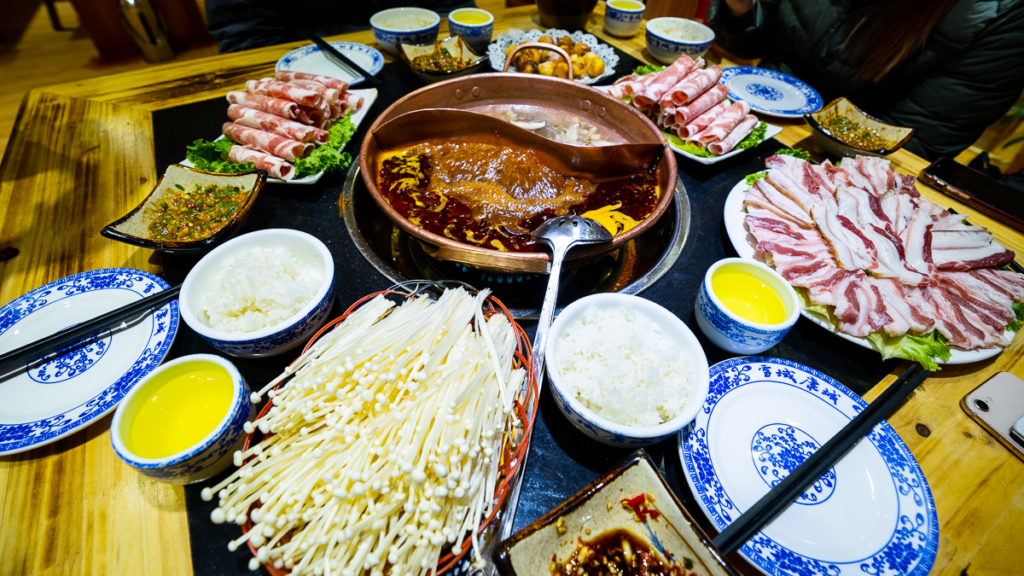
After a whole day of exploring around Shangri-La, we treated ourselves to a hearty Tibetan hotpot at a restaurant in Dukezong Ancient Town.
The hot pot was really shiok especially in the cold Shangri-la weather. There was an array of fresh vegetables and meat to choose from — from bean sprouts to Chinese kale, and black goat meat to yak beef balls, we were really spoilt for choice.
Eventually, we settled on the black goat meat since it’s the local Shangri-la delicacy. And boy oh boy, was it a good choice! The meat cooked really quickly and it just melted in our mouths. We ordered the spicy miso and mushroom soup which complimented all the ingredients really well.
Heading back to Kunming
Since our return flight back to Singapore was from Kunming, we took a 13-hour sleeper bus (223RMB) from Shangri-la back to Kunming . Bus tickets can only be purchased at the ticketing counter of the bus station.
Alternatively, you can take the bus to Lijiang (62RMB), then take the high-speed rail (~S$42) from Lijiang to Kunming in under 6.5 hours.
China’s Best-Kept Secret

Before coming on this trip, I knew next to nothing about Yunnan, let alone that it is home to so many beautiful attractions and scenic landscapes!
But after 12 days of hiking magnificent gorges, scaling snow-capped mountains and exploring ancient towns, Yunnan definitely made my list of the top three countries I have travelled to, with Slovenia and Spain sharing the title.
It now feels like I am in on this not-so-little secret that the entire of Yunnan was hiding away from the rest of the world. You can thank us later for this Yunnan itinerary. But for now, get ready for your next adventure!
Read also: 9 Reasons Why Yunnan Should Be On Your Travel Bucket List
Checking out other parts of China? Here are some more ideas: – 2-Week China Itinerary — Rail Adventure Across Beijing, Shanghai, Hangzhou and Suzhou – 12D Central China Itinerary to Ancient Gems & Undiscovered Sights — Things to do in Wuhan, Changsha & Zhangjiajie – Ultimate First-Timer’s Guide to China: 14 Exciting Things To Do In Beijing – 25 Exciting Things to Do in Shanghai — First Timer’s Guide From Must-Dos to Hidden Gems – 5D4N Suzhou and Hangzhou Itinerary — Beauty of Tiger Hill, West Lake and More – 19 Reasons to Visit China’s Most Underrated Cities — Wuhan, Changsha & Zhangjiajie – 11 Reasons Why You Should Visit Hainan Island For Your Next Resort Holiday
We hope this Yunnan itinerary was useful in planning your next adventure. If we missed out anything in our Yunnan itinerary, do let us know in the comments.
Like what you see? Follow us on Facebook , Instagram , Telegram , and YouTube for more travel updates!
View this post on Instagram A post shared by The Travel Intern (@thetravelintern)
RELATED ARTICLES MORE FROM AUTHOR

25 Exciting Things to Do in Shanghai — First Timer’s Guide From Must-Dos to Hidden Gems
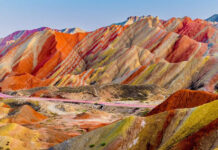
7 Places in China that Weren’t On Your Radar But Should Be
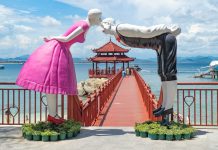
4-Day Hainan Itinerary Under S$650 — A Short Island Getaway to the Hawaii of China

Mobile Payment in China: Step-by-step Guide to Using Alipay and WeChat Pay without a Chinese Bank Account
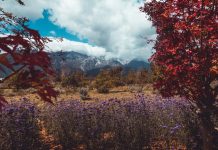
Yunnan Nature Bucket List For Outdoor Lovers — Best Spots in Kunming, Lijiang, Dali & Shangri-la
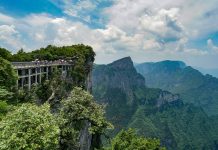
12D Central China Itinerary — Things to do in Wuhan, Changsha & Zhangjiajie
28 comments.
I agree! Yunnan is amazing! And those places are the most touristy part of Yunnan, there’s more but it’s better to rent a car and explore yourself. Thanks for this article, i founded it very useful! I stayed in NAXIs guesthouse too, love the food! Oh and Kunming’s weather the hottest month gets about 25 not 18…
Thanks Karla for your comments, article’s been corrected 🙂 Yes we’ll want to try self-driving too the next time we visit Yunnan:)
Hello, did you self drive in China? Understood that international license is not accepted and a china temporary driving license is required when you arrive in China. Would love to know the procedure to obtain the china driving license. Thanks!
Hi there! No, we did not self-drive in China. The transport system and ride-hailing are quite convenient and reliable, and we could get around with ease.
Amazing itinerary, thanks for sharing with us
Hello, the high speed rail URL is not working for me. How else do we check and book for the trains? Any changes since this article was written? Thanks
Hi Hendri, thanks for pointing out! We’re also in the midst of updating all our China content. You can get the high speed rail tickets from this website too: https://www.12306.cn/en/index.html Hope this helps 🙂
Thank you so much for sharing the information, everything is very detailed, you did a thorough job just like locals.
Thank you for sharing this itinerary. Am planning a DIY trip but bringing my parents in their sixties. Reasonably fit to walk but I ll skip the hike and Shangri la. Any tips to take note with elderly in mind ? My plan is to fly in Kunming 3d2N ,train to Dali stay in Erhai 5d4n then train to Lijiang 6d5n before training back to Kunming onward back Sg. When based in Dali & Lijiang , am planning to do day tours etc. Any advise will be much appreciated.
Hi Angel, sorry I must have missed out on your question! Kunming, Dali, Lijiang are all pretty elderly-friendly. If you’ve not yet bought tickets to attractions, do check at the counters if they have discounted tickets for older folks! Some major attractions have tickets at half-price for students and adults above 60. If you and your parents speak Mandarin, you’ll have no problems at all getting around. Have a fantastic trip! 🙂
Thanks so much for this detailed write up and the super pics. It really helped me plan my own solo trip to Yunnan.
Hi, can share are toilets easily Available n how’s the cleanliness of toilets in the places mentioned in this itinerary? Thanks
Hi thanks for this question! There are public toilets that are well-maintained at most tourist attractions such as Yunnan Nationalities Village, Stone Forest & Jiuxiang Scenic Region, Three Pagodas, etc. However, do not expect them to be very clean. At more rural areas such as the Ancient Towns, Tiger Leaping Gorge Hike, and Shangri-La, public restrooms are as basic as door-less cubicles with a drain. And always always bring along your own tissues. Hope this helps 🙂
Hi Edelyn! I just booked airticket to Kunming! Any other important travel or hotel or train or food tips, beside what was written above? Btw how come u never consider internal flight instead of train for your trip? Thanks much!
Hi Bean, hope the article was useful in your trip planning! To answer your question of why not internal flights — We had budget considerations, and also wanted to experience an overnight bus for the first time, so that was what we chose 🙂
Hi Edelyn, pls share with me how u guys booked the Balagezong Scenic Area (巴拉格宗风景区 tour? I am unable to find a day trip tour that can take in foreigners such as the qunar website. Also is it easy to get high altitude sickness? I have a 12yo. Thanks a lot!
Hi Bean, we booked the Balagezong Scenic Area (巴拉格宗风景区) tour through the hostel we stayed at in Shangri-la. Almost every hotel/inn/hostel in Shangri-la can arrange tours for guests, you’ll just have to ask them!
Hi! I am planning for a trip coming March 2024 to Yunnan. Can I check for those attractions that are not as accessible from the towns, did you all book for the private charter in Singapore or did you all only book the private charters via the Hostels/Hotels when you are there? I am unable to find reasonably priced charters online, most cost $100 to $200/PAX for a day charter online…Saw that your Bagalezong tour was only 290RMB which is much more economical.
Hi Jan! We did most of our bookings when we’re in China, either with the help of the hostel/hotel staff or via DiDi (their car hailing app). Our Balagezong tour was booked via our inn, and I recommend you to do that too! Hope this helps 🙂
Hello, your itinerary and explanation is really helpful. May i ask, if i cant speak and read mandarin, do you think this itinerary is doable? Thank you
Hi Monica, thanks for the question. Honestly, it’ll be tough for visitors who don’t read Mandarin Chinese at all, especially at places away from the city. You can probably overcome the language barrier by using translation apps, or asking the friendly locals you meet – younger Chinese are able to converse in simple English. And with adequate pre-trip planning and preparation, I’m sure you’ll be able to enjoy Yunnan as much as we did! 🙂
Thanks for sharing your itinerary, we are planning a trip in June and this will be helpful. If you don’t mind sharing, how much did this trip cost you? I am not sure how much to budget. I will be traveling with my husband and 9 yo son.
Hi Teresa! TBH we can’t quite remember but it should be about S$2.5k excl. flights. However our trip was back in 2019, so costs of things would have changed a bit, so do take note! 🙂
Hi, do you think October is a good month to visit yunnan? Wondering if there’s alternative for non-hikers to not hike as much haha, jade snow dragon mountain board walk sounds manageable. But Tiger Leaping Gorge Hike, is it ok to skip this?
Hi! October is a great time to visit Yunnan, in fact, we did our trip in late October too! The weather is cooling with nice sunlight so photos will still look great! It gets cold in the night, so do bring along a good jacket/wind breaker.
If you’re a non-hiker, you can skip Tiger Leaping Gorge for sure. Lijiang is a very beautiful town with plenty to see and explore — Lijiang Old Town, Shuhe Ancient Town, Black Dragon Pool Park, etc. Jade Dragon Snow Mountain can take a full day too if you’re catching the Impression Lijiang show.
Hope this helps! 🙂
Hi may I ask for the 2D1N Tiger Leaping Gorge Hike, do you need to hire a local tour guide along? Would you lost your way easily if you hike alone?
Hi there! Paths are clear so as long as you don’t stray from the paths, it shouldn’t be a problem 🙂
LEAVE A REPLY Cancel reply
Save my name, email, and website in this browser for the next time I comment.

11 Things to do in Clark, Philippines — A Quiet Adventure...

20 Things to Eat-See-Do in Sabah’s Capital Besides Climbing Mount Kinabalu

Experience Macao Singapore Roadshow: Get Exclusive Deals, Experience the Macau Grand...

Ultimate 6-Day Adelaide Itinerary — The Best of South Australia’s Underrated...

31 New Deals and Attractions in Singapore this April 2024

- Terms Of Use
- Privacy Policy
Must-see attractions in Yunnan

Bada Rice Terrace
Bada is one of the finest rice terraces at Yuanyang to catch the sunset at. If you only have time for one terrace, this is it.
Golden Temple
The Golden Temple Scenic Area is equal parts religious space, forest park, botanical garden and open-air sculpture museum; it covers 118 hectares on the…
Mingyong Glacier
Tumbling off the side of Kawa Karpo peak is the 12km-long Mingyong Glacier. At over 13 sq km, it is not only the lowest glacier in China (around 2200m)…
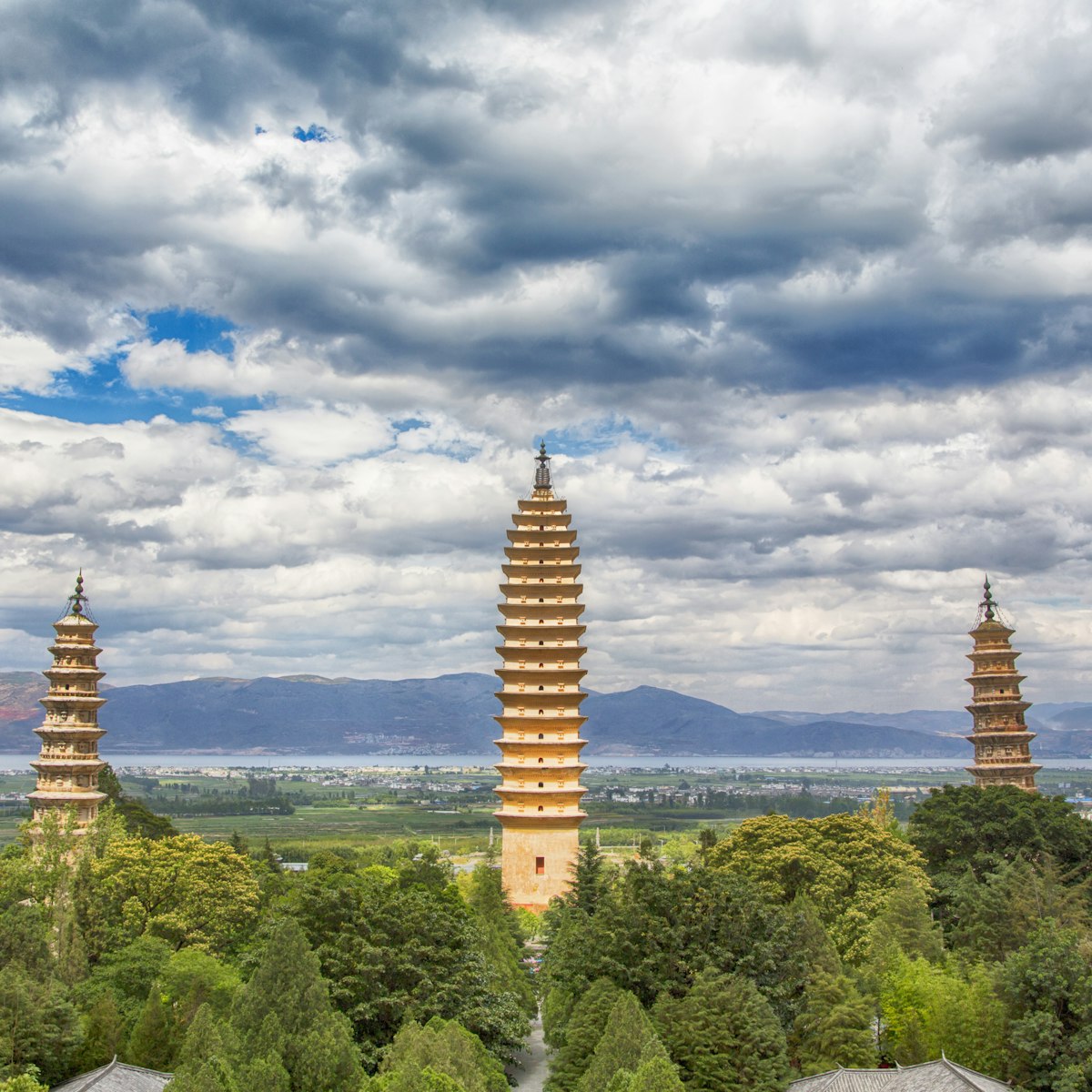
Three Pagodas
Absolutely the symbol of the town and region, these pagodas, a 2km walk north of the north gate, are among the oldest standing structures in southwestern…
Bamboo Temple
Tucked away atop a winding mountain road up the forested hills northwest of the city centre, this serene temple is definitely one to be visited by…
Gantong Temple
Originally constructed in the Tang dynasty, this was once the most important temple in the Dali area. Only one of the original 36 halls remains, but…
Duoyishu Rice Terrace
Located about 25km from Xinjie, this rice terrace has the most awesome sunrises. As it's walking distance from Pugaolao it's an easy choice for the…
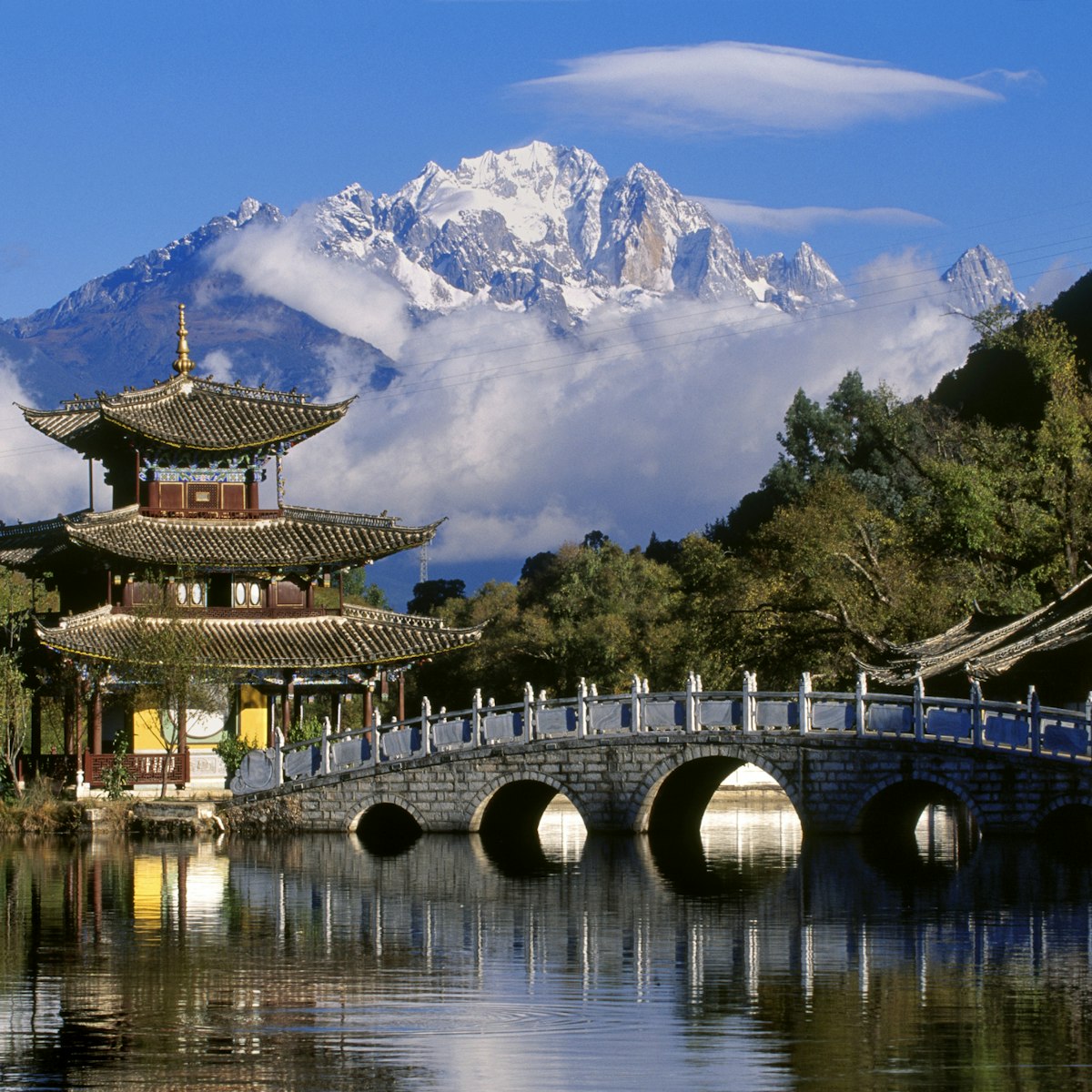
Black Dragon Pool Park
On the northern edge of town is Black Dragon Pool Park; the view from here of Jade Dragon Snow Mountain is an obligatory photo stop in southwestern China…
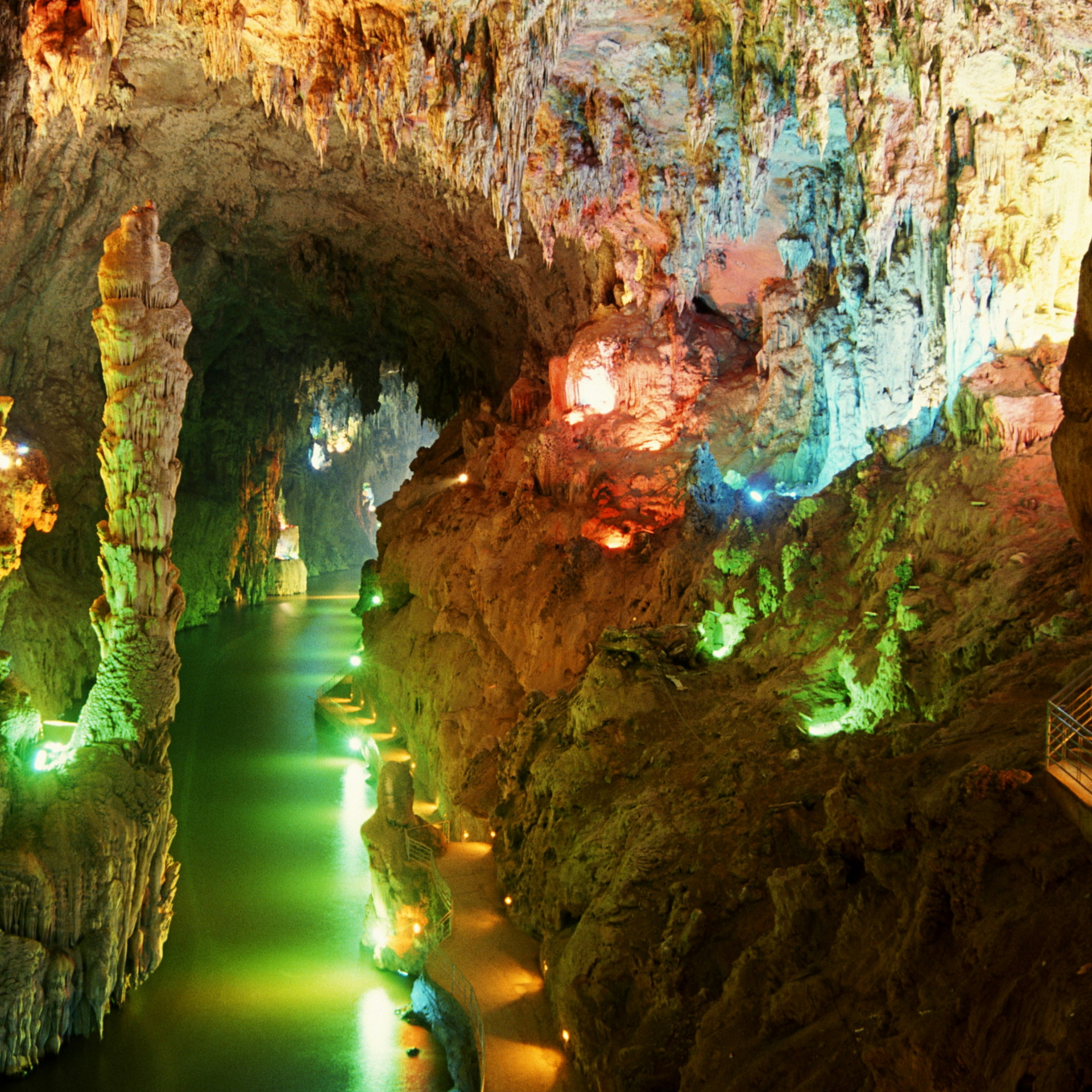
Swallow's Cavern
Set inside a small nature reserve, this large cave complex is split into two – one high and dry, the other low and wet. The natural quiet of the popular…
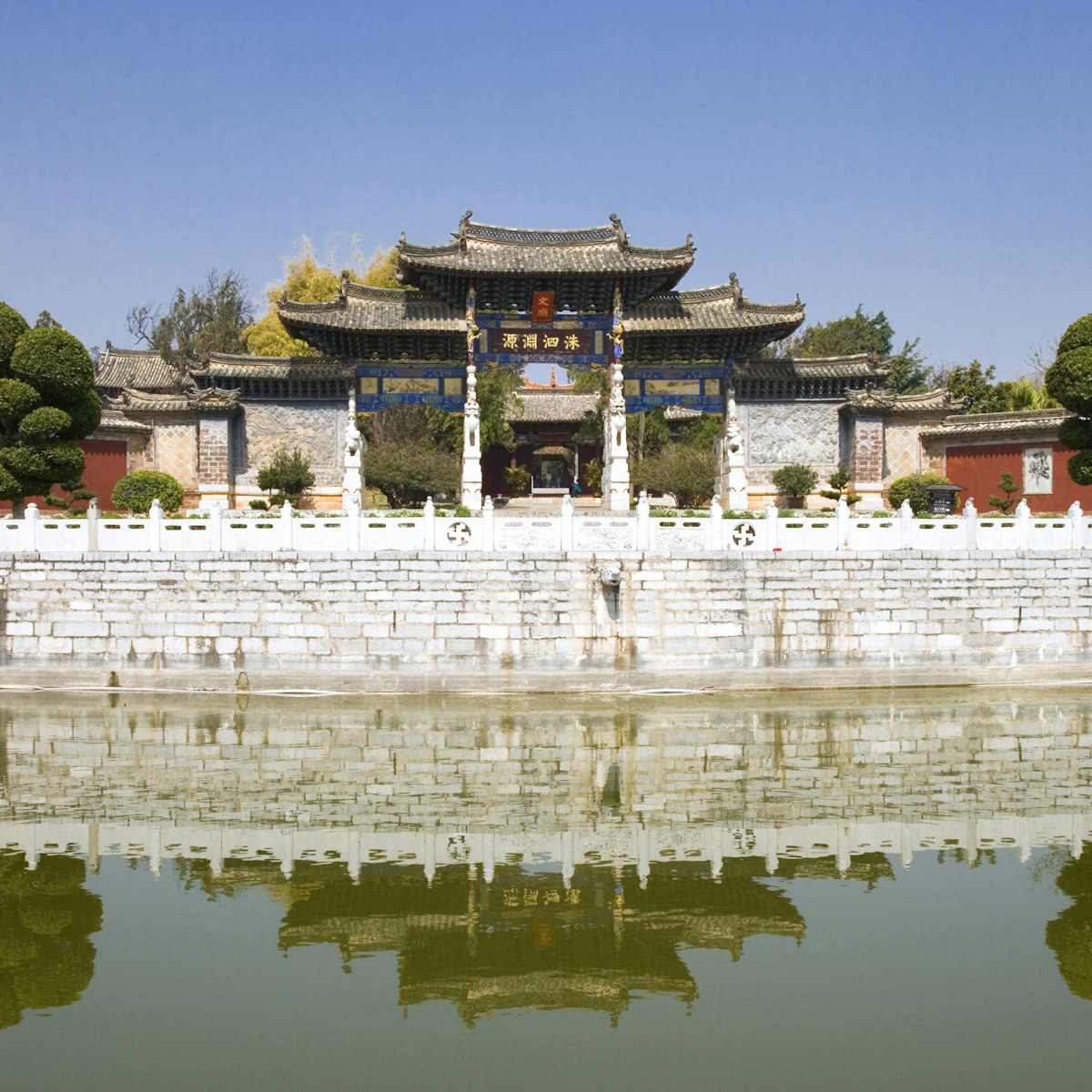
Confucian Temple
Jianshui’s most famous temple was modelled after the temple in Confucius’ hometown of Qufu (Shandong province) and finished in 1285; it covers 7.5…
Lijiang Old Town
The old town is centred on busy and touristy Old Market Square, with the Waterwheel defining the northern edge and the lively Zhongyi Market marking the…
Yúnfēng Shān
Dotted with 17th-century temples and monastic retreats, Taoist holy mountain Yunfeng Shan is 47km north of Tengchong. It’s possible to take a cable car…
Stone Forest
Inscribed on UNESCO's World Heritage list in 2007 as part of the South China Karst, Kunming's Stone Forest Scenic Area is undeniably beautiful – but…
Wandering anywhere along the forested trails and stone pathways throughout Shibao Mountain makes for a pleasant day trip out of Shaxi, but the real…
Yunnan Provincial Museum
Originally built in 1951, this museum's relocation in 2015 gave it a thoroughly modern 60,000 square metres of exhibition space. Displays span the…
Wēibǎo Shān
Weibao Mountain, about 10km south of Weishan, has a relatively easy hike to its peak at around 2500m. During the Ming and Qing dynasties it was the zenith…
Twin Dragon Bridge
This beautiful 30m bridge across the confluence of the Lu and Tachong Rivers features 17 arches, so many that it took two periods of the Qing dynasty to…
Tropical Botanical Garden
Xishuangbanna Region
Lovely tropical gardens – the largest botanic gardens in all China – with many rare plant species and decent English and Latin signage. Don't miss the…
Ruili Market
This is one of the most colourful and fun markets in all Yunnan, with a real swirl of ethnicities, including Dai, Jingpo, Han and Burmese, as well as the…
Taihua Temple
The courtyard of the Ming dynasty Taihua Temple houses a fine collection of flowering trees, including magnolias and camellias, and is a popular to place…
Ganden Sumtseling Gompa
This 300-year-old Tibetan monastery complex about 4km north of the old town is home to around 600 monks. Extensive rebuilding has robbed the monastery of…
Zhu Family Garden
This spacious 20,000-sq-metre complex, which includes 42 separate courtyards, is a fascinating example of Qing-era architecture. Comprising ancestral…
Green Lake Park
Come here to people-watch, practise taichi or just hang with the locals and stroll through winding lines that meander through the 22 hectares of ponds and…
Yan Family Compound
This traditional Bai-style wooden courtyard home was constructed by businessman Yan Zizheng in the early 1900s, using the fortune he made from trading…
Deqin Tibetan Autonomous Prefecture Museum
Attractive modern permanent exhibitions on local history, folk traditions and religious culture make this a worthwhile stop before or after the Guishan…
Huating Temple
Towards the bottom of the mountain is Huating Temple, a country temple of the Nanzhao kingdom believed to have been constructed in the 11th century. It’s…
National Memorial Cemetery
This touching cemetery and museum is dedicated to the soldiers who fought and died to defend Yunnan during World War II, including those fighting on…
Dabaoji Palace
The main historical draw of Baisha is the impressive collection of frescoes located inside the small complex, the earliest of which date to 1385. In…
Dragon Gate
On the upper reaches of Xi Shan, the 'Dragon Gate Scenic Area' is a collection of pavilions, temples and grottoes scattered along the mountaintop. The…
Dounan Flower Market
China's largest flower market is a riot of colours and smells, and a charming place to wander for an hour and see the diversity of species on offer. Try…
Dali Catholic Church
It's worth checking out Dali’s Catholic Church. Dating back to 1927, it's a beautiful blend of Bai-style architecture and classic Christian theology and…
Tropical Flower & Plants Garden
This terrific botanic garden, found west of the town centre, is one of Jinghong’s better attractions. Admission gets you into a series of gardens where…
Nanzhao Museum
Architecture and artefacts describe the rise and importance of the Nanzhao kingdom, as well as offer brief introductions to the many ethnic groups that…
Yuantong Temple
This Zen Buddhist temple is the largest Buddhist complex in Kunming and a popular draw for both pilgrims and locals. It’s more than 1200 years old, but…
Menghua Old Home
This great courtyard home, now owned by the government, is Weishan's best-preserved slice of architecture and also acts as a modest museum displaying…
Towering over the west side of Lijiang's Old Town, Lion Hill's 23 hectares of park land are a pleasant diversion. The obvious high point is the panoramic…
Quanfuzhuang Rice Terrace
Quanfuzhuang is a less-crowded – and free – alternative to Duoyishu, and has easy access via trails that reach the terraces from near a roadside viewing…
Guishan Buddhist Temple
Atop 'Great Turtle Hill' in the heart of the old town, this modern temple stands on the site of an original 1667 construction consecrated to a replica of…
Shangri-la Thangka Academy
Thangka master Lobsang Khudup trains young students in painting and Buddhist philosophy here. Even if you're not in the market to buy, it's worth stopping…
Gongchen Tower
Looming over the centre of town, this drum tower dates back to the 14th century and remains the very symbol of Weishan. Ascend the stone ramparts from the…
More destinations you need to see
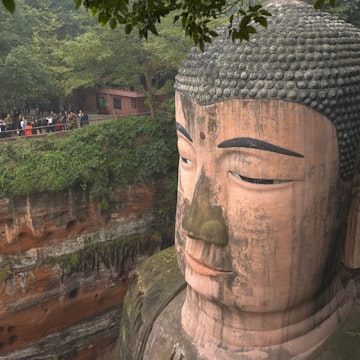
- [ January 14, 2024 ] EQUATORIAL GUINEA – Best 10 day itinerary with island marvels and mainland hidden gems Equatorial Guinea Travel Guide
- [ May 10, 2023 ] TOGO – Best 10-day itinerary for a road trip from south to north Itineraries
- [ November 20, 2022 ] DJIBOUTI – The best 1-week Djibouti roadtrip itinerary with a 4×4 landcruiser Djibouti Travel Guide
- [ November 18, 2022 ] YEMEN – Mainland Yemen itinerary with all the best places to visit in Hadramout Itineraries
- [ January 21, 2022 ] TRINIDAD – Port of Spain city walk: Top 12 things to see and do Trinidad & Tobago Travel Guide
- [ January 18, 2022 ] TRINIDAD – Hyatt Regency hotel review: Best luxury place to stay in Port of Spain Hotel reviews
- [ January 11, 2022 ] ISRAEL – Caesarea day trip from Tel Aviv: Must see Roman ruins Israel
CHINA – A two-week Yunnan itinerary travel guide: Kunming to Shangri-La
Table of Contents
Chinese visa
A summary of this yunnan travel guide for your private use to copy paste, yunnan itinerary day 1 & 2: arrival & kunming, yunnan itinerary day 3: shilin stone forest, yunnan itinerary day 4 & 5: to dali & city trip, yunnan itinerary day 6: to lijiang via shaxi, yunnan itinerary day 7: jade dragon snow mountain hike, yunnan itinerary day 8: lijiang, yunnan itinerary day 9: tiger leaping gorge hike, yunnan itinerary day 10: yuhu, baisha and shuhe old towns, yunnan itinerary day 11: to shangri-la, yunnan itinerary day 12: shangri-la, yunnan itinerary day 13: potatso national park hike, yunnan itinerary day 14: departure.
Yunnan is one of China’s most diverse provinces and this two-week Yunnan itinerary will take you to all the highlights. I have been to China plenty of times and this travel guide describes my trip from Kunming to Shangri-La. It’s suitable for a first time visit to China but best recommended for a second visit unless you do not care about China’s big five sights. I’ll give you some ideas on how to combine this China itinerary together with other area’s at the end too. Yunnan is so large that it’s impossible to cover every single point of interest but those I did cover are all the must-see places. I’ll give a few ideas on how to extend the trip too. When you read my day trip reports please note that I have re-scheduled this itinerary for better planning after my own experiences. Now join me by car, train and plane on this Yunnan travel adventure.
Planning a Yunnan itinerary
Planning a Yunnan trip is a lot of fun and there are many varieties. This Yunnan itinerary however does contain all the highlights along the Kunming to Shangri-La route. Keep in mind Shangri-La is sometimes called Zhongdian or Diqing. The latter is also the name of the airport.
This itinerary can be done in both ways but unless you’re already in China you probably arrive in Kunming. Kunming Changshui International Airport has several international flights worldwide and if that doesn’t suit you, you might want to check Chengdu. From Chengdu it’s a 1:30 hour flight to Kunming or you can combine the trip with a Sichuan itinerary from Chengdu. Diqing Shangri-La Airport doesn’t offer international routes but only to a few airports in China including Lhasa, Tibet. If you want to visit Tibet too that’s easily combined with my 7 days in Lhasa Tibet itinerary . If you don’t combine further trips in China, you can return to Kunming with a direct flight from Shangri-La and return home from there.
For the rest of the trip you must book the following:
- Kunming hotel: In Kunming I recommend staying at the Intercontinental Kunming or Crowne Plaza Kunming .
- Kunming to Dali: Book the train in advance and have the tickets delivered to your hotel. At the time of my travel there wasn’t a highspeed option yet but there will be in the future. My trip took about 6-7 hours.
- Dali hotel: In Dali make sure to stay in a hotel in one of the old houses that are hotels now.
- Dali to Lijiang to Shangri-La: If you want to visit Shaxi on the way from Dali to Shangri-La as a half day trip you must hire a car with driver for this part. You can keep the driver also for the day trips in Lijiang and the transport to Shangri-La.
- Lijiang & Shangri-La hotels: In Lijiang the Intercontinental Lijiang or the Indigo Lijiang are great choices located in the old city. In Shangri-La try a homestay!
That’s all! In all the cities you can use local taxi’s as they are very cheap. Now let’s look at a day by day description of this perfect Yunnan itinerary.
Several cities in China have the option for 24-144 hours visa on arrival but if you do a road trip they won’t be of any use. You can’t leave that city and you must continue to another country and not return to the same. I’m from the Netherlands and getting a Chinese tourist visa is straightforward and usually takes just a few days to approve. This should also be the case for other European Union countries. I recommend checking with the Chinese Embassy in your country for specific information as they know the best.
Yunnan itinerary day 1 & 2: Kunming, Yunnan itinerary day 3: Shiling Stone Forest, Yunnan itinerary day 4 & 5: to Dali & city trip, Yunnan itinerary day 6: to Lijiang via Shaxi, Yunnan itinerary day 7: Jade Dragon Snow Mountain hike, Yunnan itinerary day 8: Tiger Leaping Gorge hike, Yunnan itinerary day 9: Lijiang & small towns, Yunnan itinerary day 10 & 11: Lijiang town and to Shangri-La, Yunnan itinerary day 12: Shangri-La, Yunnan itinerary day 13: Potatso National Park hike, Yunnan itinerary day 14: departure
Kunming is the logical place to start a Yunnan itinerary as the city can be reached by international flights. I never like to do much on the day of arrival and normally just go to a spa for a massage, sleep early and be fit the next day without jetlag.
Kunming is also called the City of Eternal Spring because weather is nice year-round. Spending a day in Kunming should be enough to explore the places of interest. In the morning I recommend going to Guandu Old Town which is a well restored old town. There are two Buddhist temples, pagoda’s, and many shops in the old streets. You can take lunch there in one of the many outlets that serve street food.
In the afternoon go first to Yuangtong Temple in downtown Kunming. It’s a temple that’s famous throughout South East Asia as it has a unique layout. You’ll probably spend an hour there. After that it’s time to explore modern Kunming. Go shopping or just relax. I spend the remainder of the day at the pools of the Intercontinental Kunming .
Read all about my Kunming day trip in my trip report: CHINA – A day in Kunming, the City of Eternal Spring
The Shilin Stone Forest UNESCO World Heritage Site day trip from Kunming is one that you must include on your Yunnan itinerary. It’s not a real forest of course but has stones that look like they “grow” from the earth. Getting there takes 2-3 hours by car/taxi so make sure to depart early and arrive around 9-10AM if possible. The area is large and expect to walk around for 3-4 hours to get a good impression.
The formations at the Shilin Stone Forest were formed millions of years ago when and old sea evaporated, and the surface lifted. Soft stone has eroded leaving the hard ones behind. This formed arches, caves, and all kinds of sculptures. One looks just like an elephant!
After the visit you can either return to Kunming or explore a bit more of the area. There are more caves, lakes, and interesting small rural towns. Suogeyi town is part of the UNESCO inscription and a nice non-touristic rural town. From there continue to Changhu Lake before heading back to Kunming. Alternatively go to one of the other places of interest; directions are easy.
Want to know more about the Shilin Stone Forest UNESCO site ? Check my complete day trip report: Shilin Stone Forest UNESCO World Heritage Site day trip from Kunming
EXTEND YOUR TRIP : Are you a history buff? Or a UNESCO site collector? Then check my 520 million years of history at Cambrian Chengjiang Fossil Site day trip report. This site can be reached as a day trip from Kunming, but I only recommend doing this if it interests you. Decide yourself if you want to extend your trip by a day.
The trip from Kunming to Dali takes 7 hours by soft sleeper train. There will be a highspeed connection some day in the future too reducing time to just 2 hours. I’ll update this article once it’s finished. I recommend spending 2 nights in Dali so that you have a full day to explore town. To be honest I rushed my Yunnan itinerary with just a night stay, and I can’t recommend that. On the day of arrival, you won’t have much time left to explore town. Just go out for street food but I can’t directly recommend one place as places change so often and thus, I don’t cover them in this Yunnan blog.
Dali is a beautiful “new” old town. This means that most houses are restored and rebuild in traditional way. That doesn’t matter much as the atmosphere is great. If you want real old towns then Xidi and Hongcun (in east China) are two worth checking out. Before exploring Dali go first in the morning to the Chongsheng Temple 3-pagoda temple. It’s a must see just outside of Dali. Then go for lunch back to Dali and check out the gates, temples, the narrow streets, and other Yunnan highlights. If you go during Chinese holidays you can walk over the people as you can see in the photo below. Try to avoid that as it ruined my visit a bit as I could not enjoy this lovely town to the fullest.
Want to know more about the Dali day trip and Shaxi day trip then check my complete in depth trip report: CHINA – Exploring beautiful Dali & Shaxi on the way from Kunming to Lijiang
The best way from Dali to Shaxi (2 hours), and further to Lijiang (1.5 hours) is by car. This allows you to visit Shaxi on the way to Lijiang for a few hours and if you go early even have an early morning stop at Erhai Lake too. I recommend to hire the car for the next days too until arrival in Shangri-La. It will make your trip much more convenient then looking for transport each day again.
Shaxi is a beautiful authentic town and one of the oldest surviving horse Caravan towns in China. The streets are lined with shops and restaurants where you can see what locals do. It’s not over touristic. Make sure to visit the Bai Buddhist Xingjiao Temple and the arch bridge. Two iconic sights in Shaxi. I wandered around Shaxi for several hours after which I continued to Lijiang where I would stay at the Intercontinental Lijiang which is located inside the old town.
I love to make a hike now and then and that’s why I added some great Yunnan trekking in this itinerary too. The Jade Dragon Snow Mountain hike is the first just 30 minutes outside of Lijiang. With an altitude up to 4800 meters it’s a long hike but the first part is by cable car as otherwise it wouldn’t be possible to go up and down in a day. A tough hike the last 1000 meters as oxygen is low. If you’re not used to altitude you can buy oxygen at the entrance which will help you get there.
The Jade Dragon Snow Mountain gets its name from the 13 peaks resembling a jade dragon. At the top the altitude is almost 6000 meters, but you can’t go there unless you are an experience mountain climber. Once you reach the top make sure to buy a medal engraved with your name. You did well! Just a few stairs down you can make a slide in the snow but keep in mind it’s not actually allowed. Be carefully of rocks below the snow. It’s on your own risk. If you have energy left, you can go hiking in the country side. The scenery is amazing there. I went back to Lijiang where I changed hotels to Indigo Lijiang where I had a private BBQ in my villa.
Check my day trip report about Jade Dragon Snow Mountain for more information: CHINA – A Jade Dragon Snow Mountain day trip from Lijiang
With a history of over 1000 years Lijiang wasn’t known to the outside world until after the earthquake of 1996. The old town was mostly destroyed but reconstructed quickly. In 1997 it got the UNESCO World Heritage Site status together with the small towns Yuhu, Baisha and Shuhe. These events made Lijiang a Yunnan highlight and known to the world and within China. Lijiang has a beautiful old town where I stayed in luxury at both the Intercontinental Lijiang and the Indigo Lijiang .
Lijiang was once part of the Old Tea Horse Caravan Trail and ruled for five centuries by the Mu family. The Mu family complex is the main attraction in Lijiang old town. All streets are lined with beautiful typical Naxi houses. Walking through the narrow streets will get you “lost” at some point but that’s the beauty of exploring. A day is easily spent in Lijiang old town which is one of Yunnan’s highlights.
Read all about Lijiang Old Town including all highlights in my day trip report: CHINA – Two days in Lijiang old town and outlying small villages
Tiger Leaping Gorge is located between two snowcapped mountains called Jade Dragon Snow Mountain and Haba Snow Mountain. Each of them are holy mountains and Haba Snow Mountain area is part of the Three Parallel Rivers of Yunnan Protected Areas UNESCO World Heritage Site. The gorge is one of the deepest in the world with a length of 15 kilometers. A true Yunnan highlight. To reach Tiger Leaping Gorge it takes just over an hour by car from Lijiang. A taxi is not a good option as it can’t cross into the Shangri-La county so make sure to have a private driver.
This Tiger Leaping Gorge hike is amongst the best Yunnan trekking you can get. First make a short stop at the start of the gorge and see the spot where legend says a tiger jumped across the river escaping a hunter. The full hike is difficult to do in a day, so I went with car all the way up to Halfway Guesthouse. I had a very early lunch there and hiked from there to the end at Tina’s Guesthouse. The 2 nd half of the full trail is the most beautiful part and takes up to 4 hours. I went back to Lijiang for the night.
Read all about my Tiger Leaping Gorge hike in my day trip report: CHINA – A day trip from Lijiang: the Tiger Leaping Gorge Hike
EXTEND YOUR TRIP: It’s possible to hike the full gorge too. You can extend this Yunnan itinerary by going to the Tiger Leaping Gorge before the day you go to Shangri-La. Do the first part of the trek the first day. Stay overnight in the gorge and finish the second part (the part I did) the next day and go to Shangri-La. If you want to go trekking in Yunnan the Tiger Leaping Gorge hike is the most famous to do.
On day 10 of this Yunnan itinerary you will explore Naxi minority villages and see rural China. There are 3 small old towns inscribed together with Lijiang as the UNESCO World Heritage Site. I visited Yuhu, Baisha and Shuhe on a day trip from Lijiang by car. Yuhu is famous for its Naxi houses made of stones and mud. It doesn’t see many visitors and kept its authentic look. Baisha Old Town was once the center of the Naxi people before they moved to Lijiang. It’s about 10 kilometers away. It’s not yet fully commercialized but Shuhe Old Town is. Shuhe is just 2 kilometers from Lijiang. Each town has family houses, temples, and workshops you can visit. Expect to spend 2-3 hours in each. You won’t have time to explore each single street but the core area you can see. If you want more time, I recommend skipping Baisha even though Shuhe is more commercialized. I always enjoy going away from the tourist and therefore Yuhu is my favorite.
Read all about Yuhu, Baisha and Shuhe in my day trip report: CHINA – Two days in Lijiang old town and outlying small villages
SHORTEN YOUR TRIP : If you want to shorten your trip by a day, I recommend visiting one of the small towns after your trip to Jade Dragon Snow Mountain. Do go early to the mountain preferable before opening time to be in the front of the queue. You won’t be able to visit more as one in this case.
I started the day with relaxing in the morning at the pool of the Intercontinental Lijiang . After lunch the driver picked me up for my transfer to Shangri-La. The drive from Lijiang to Shangri-La takes probably 4-5 hours which can be faster as this totally depends traffic. During the drive you’ll pass various food stalls along the road selling dried Yak meat. Make sure to buy some. It’s delicious. The altitude increases throughout this Yunnan itinerary so that altitude sickness won’t be a problem. One more reason to start in Kunming. I arrived late evening at my hotel in Shangri-La. Traffic was bad.
Check also my Lashi Lake day trip report if you extend your trip: CHINA – Lashi Lake from Lijiang: horseback riding & canoeing
EXTEND YOUR TRIP : You for sure have time to make a stop at Lashi Lake if you go in the morning to Shangri-La but to fully experience the area you won’t. My original Yunnan itinerary was longer as I planned a full day leisure at Lashi Lake . The area is famous for horseback riding which I did in the morning. After lunch I enjoyed various water activities including canoeing at the lake. A completely different day compared to most other days of this Yunnan itinerary.
Day 12 was a day off for me. I did check out a bit of old Shangri-La including the Golden Temple. The rest of the day I used to catch up with work emails. I did that because I combined this Yunnan itinerary with a Tibet itinerary which totaled over 3 weeks. This day was in the middle. I have plans to return to the area anyway but if you don’t make sure to go to Songzanlin Monastery. It’s a Tibetan monastery just 30 kilometers away. I will visit another time when I’ll go deeper into the mountainous Tibetan area. In the evening I went with the driver to a local place for Yak meat. That was the spiciest yet delicious dish I ever had. I don’t know where it was exactly but just ask around and you’ll find a great place too.
If you arrive at Potatso National Park (also called Pudacuo National Park) you might think I have added a weird street food place on this Yunnan itinerary. The entrance is a kind of alley with many food stands. A good place to buy some local yak dishes to have new energy for the walk ahead. The altitude is 3600 meters so you might want to buy some chocolate too. It will help with the lack of oxygen.
The Potatso National Park was the first national park in China and for sure a Yunnan highlight. It is home to both the Bita and the Shudu lakes of which the first is a UNESCO World Heritage Site. The hike goes along the two lakes over a wooden walkway so that you really get close to the nature without having to climb over trees or walk through mud. The area is magnificent with crystal clear water, smelling pine trees and fields full of yaks.
Read all about the short hikes in Potatso National Park in my day trip report: CHINA – A hike through the Potatso national park near Shangri-La
Everything comes to an end and so does this Yunnan itinerary. I hope my selection of Yunnan highlights, Yunnan trekking and everything else Yunnan will make you want to go to. This Yunnan travel guide for sure covers all the main places of interest. I continued to make a 7 days trip in Tibet but if you must return home you can catch a flight back to Kunming. You can also fly elsewhere in China as it’s a huge country. I’ll add more China itineraries over time!
If you don’t want more China, I recommend checking my 2 weeks Vietnam itinerary , 2 weeks Thailand itinerary , 2 weeks Japan itinerary or my 3 weeks in Indonesia itinerary . Completely different cultures but just a few hours away. Do let me know how you travelled in Yunnan after you have visited in the comments below!
Stay tuned for more stories and subscribe to the newsletter or follow CTB on social media ( Facebook , Twitter , Instagram including Instagram stories; on all social media you can find CTB @christravelblog) to get updated information.
Did you visit Yunnan province in China too or do you have questions? Please leave a comment at the bottom of the page. Love to hear from you!
Related Articles
Tunisia – el jem day trip from sousse (or tunis) & sfax medina tour.
Table of ContentsEl Jem day tripHow to get to El Jem AmphitheaterEl Jem day trip: The Roman amphitheaterEl Jem day trip: Museum & Roman VillaSfax medina tourHow to get to SfaxSfax medina tour: Wander the souksMuseum Dar JallouliSfax kashbahGallery El Jem & Sfax Tunisia has [read more]
MEXICO – Exploring Yucatan: An amazing 10 day Yucatan itinerary
Table of ContentsYucatan itinerary planningYucatan itinerary day 1: arrival in CancunYucatan itinerary day 2: Muyil, Cobá and TulumYucatan itinerary day 3: Time to relaxYucatan itinerary day 4: Ek Balam & Izama en route to MeridaYucatan itinerary day 5: Dzibilchaltun Mayan site & Merida city centerYucatan [read more]
YEMEN – Mainland Yemen itinerary with all the best places to visit in Hadramout
Table of ContentsHow to plan a trip to YemenYemen itinerary pre-arrival day: Arriving to CairoDay 1 Yemen itinerary: Flight from Caïro to Seiyun & Yemen immigration Day 2 Yemen itinerary: Eastwards hunting Tombs & ShrinesDay 3 Yemen itinerary: Seiyun to Wadi Do’an with Shibam as highlightDay [read more]
All text, images, photos and videos are copyright © by Chris Travel Blog / CTB Global® 2009-2024, all rights reserved. Unauthorized use and/or duplication of this material without express and written permission is strictly prohibited. Excerpts and links may be used, provided that full and clear credit is given to Chris Travel Blog / CTB Global® with clear written note and link to the original content. Read the privacy statement to learn how personal data is collected and stored!

10 Days Itinerary for Yunnan, the most diverse province in China
By Author Christian L.
Posted on May 25, 2021
Categories Asia , China , Destinations
China is an incredible country, brimming with epic sights, exciting experiences and a fascinating history spanning back thousands of years. However, with so much to see and so many places to visit in China , it’s best to focus on one area when deciding on an itinerary, rather than trying to see too much. If you have only 10 days and want to see China at its most vibrant, a Yunnan itinerary is hard to beat.

Why you should travel to Yunnan province?
Yunnan province in southwestern China is one of the most varied and diverse provinces in China, both in terms of natural beauty and cultural experiences. This province is incredibly diverse, with steaming jungles with elephants in the south, all the way to the borders of the Tibetan plateau in the north.
Between these extremes, you’ll find some of the finest attractions in China. Whether you’re looking to explore ancient towns, see ethnic minority groups, hike the spectacular Tiger Leaping Gorge, be blown away by the incredible Blue Moon Valley , or want to indulge in unique Chinese food, Yunnan truly has it all.
Yunnan has a very pleasant climate, and can be visited throughout the year. With good infrastructure, visiting Yunnan is easy and can easily be done independently.
If you’re looking for the best Yunnan itinerary for 10 days, you can’t go wrong with the Kunming – Dali – Lijiang – Tiger Leaping Gorge route.
How to get to Yunnan
The gateway to Yunnan province is the capital city of Kunming (also known as The Spring City due it’s fantastic climate).
Kunming Changshui International Airport is well connected with the rest of China, as well as other Asian countries such as Thailand , Korea, Vietnam , Nepal and Indonesia . Lijiang also has an airport, but it’s often cheaper and more convenient to fly to Kunming.

Kunming can also be reached from all over China with high-speed trains which make traveling to Kunming easy and comfortable, there are 10 high-speed trains between Kunming and Chengdu each day with the faster only taking 5hours and 8min. 3 high-speed trains from Beijing each day with the faster only taking 10 hours and 49 min to travel the 1,700 miles (2,735 km) distance between the two cities. 4 high-speed trains between Shanghai and Kunming each day, taking 10 hours and 39 min for the 2,266 km (1, 408 miles) long journey. This is also China’s longest east-west high-speed rail line And Kunming has more than 20 high-speed trains to Guangzhou everyday, with the fastest only taking 6 hours and 32min to complete the 1658km (1,030 miles) long journey. Once in Kunming, regular bullet trains will whisk you off to destinations further afield in Yunnan province.
10 Days Itinerary for Yunnan Overview
Day 1: Arrive Kunming – Dali
Day 2: Dali
Day 3: Dali
Day 4: Dali – Lijiang
Day 5: Lijiang
Day 6: Lijiang
Day 7 Blue Moon Valley
Day 8: Tiger Leaping Gorge
Day 9 Tiger Leaping Gorge
Day 10 Lijiang – Kunming
Day 1: Kunming to Dali
With only 10 days, you will unfortunately not have much time to spend in Kunming. Instead make your way to Kunming Railway station right away to catch a bullet train to Dali.
To get from the airport to Kunming Railway Station, take the airport shuttle bus from just outside the arrival terminal. Bus number 2 or 6 both go to the station, and should take about 45 minutes depending on traffic. Buses run every half hour and cost RMB 25.
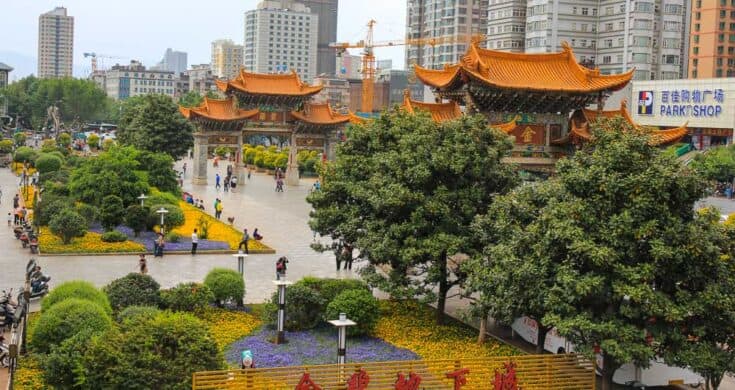
There is a train to Dali every 20 minutes or so, and the journey takes about 2.5 hours. For convenience, it’s best to book your train tickets online at Trip.com.
Once you arrive in Dali, make your way to Dali Old Town, which is about 30 minutes by bus away from Dali station.
Day 2,3: Dali
The Old Town of Dali has been a favourite amongst local and international visitors for years, yet it still retains a lot of its laid back charm and atmosphere. Dali is known as somewhat of a backpacker heaven for its laid back atmosphere, lakeside setting and great weather. People often end up staying longer than they planned. That being said, Dali has not been spoilt by mass tourism, and that is perhaps the best thing about Dali.
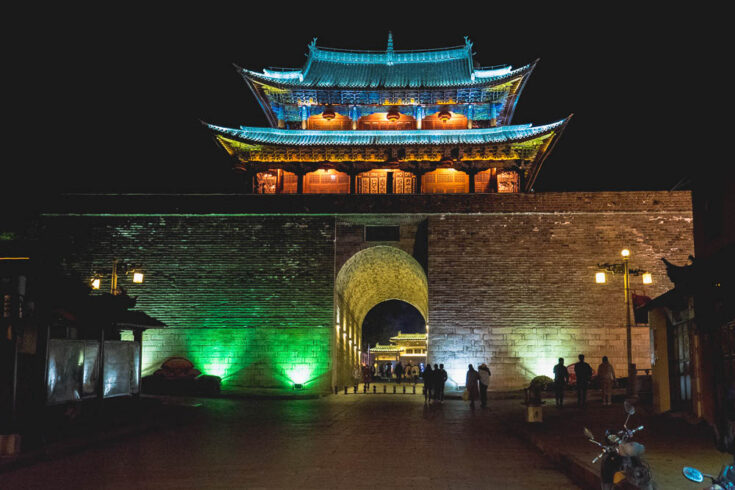
Surrounded by a city wall and 4 gates leading into the old town, Dali is a great little town to explore on foot. Spend your first day leisurely exploring the old town.
The cobblestoned streets of the old town are filled with quirky shops selling souvenirs such as amber, Bai minority tribe handicrafts and wild mushrooms which Yunnan is famous for. Trying wild mushroom hotpot is also an excellent idea. Another snack you must try in Dali is grilled yak cheese, which Bai women grill over hot colals right on the street all over the old town.
On the second day, rent an electric scooter and head out to explore the lovely countryside around Dali.
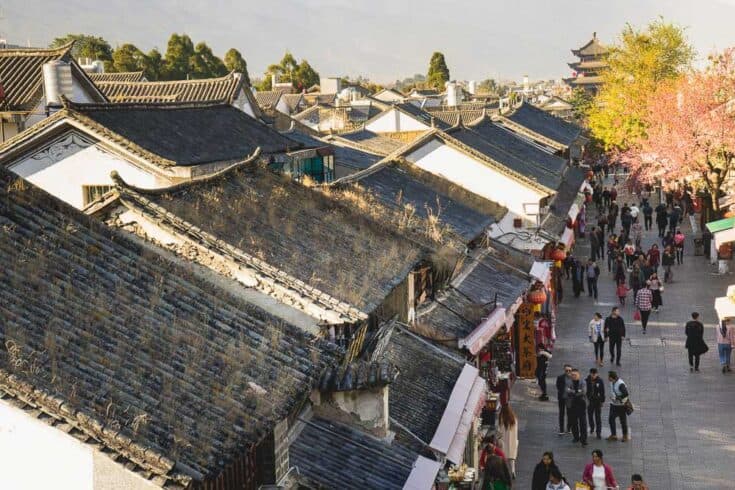
The imposing Three Pagodas just outside town should be your first stop. These three ancient pagodas dating back to the 10 th century are magnificent, and the setting right in front of the Changsan Mountains are a sight to behold. The main pagoda is 16 stories high and almost 70 meters tall. Surrounding the pagodas are lovely gardens and ponds, which are perfect for getting photos with the reflections of the pagodas.
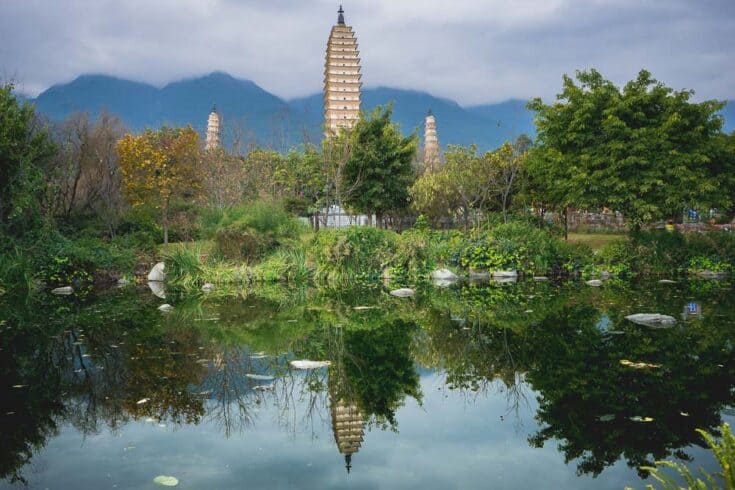
After spending a few hours admiring the gardens, ponds, temples and pagodas, jump back on your e-bike and follow the signs to Lake Erhai. The drive along the shores of the lake will take you past strawberry farms, mountain scenery and pretty rural villages.
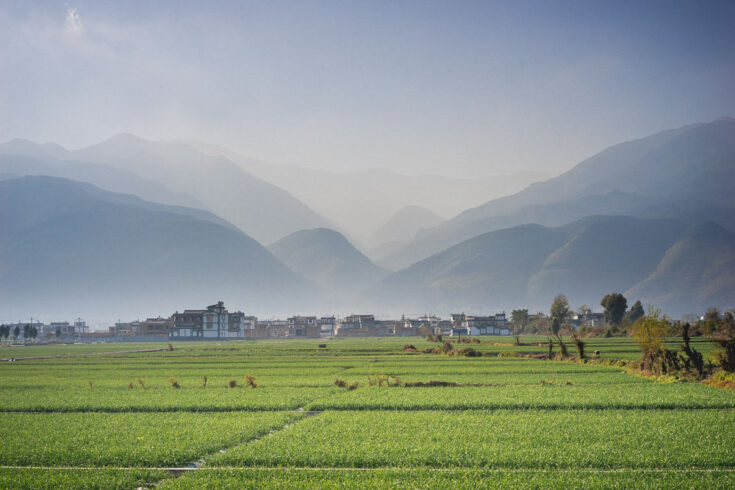
Notice the cat statues on the roofs of the houses as you explore the villages of Lake Erhai. The cat statues, with the mouths wide open, have a dual purpose: scare away evil spirits, and catch good luck and wealth in their wide-open mouths.
Day 4, 5, 6 : Lijiang
Catch the morning train from Daili at 10:00 to Lijiang and you should arrive in Lijiang before 13:00.
The picturesque old town of Lijiang is perhaps the most popular attraction in the whole of Yunnan province – for good reason.
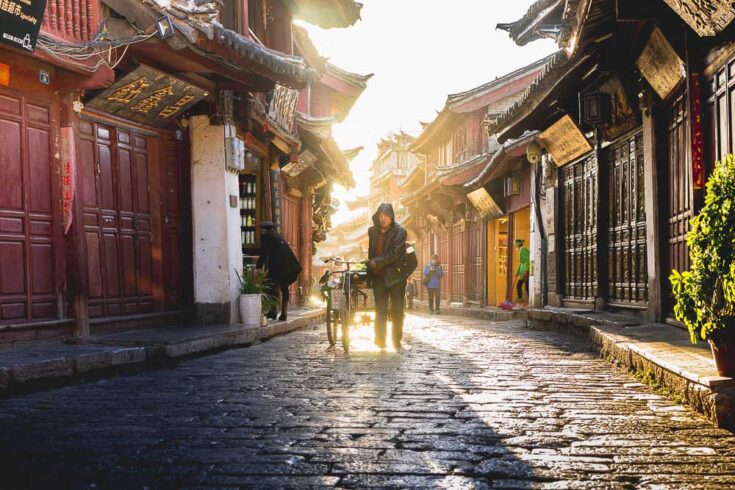
This well-preserved ancient town dating back to the 11 th century is drop dead gorgeous with wooden architecture, cobble stoned streets, canals running through town, friendly Naxi minority people – all backed by the snow- capped Jade Dragon Snow Mountain not far away.
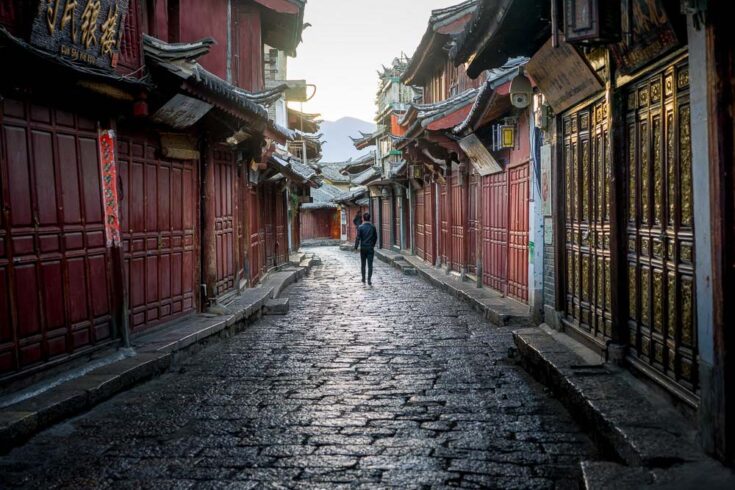
Word of advice: Beautiful Lijiang has been popular with Chinese tourists for decades and, as a result, it can get incredibly busy. This does not mean that you should avoid visiting Lijiang. Just keep your expectations in check. To best enjoy Lijiang, get up early and enjoy the stunning town before the crowds descend. Also remember that most tourists stick to certain areas, which leaves other areas beautifully undisturbed. All things considered, Lijiang is a great place to visit, and the large number of visitors actually contribute to a lively atmosphere.
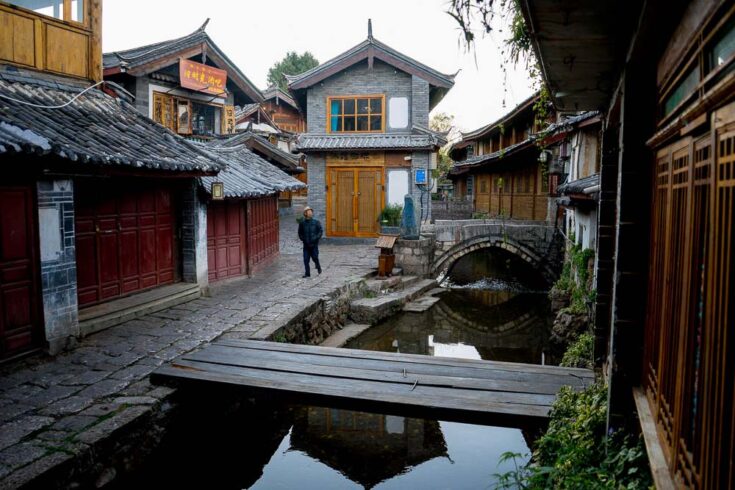
Spend the next few days walking all over Lijiang and discover hidden alleys, cute teahouses and more than enough options for street food. Over the next few days, make sure to check out the following places of interest:

The Black Dragon Pool
Just outside the old town of Lijiang, this incredible park has some of the most iconic views of Yunnan. At various points in the park, you’ll get a beautiful view of the Jade Dragon Snow Mountain with an arched, stone bridge and pagoda in front of it, and the Black Dragon Pool in the foreground.
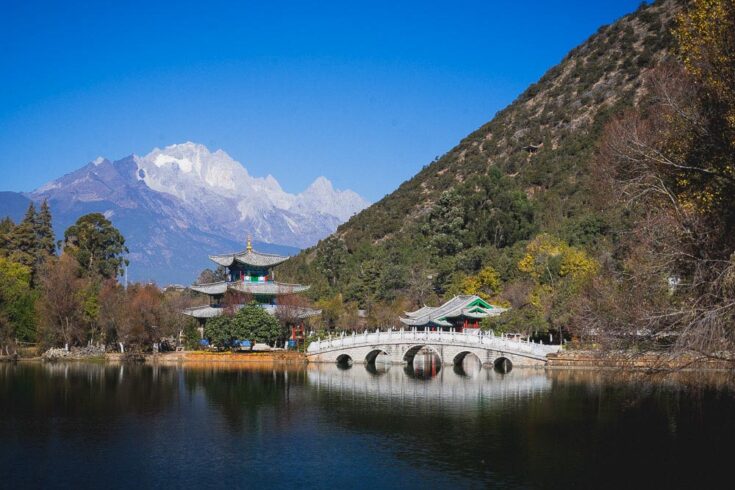
Almost as spectacular as the views and the serenity of the park is the fish in the crystal-clear ponds. Thousands of fish in all sizes and colours will keep you mesmerized for quite a while. You can also buy some fish food to join the locals in feeding these beauties.
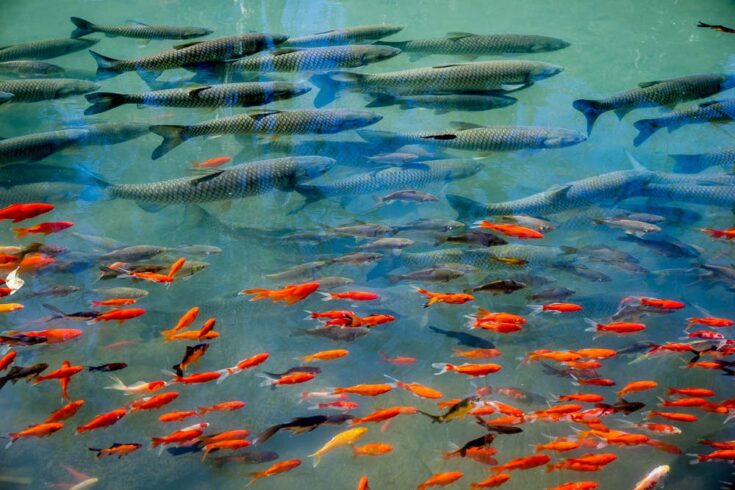
Wangu Tower
Sitting on the highest point in Jiliang, the area surrounding the Wangu Tower offers a sweeping view over the black tiled roofs of the Lijiang Old Town. Pop into one of the many tea houses for a drink to rest your feet and enjoy the view.
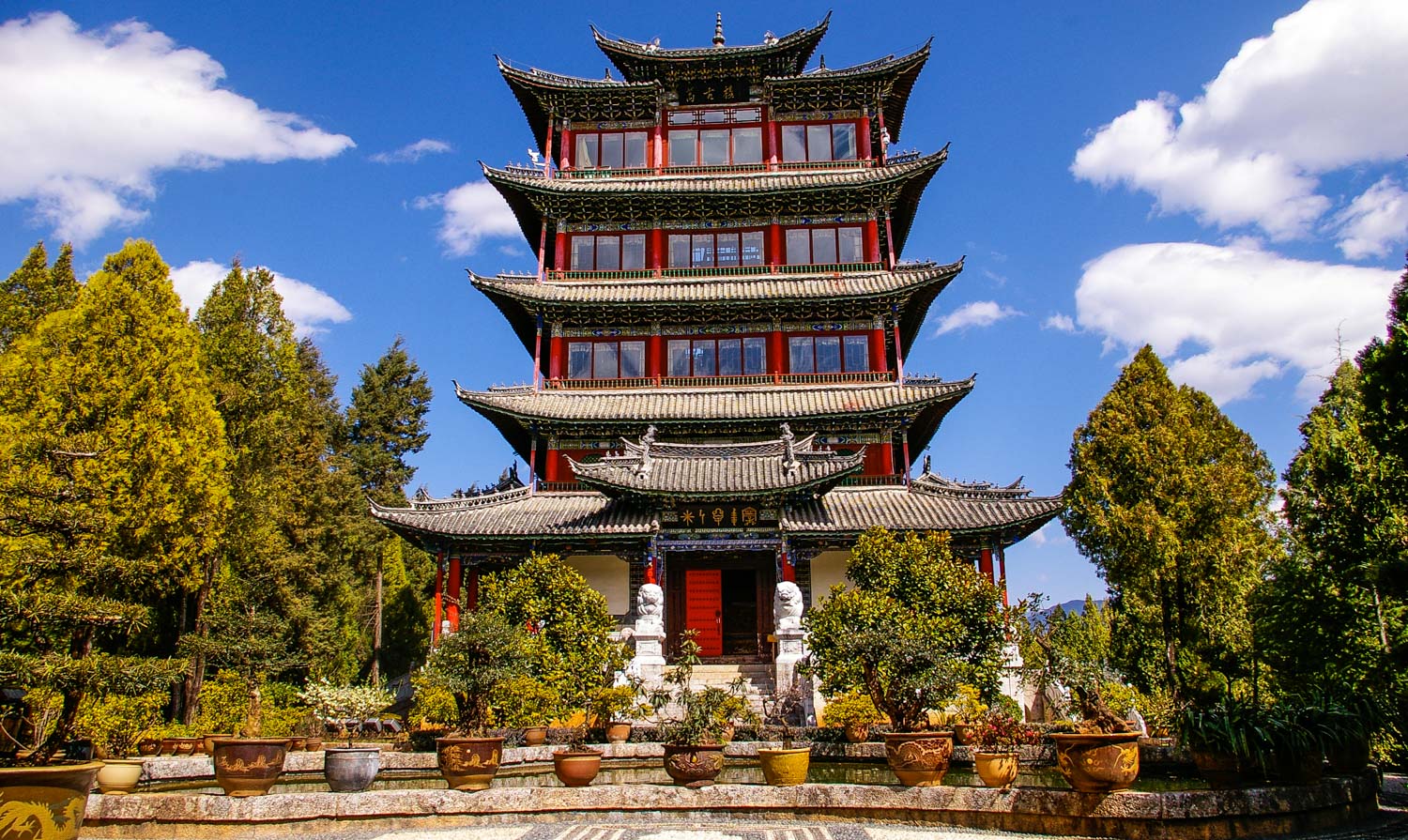
Dance in the town squares
You’ll find people of the local Naxi minority group dancing in the town squares throughout the day. Everyone is free to join in, and it’s good fun. This continues into the night, and it’s much livelier after dark. It’s very acceptable to get a cold beer from a convenience store and drink it in the squares while enjoying the entertainment.
Visit the Tea Market
There are hundreds of Tea houses and shops scattered all throughout Lijiang Old Town. You can pop into any of them, and you’ll be treated with a little tea ceremony and the chance to try various teas.
Yunnan province is well known for its high-quality tea, of which Pu-erh tea is the most famous.
For a less touristy (and cheaper) experience, head to the Tea Market, located just outside the old town. Vendors will be quite surprised seeing foreigners here and will go out of their way to sell you some tea. Like at the tea shops in the old town, they will put on a tea ceremony and keep the good stuff coming until you’ve found what you were looking for.
Suhe Old Town
When the crowds in Lijiang get too much, jump in a taxi and drive out to Suhe Old Town. Suhe is only 4km away from Lijiang but is a world away. Although Suhe is much smaller than Lijiang, it makes for a very enjoyable half-day trip. The Tea Horse Road Museum, set in a handsome old building offers informative displays on the history of the area and how the trade in tea has formed the history and culture in this part of Yunnan.
Day 7: Blue Moon Valley
For once, the Blue Moon Valley is more than just a catchy name and is indeed as cool as it sounds. This incredible valley, located at the foot of the Jade Dragon Snow Mountain makes for an excellent half or full-day trip from Lijiang.
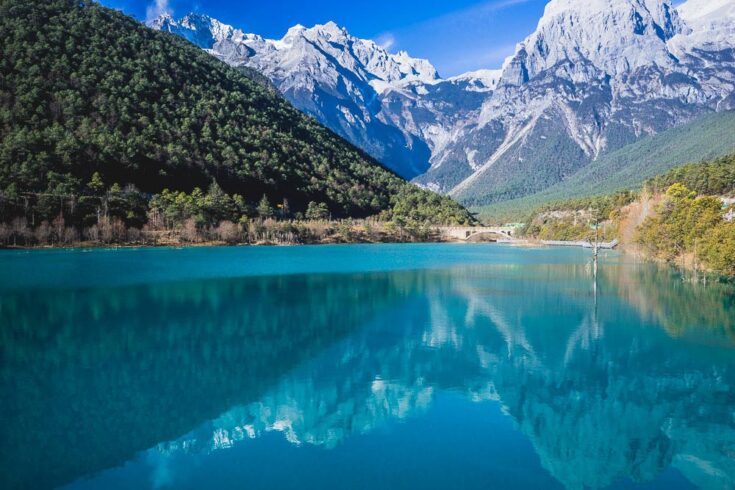
The Jade Dragon Snow Mountain scenic area is home to various surreal landscapes, of which the Blue Moon Valley is perhaps the most unbelievable. A series of ice-blue lakes sit right in front of the snow-capped mountain behind it, and you’ll be excused if you thought that you were dreaming and woke up somewhere in the Rockies.
An incredible sight to see it submerged trees standing like skeletons in that surreal and crystal-clear water. If you are looking for a unique photo opportunity, you could also dress up in the local Naxi attire and ride a yak in that unworldly scene.
As to be expected of one of Yunnan’s most beautiful attractions, it can get unbelievably busy. To enjoy this amazing sight, come here first thing in the morning, before the tour buses arrive.

Other than the blue lakes, you could also visit meadows and grasslands, or ride a cable car to the glacier on top of the Jade Dragon Snow Mountain.
Day 8,9: Tiger Leaping Gorge
Two hours by bus north of Lijiang, the Tiger Leaping Gorge is one of China’s most spectacular (and accessible) adventures. The Tiger Leaping Gorge is the deepest gorge in the world, with a height of almost 3000 meters from the river at the bottom of the gorge to the mountain tops beside it.
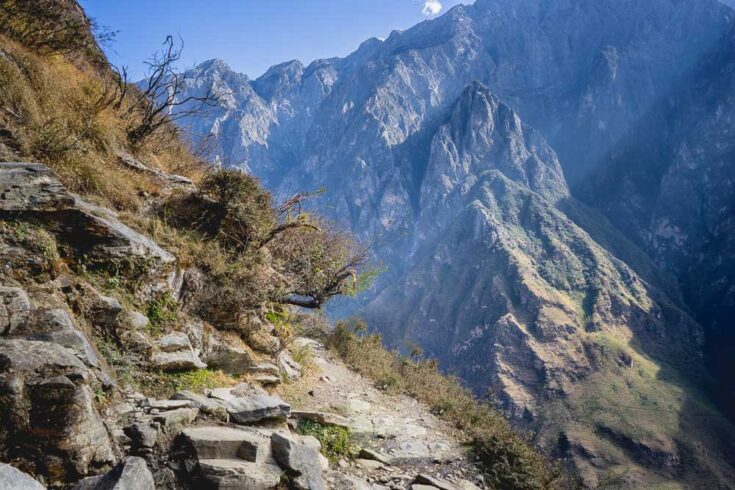
Hiking the Tiger Leaping Gorge usually takes two full days, but if you’re pressed for time, or don’t want to walk that long, it’s possible to cut it down to only a one-day walk.
If walking for two days, start walking at Qiaotou where the bus will drop you. From here it will take most of the day to reach the stunning Tea Horse Guesthouse where you can spend the night. Otherwise, get a taxi in Qiaotou to take you to Tea Horse Guesthouse. You could spend the rest of the day enjoying the spectacular mountain scenery, or take short walks in the area.
After a comfortable sleep, some delicious mountain food and bright starry skies, hike from Tea Horse Guesthouse to Tina’s Guesthouse.
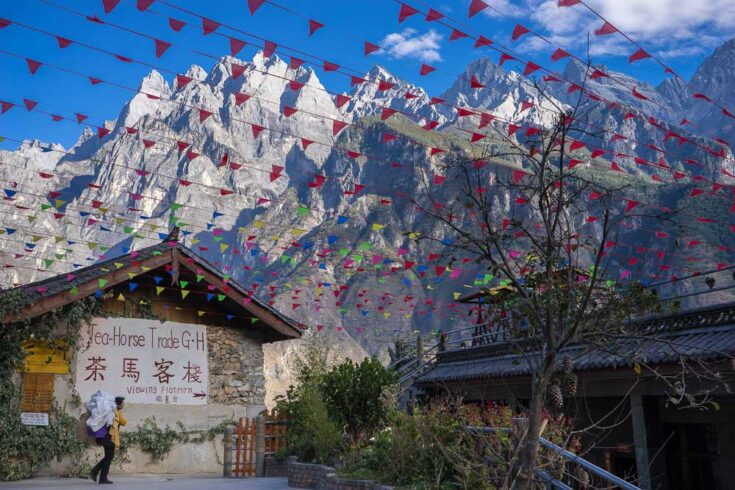
The hike between these two guesthouses is the most beautiful stretch of the gorge, and known as the Middle Gorge, takes about 6 hours to walk, and the scenery just keeps on getting better around every bend in the path. Along the way you’ll walk past waterfalls, farmers herding sheep, sheer drop-offs and you might even spot rainbow clouds if you’re lucky.
You should reach Tina’s Guesthouse around lunch, so grab a bite to eat and perhaps something stronger to celebrate the end of hike. The bus back to Lijiang leaves from Tina’s Guesthouse at around 15:30 in the afternoon. If all goes well, you should be back in Lijiang just before sunset.
Day 10: Lijiang – Home
Today is the last day of our Yunnan itinerary. You could get a flight from Lijiang Sanyi Airport, which has good connections to most major cities in China. Alternatively, you could backtrack to Kunming in about 3 hours by fast train.
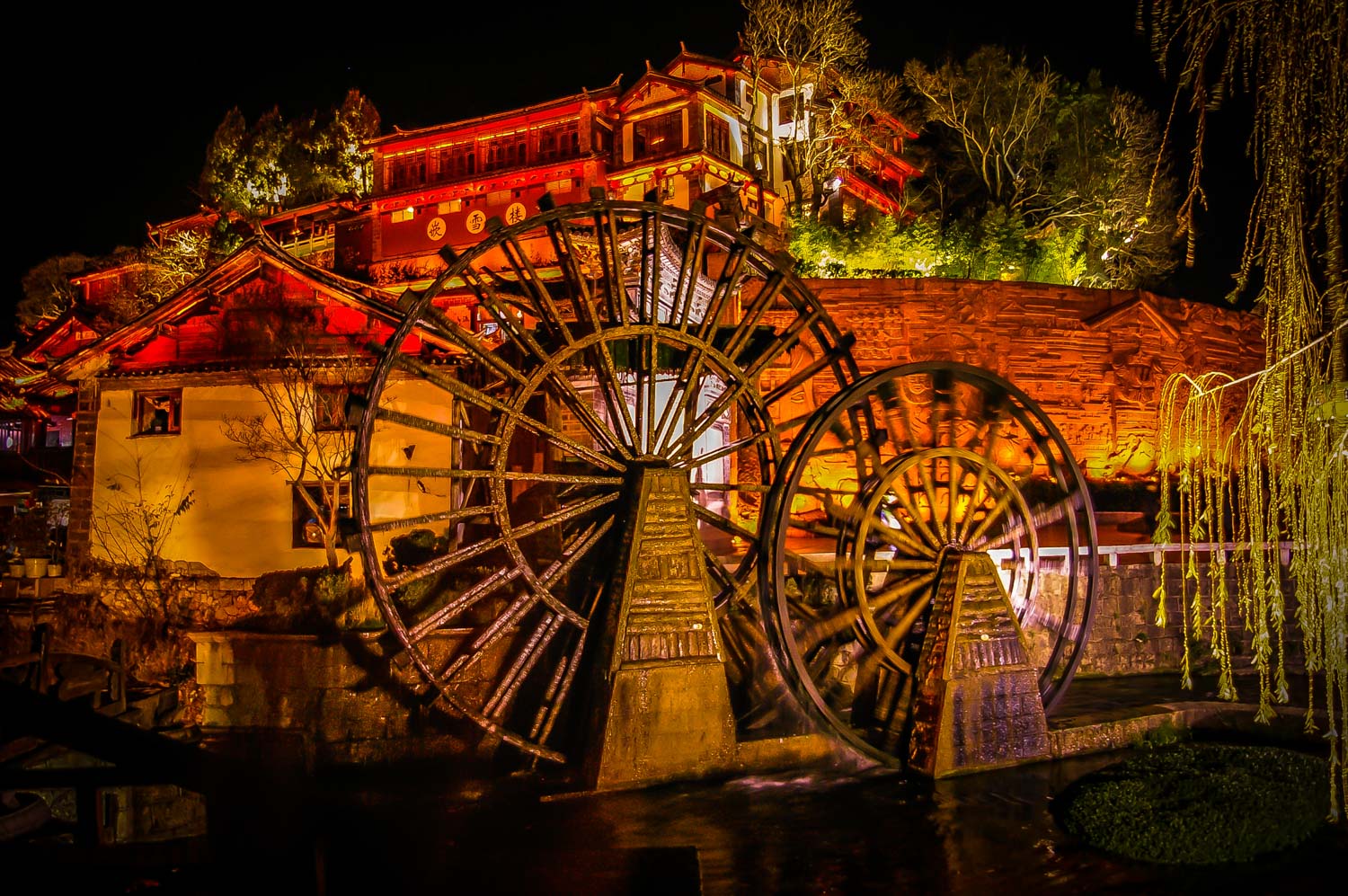
Yunnan Itinerary Conclusion
A 10-day itinerary for Yunnan is just the right amount of time to see the highlights of northern Yunnan, without rushing it. This itinerary allows you to see the best sights and attractions in the province. With more time, you could extend your trip to include Shangri la on the eds of the Tibetan world, or perhaps spend a day or two in Kunming or travel to the southern part of Yunnan to visit either the Yunnan Stone Forest or the Yuanyang Rice Terraces , which are both UNESCO World Heritage sites. With fewer days, consider culling a day from Lijiang.
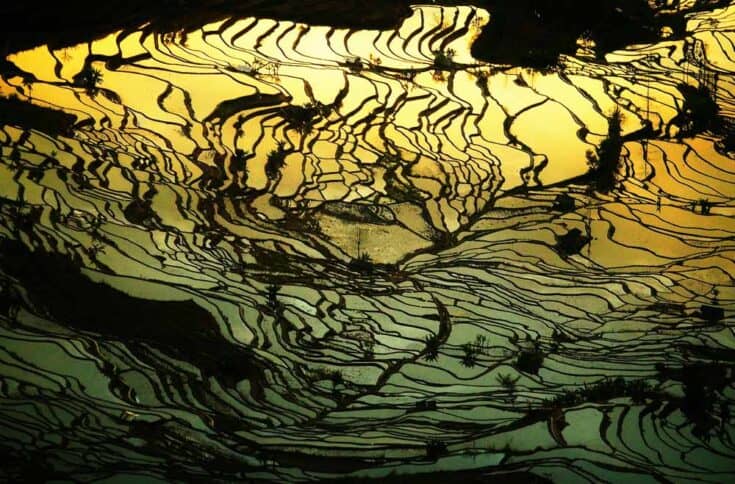
A journey through Yunnan is sure to be an enjoyable and interesting experience and something that will stay with you forever.
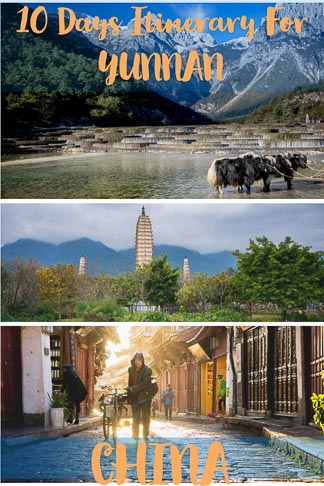
Tuesday 27th of June 2023
Is it necessary to drive? Will it be easy to find taxi ?
Christian L.
Taxis will be very very expensive for that whole route
- 6 Days Kuming to Yuanyang
- 8 Days Kunming - Dali - Lijiang - Shangri-La
- 10 Days Vietnam to China
- 15 Days Yunnan - Guizhou
Lijiang Old Town
- Jade Dragon Snow Mountain
- Tiger Leaping Gorge
- Stone Forest
Dali Ancient City
Yuanyang rice terraces.
- Meili Snow Mountain
- Potatso National Park
- 10 Special Foods to Try
- Zhangjiajie
Top 10 Things to Do in Yunnan
Located at China southwestern border, Yunnan has always been known as a mysterious land attracting tourists from all over the world. With thousands of years of history, it has bred the marvelous ancient towns and unique minority folk culture; Kunming, Dali and Lijiang stand out most. Its plateau monsoon climate and exceptional topography make what it is now: the criss-cross mountains and valleys, dotted lakes and running wild rivers, a variety of plants and animals, unusual karst landscape… What are the top things to do in Yunnan and the must-see places? Here comes the tour list for you to explore in person.
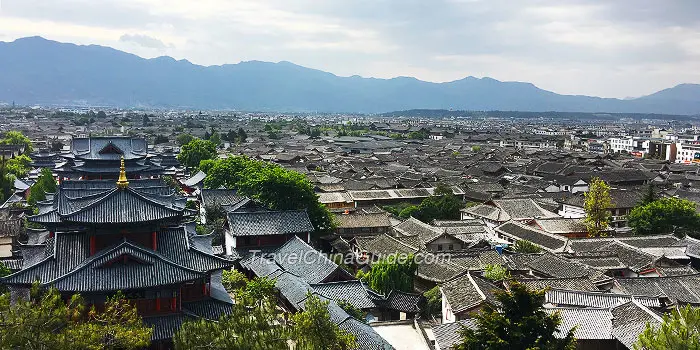

Jade Dragon Snow Mountain, Lijiang
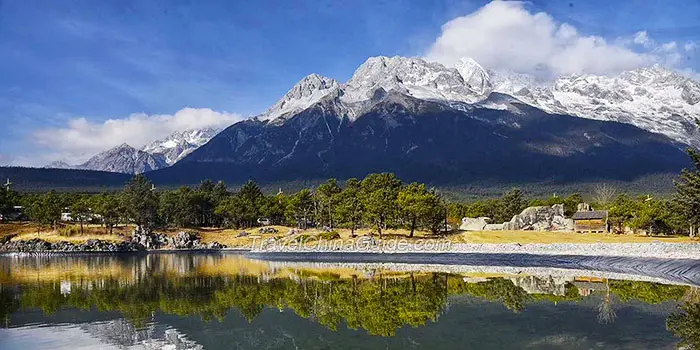
Erhai Lake, Dali

Hiking along Tiger Leaping Gorge
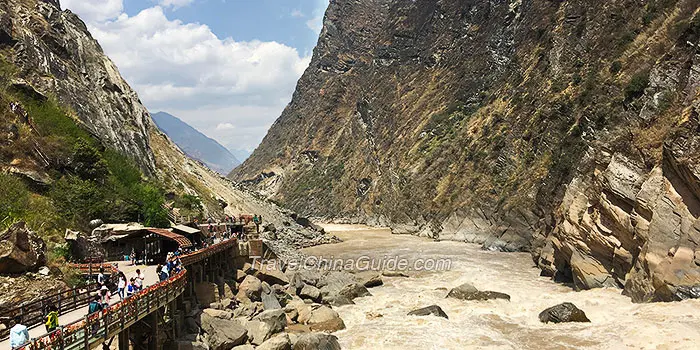
Potatso National Park, Shangri-La
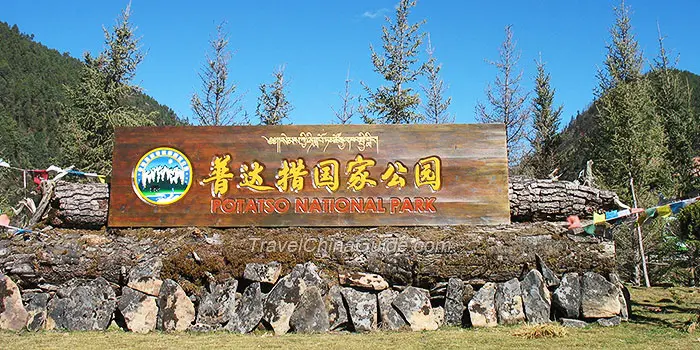
Meili Snow Mountain, Deqin
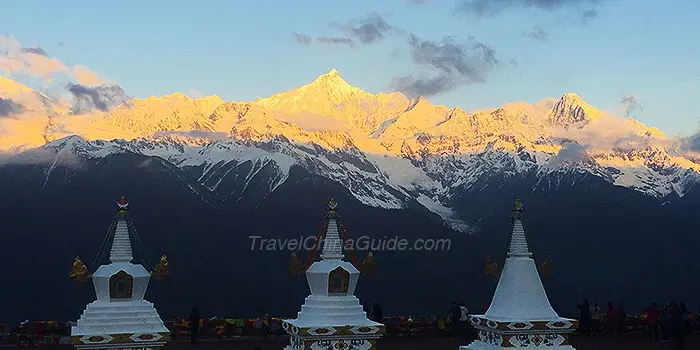
Kunming Stone Forest
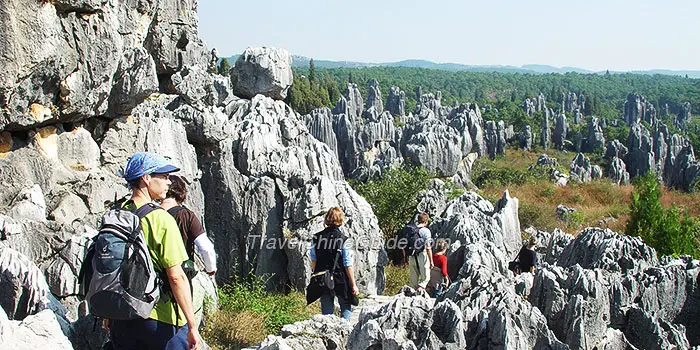
You May Also Like:
Jump to navigation

- Resources for:
Search form

NYU Around the World
- New York Shanghai Abu Dhabi
- Accra Berlin Buenos Aires Florence London
- Los Angeles Madrid Paris Prague Sydney
- Tel Aviv Washington DC
- College of Arts and Science Graduate School of Arts and Science Liberal Studies
- Vision, Values, and Mission
- Institutional Research
- Chancellor Emeritus
- Faculty Directory
- Open Positions
- Faculty Portal
- Teaching Resources
- In the Media
- Weekly Gazette
- NYU Shanghai Magazine
- Event Highlights
- FAQs - Working at Zhongbei
- How to Apply
Excursion to Yunnan: Exploring History, Culture, Impact
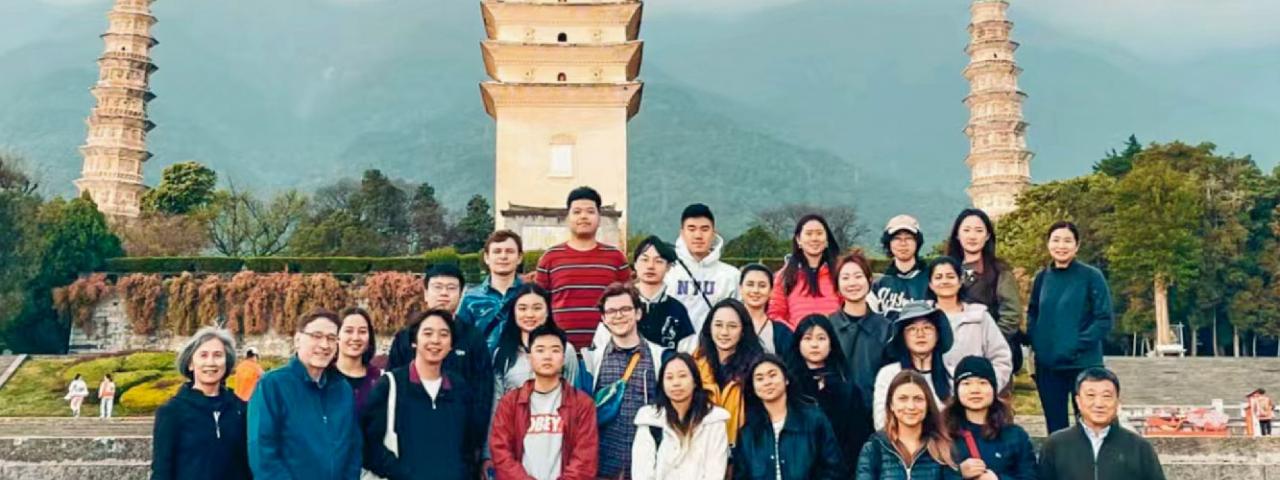
With its rich history, breathtaking landscapes, and diversity of languages and ethnicities, Yunnan Province is a cultural gem in China. Over Spring break, the region became the destination for an immersive learning trip, organized by NYU Shanghai’s Office for Community-Engaged Learning (CEL) and led by Dean of Arts and Sciences David Atwill and East Asian Studies Librarian Yurong Atwill .
The pair have a long history in Yunnan. They first met there in 1989 when David was teaching English at Yunnan University and Yurong, who is from there, was working as a translator. Since then, the two have teamed up to conduct research in the area and have returned there again and again over the past 30 years, digging deeper into Yunnan's abundant history.

Left: Dean David Atwill and Professor Yurong Atwill pose for a photograph in Dean Atwill's NYU Shanghai office. Right: Dean Atwill and Professor Yurong Atwill lead a walking tour to the Wen Yiduo Memorial and other historical sites in Kunming.
“Often, we think of Yunnan as this remote, distant place from the center of China, but what we're trying to do is re-center students’ ideas of Yunnan,” Dean Atwill says. “We want to highlight how events that occurred in Yunnan loom large in Chinese history and are central to the China we know today.”

The region can be considered “The Crossroads of Southeast Asia,” a place where a melting pot of different cultures come together. It’s also where Buddhism evolved into many different forms and influenced much of present-day China.
On the three-day trip, the Atwills led a group of 23 students from NYU Shanghai, NYU Abu Dhabi , and NYU New York on a cultural tour through Dali and Kunming. Sponsored by NYU Shanghai’s Academic Affairs CEL Office and Dean of Arts & Sciences, their itinerary included a trip to the Three Pagodas in Dali with Yunnan University Professor Li Donghong, a tour of the Kunming Military Academy led by renowned historian, Yunnan University Professor Emeritus, Lin Chaomin, an inside look into the tie-dying techniques of the Bai people, and a visit with an internationally renowned Kunming artist Li Kunwu .
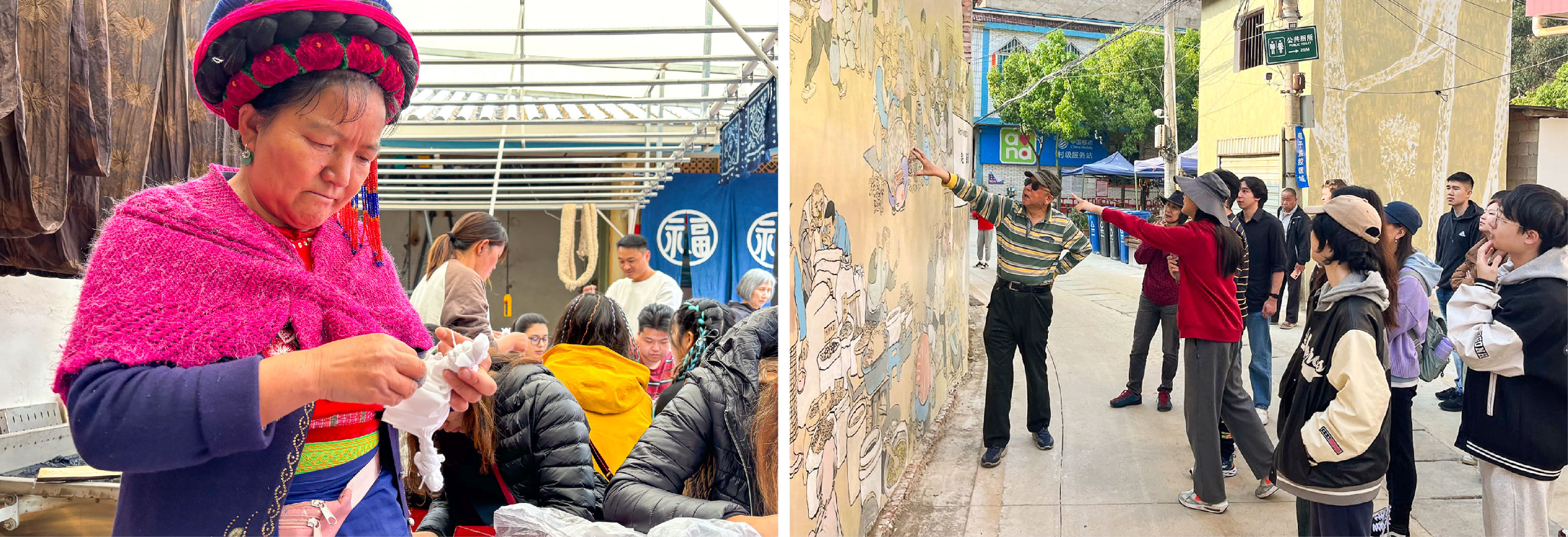
Left: The matriarch of a family-run tie dye workshop teaches students the local craft. Right: Artist Li Kunwu interacting with students in Duqu Village.
Yurong says they curated the itinerary with a specific goal in mind: to shed light upon the lesser-known people, culture, and religions of Yunnan. “We want the students to learn to think more critically and differently than a regular tourist,” she says.
Aria Xu ’27 studies Global China Studies and grew up in Shanghai. She says she appreciated being able to see Yunnan from a different perspective. “I can visit Yunnan anytime I want to,” she says, “however if I did that, I would visit the famous sites I see on social media, and I wouldn’t have learned as much about the variety of different cultures, religions, and ethnic groups.”

The Atwills planned a visit to the Three Pagodas Temple to share with students a deeper understanding of religion in China. Built in the Tang Dynasty when Buddhism was introduced to China, the pagodas symbolize changes within Buddhism as it traveled from India to China. “As you look at them, you can see the different stylistic ways they're shaped,” explains Dean Atwill. “And when we look closer at the temples surrounding them, we can see the variety of ways Buddhism took on the different characteristics of the local Yunnan culture because it was separate from China at the time.”
Hansa Mirpuri ’24 says the trip deepened her understanding of the role Yunnan played in the spread and emergence of different religions throughout East Asia. “It was just interesting to see how in this region people didn't have to pick one religion and stick with it,” she says. “For example, in one of the temples we visited, there was Buddha and there was a representation of Taoism as well as Confucianism.”

The Atwills add that they planned the temple tours to illustrate to students how multi-layered Buddhism is. “Oftentimes, we want to talk about Buddhism as this kind of monolithic, as if one wave washes over East Asia, but I think these pagodas really demonstrate Buddhism takes on different flavors of wherever it lands,” Dean Atwill says.
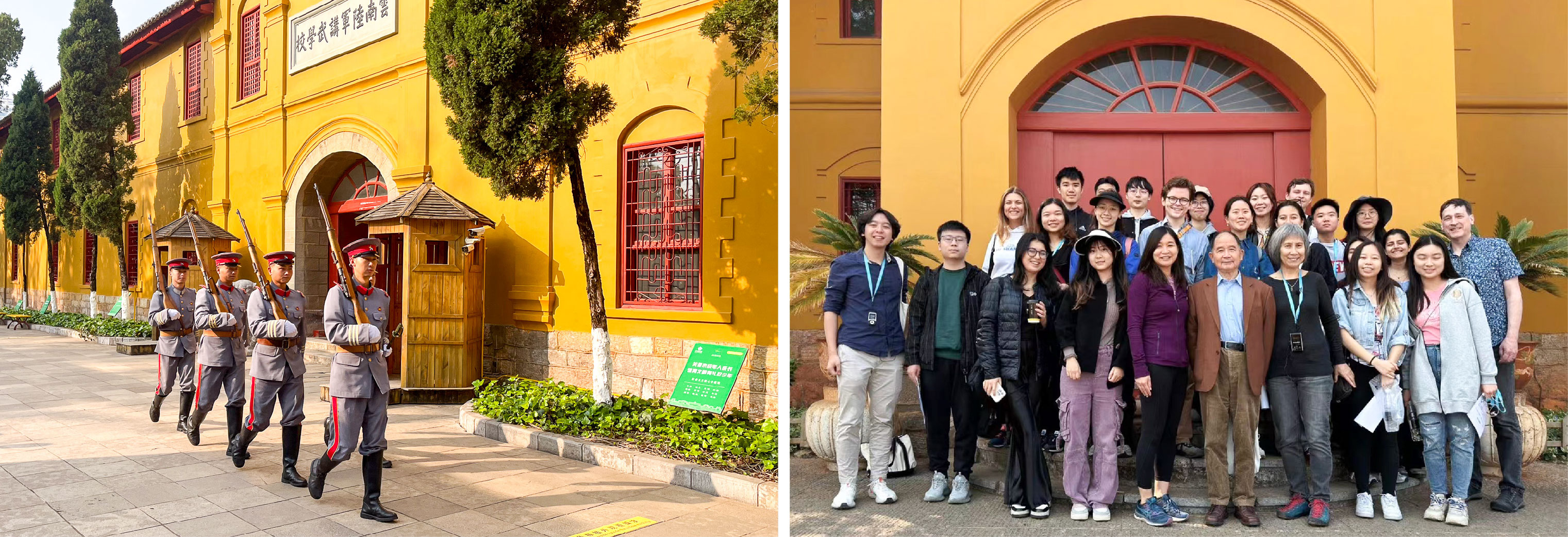
Kunming Military Academy was founded in 1909 and is one of China's earliest military academies.
Another one of the key sights students visited was the Kunming Military Academy on a tour led by notable Yunnan historian Lin Chaomin, who explained the role it played in Chinese history. Founded in 1909, it is one of China’s earliest military academies, as well as one of its most prestigious. However, by the 1930s and the start of the Second Sino-Japanese War, the academy was forced to close its doors. Notable military leaders who graduated from this school include Zhu De, Ye Jianying, Long Yun and Lu Han.
Global China Studies student Nicholas Linz ’27 says the experts exposed them to a nuanced approach to Yunnan’s history. “They helped to explain a part of history that I didn't know Yunnan was part of,” he says. “I’m ethnically Chinese and this is my first time back to China, and so it was interesting to see how this one area can have so much influence on China.”
Students say that the coordination of local guides, coupled with Professor Li and the Atwills’ extensive knowledge of the area, allowed for a more in-depth understanding and appreciation of Yunnan culture– from the variety of ethnic groups to the delightful aroma of erkuai rice cakes on every street corner.
And they say, along with broadening the perspectives, the CEL trip expanded their palettes as well. “One of the most memorable parts of the trip was trying the food. It was so interesting, the noodles are cut into thick pieces, and I ended up liking it,” Linz says.

Student Hansa Mipuri says every meal was an opportunity to learn something new. “They organized this activity called Food Bingo where we'd go around and try and see if we could find and try all the foods that they recommended in this bingo format, and treated us to Da jiu-jia,” she says. “It’s like flattened rice, noodles, stir, fried with like tomatoes and other veggies.”
Those meals were also a way for the participants to connect and forge new friendships, including the feast they shared on the last night at a family-owned restaurant. “We had great discussions and got to reflect on our moments together,” Mipuri recalls. “And you could really see the change from when we first met from our introductory meeting to when we were all together in this meal.”
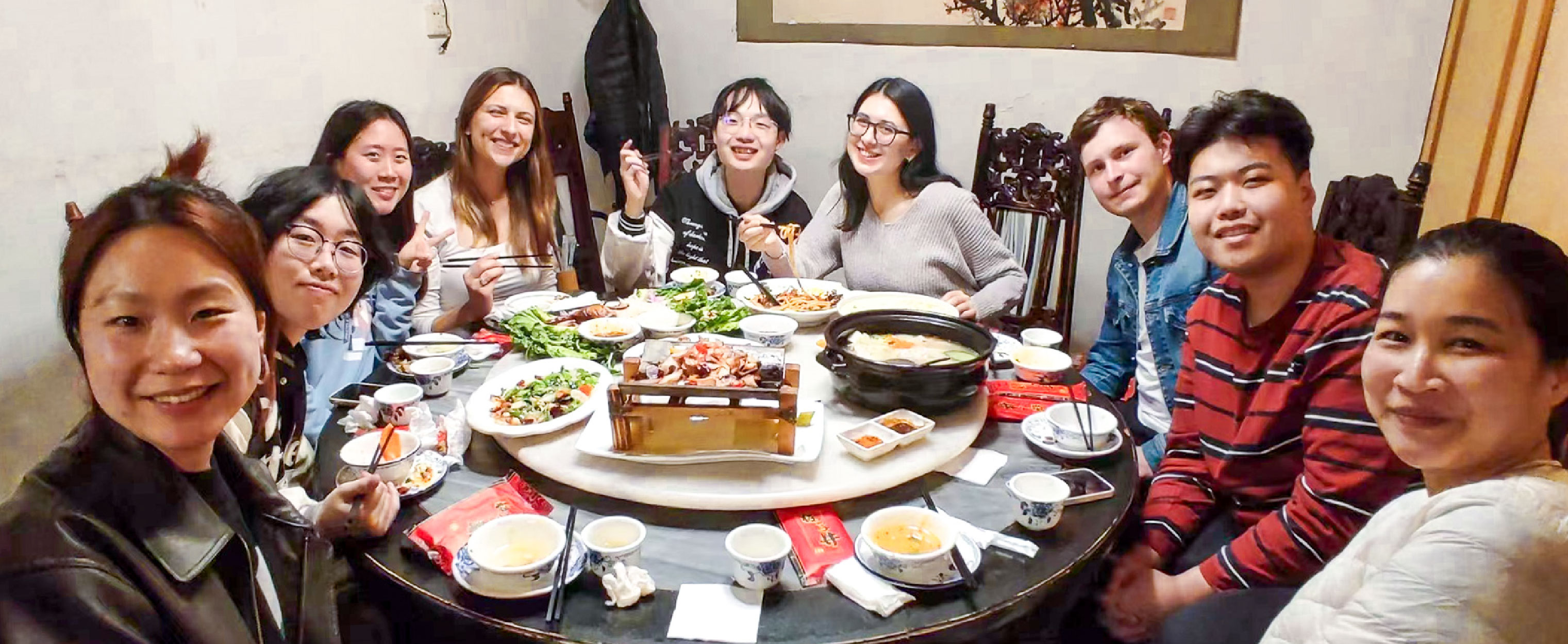
Assistant Provost for Academic Affairs at NYU Shanghai Diane Geng says student feedback has shown that these experiential research trips can not only deepen student learning, but also strengthen relationships between the students and with faculty. “Students said this kind of place-based learning with peers and faculty from diverse backgrounds embodied their motivation for coming to NYU Shanghai and helped to spark new curiosities and pathways for further study and research,” she says. The Atwills say they look forward to future trips and opportunities to expand their own perspectives and research in Yunnan.
VIEW ALL NEWS
Portal Campuses
Get in touch.
- Campus Tour
- Accessibility
- Website Feedback

Connect with NYU Shanghai

- Water festival brings fun and tourists to Yunnan
The more water people splash on you, the luckier and happier your life will be. That's the positive message from the water sprinkling festival in Xishuangbanna, in Southwest China's Yunnan province, which has become a strong impetus for tourism growth.
Melissa Baidak, from Russia, was scared at first when people surrounded her and splashed water, but then she joined in and had a good time.
"The happiness reminds me of my childhood," she said.
Melissa, who is in a doctoral program at Beijing Foreign Studies University, tried on an ethnic Dai dress and tasted many specialties and cuisines during her stay in Xishuangbanna Dai autonomous prefecture — where the water sprinkling festival was held.
"The most impressive activities were flying the Kongming lanterns at night and splashing water on other people. It was stunning and romantic to see so many lanterns floating in the air, like twinkling stars," she said.
The water sprinkling festival is one of the most important festivals for the Dai people — an ethnic group mostly living in Xishuangbanna Dai and another autonomous prefecture, Dehong Dai and Jingpo — who recognize the festival as the new year and organize activities like splashing water, releasing Kongming lanterns and dragon boat races.
Other ethnic groups such as the De'ang and Blang who live in the province also celebrate the festival with grand ceremonies. The festival was listed as State-level intangible cultural heritage in 2006.
The four-day water festival started on Friday, while celebrations including some folk shows may last till the end of the month. Travel agencies and industry insiders said the folk activities have generated a tourism boom for the province.
Travel portal Qunar said that flight bookings to Xishuangbanna saw year-on-year growth of 20 percent during the festival, and most of the bookings were made by people from Chengdu, in Sichuan province, Chongqing, and Guangzhou in Guangdong province.
It said that the "earliest bird "booked tickets from Shanghai 100 days before the festival. Room bookings in Xishuangbanna increased by nearly 50 percent year-on-year on the platform.
It's estimated that Jinghong, capital of Xishuangbanna, received 434,700 visits on Friday, the first day of the festival, up 23.7 percent year-on-year. Tourism-related revenue on the day is expected to reach 530 million yuan ($73.2 million), up 45 percent year-on-year, China Central Television reported.
Htike Lwin Ko, a 37-year-old from Myanmar, said his home country also celebrates the water sprinkling festival, which usually lasts four days, and people are allowed a 10-day break.
"We have some customs similar to Xishuangbanna, like releasing Kongming lanterns," he said. "But we usually fly lanterns around October."
A visitor from the United States said he was surprised by the celebration even though he did a lot of research before his trip. He said two elderly women wearing Dai ethnic clothes splashed water on him and he splashed back, and laughter and water intertwined to make them feel like they were best friends, even though they had never met.
Xishuangbanna has tightened market supervision to ensure travelers have a safe and happy stay, and has used the festival as a marketing event to build the prefecture into a world-class tourism destination.
Li Qiang, director of its culture and tourism bureau, said that improper or illegal behaviors such as forcing travelers to consume and price gouging are not allowed. The bureau has also stepped up efforts to crack down on travel agencies' illegal behaviors like changing travel itineraries without customers' permission or ride-hailing drivers refusing to take passengers.
Zhu Jiawei, the prefecture's Party secretary, said the government will take advantage of folk cultures and the prefecture's good environment to develop cross-border, educational and eco-friendly tourism, with the aim of seeing tourism-related revenue exceed 90 billion yuan next year.
Go to Forum >> 0 Comment(s)
Add your comments....
- User Name Required
- Your Comment
- The more water people splash on you, the luckier and happier your life will be. That's the positive message from the water sprinkling festival in Xishuangbanna, in Southwest China's Yunnan province, which has become a strong impetus for tourism growth.
Text: A A A Print Travel News
Water festival brings fun and tourists to yunnan.
People splash water on one another during the water-splashing festival at a square in Jinghong city, Southwest China's Yunnan province, April 15, 2024. (Photo by Zhang Xi/For chinadaily.com.cn)
The more water people splash on you, the luckier and happier your life will be. That's the positive message from the water sprinkling festival in Xishuangbanna, in Southwest China's Yunnan province, which has become a strong impetus for tourism growth.
Melissa Baidak, from Russia, was scared at first when people surrounded her and splashed water, but then she joined in and had a good time.
"The happiness reminds me of my childhood," she said.
Melissa, who is in a doctoral program at Beijing Foreign Studies University, tried on an ethnic Dai dress and tasted many specialties and cuisines during her stay in Xishuangbanna Dai autonomous prefecture — where the water sprinkling festival was held.
"The most impressive activities were flying the Kongming lanterns at night and splashing water on other people. It was stunning and romantic to see so many lanterns floating in the air, like twinkling stars," she said.
The water sprinkling festival is one of the most important festivals for the Dai people — an ethnic group mostly living in Xishuangbanna Dai and another autonomous prefecture, Dehong Dai and Jingpo — who recognize the festival as the new year and organize activities like splashing water, releasing Kongming lanterns and dragon boat races.
Other ethnic groups such as the De'ang and Blang who live in the province also celebrate the festival with grand ceremonies. The festival was listed as State-level intangible cultural heritage in 2006.
The four-day water festival started on Friday, while celebrations including some folk shows may last till the end of the month. Travel agencies and industry insiders said the folk activities have generated a tourism boom for the province.
Travel portal Qunar said that flight bookings to Xishuangbanna saw year-on-year growth of 20 percent during the festival, and most of the bookings were made by people from Chengdu, in Sichuan province, Chongqing, and Guangzhou in Guangdong province.
It said that the "earliest bird "booked tickets from Shanghai 100 days before the festival. Room bookings in Xishuangbanna increased by nearly 50 percent year-on-year on the platform.
It's estimated that Jinghong, capital of Xishuangbanna, received 434,700 visits on Friday, the first day of the festival, up 23.7 percent year-on-year. Tourism-related revenue on the day is expected to reach 530 million yuan ($73.2 million), up 45 percent year-on-year, China Central Television reported.
Htike Lwin Ko, a 37-year-old from Myanmar, said his home country also celebrates the water sprinkling festival, which usually lasts four days, and people are allowed a 10-day break.
"We have some customs similar to Xishuangbanna, like releasing Kongming lanterns," he said. "But we usually fly lanterns around October."
A visitor from the United States said he was surprised by the celebration even though he did a lot of research before his trip. He said two elderly women wearing Dai ethnic clothes splashed water on him and he splashed back, and laughter and water intertwined to make them feel like they were best friends, even though they had never met.
Xishuangbanna has tightened market supervision to ensure travelers have a safe and happy stay, and has used the festival as a marketing event to build the prefecture into a world-class tourism destination.
Li Qiang, director of its culture and tourism bureau, said that improper or illegal behaviors such as forcing travelers to consume and price gouging are not allowed. The bureau has also stepped up efforts to crack down on travel agencies' illegal behaviors like changing travel itineraries without customers' permission or ride-hailing drivers refusing to take passengers.
Zhu Jiawei, the prefecture's Party secretary, said the government will take advantage of folk cultures and the prefecture's good environment to develop cross-border, educational and eco-friendly tourism, with the aim of seeing tourism-related revenue exceed 90 billion yuan next year.

Historic Copenhagen stock exchange in flames

China ready to launch Shenzhou-18 crewed spaceship

Products of Chinese culture shine at CICPE 2024

Flame for Paris 2024 Summer Olympic Games lit in Ancient Olympia

Blooming water lilies in West Lake resemble Monet's painting
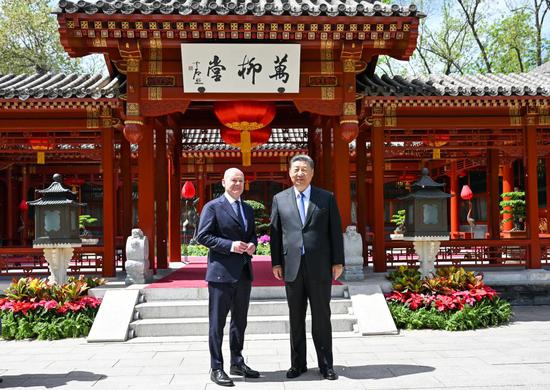
Xi meets German chancellor, calls for achieving mutual success

In pics: 798 Art Zone
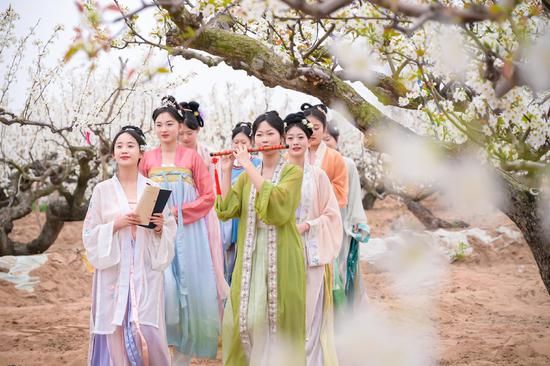
Pear blossoms accentuate the beauty of Hanfu

Transportation hub undergoes load testing in Greater Bay area
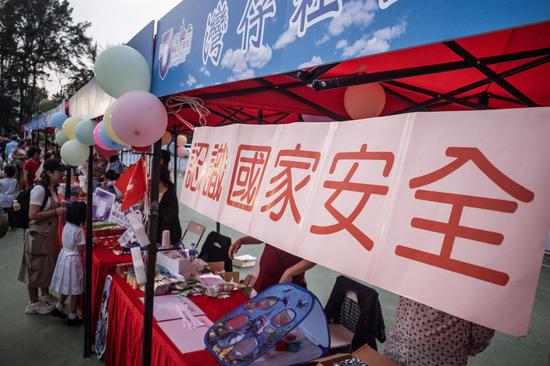
National Security Education Day marked in Hong Kong

135th Canton Fair opens with over 29,000 exhibitors

Notre Dame Cathedral restoration nears completion after 5 years
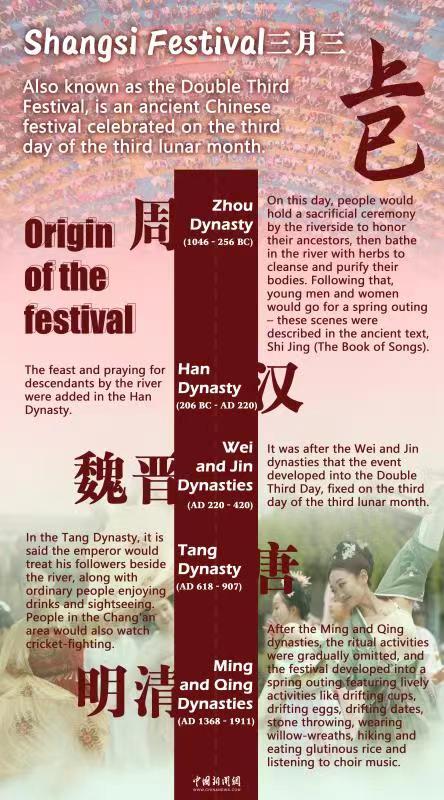
Culture Fact: Shangsi Festival

UN Security Council holds emergency meeting after Iran's retaliatory attacks on Israel

German Chancellor Olaf Scholz starts China visit

In Numbers: China, Germany cooperation yields fruitful results
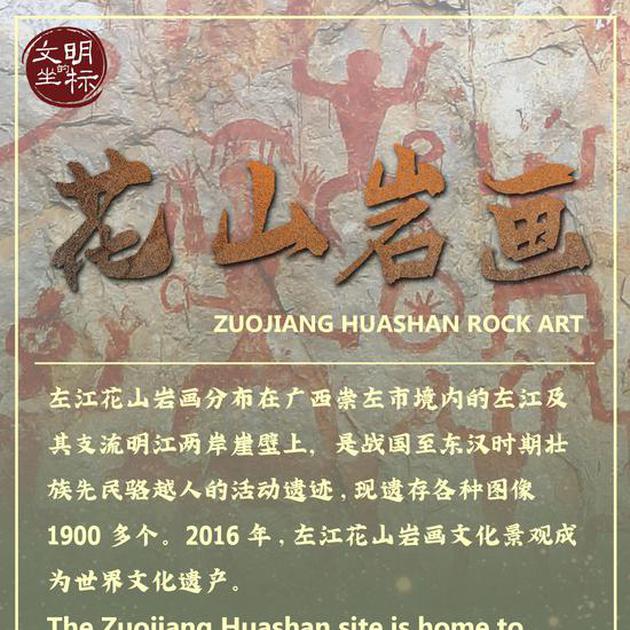
Cradle of Civilization: Zuojiang Huashan Rock Art

China is committed to managing Ren'ai Jiao issue through dialogue and consultation: FM spokesperson

Queqiao 2 satellite ready for future communication service

Beijing subcenter station set to operate in 2025
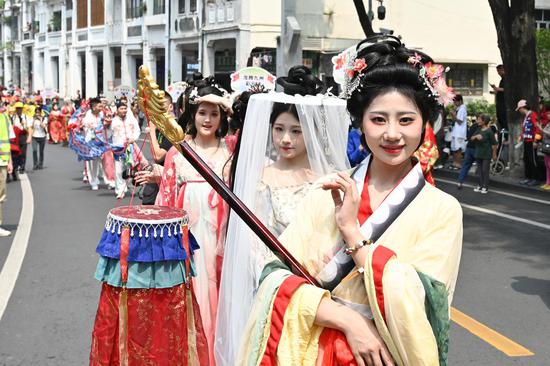
Ethnic groups across China celebrate Sanyuesan

To invest in China is to invest future: FM spokesperson
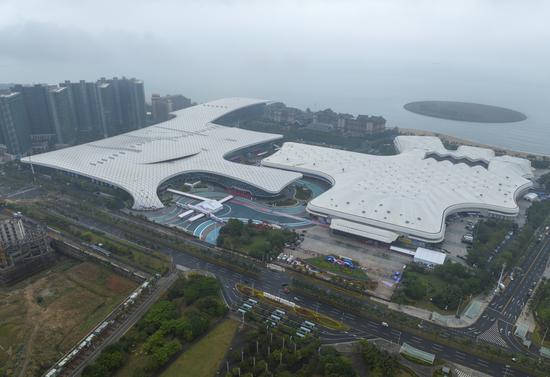
Preparation for 4th China Int'l Consumer Products Expo in full swing

Water quality of Seine River draws concern before Paris Olympics
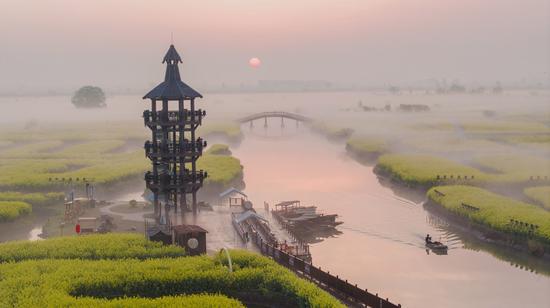
Beautiful sunrise scenery of mist-shrouded cole flowers

Xi Jinping meets Ma Ying-jeou in Beijing
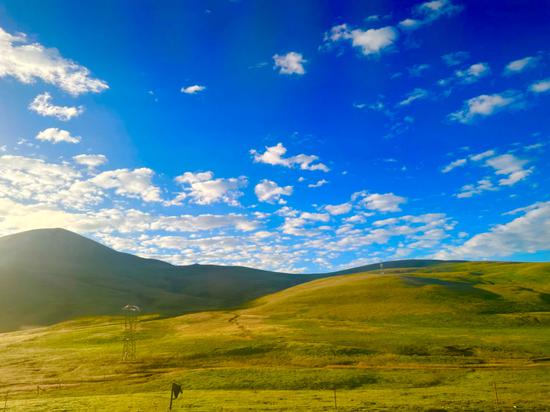
China Through The Lens: Spring scenery in NW China's Qinghai

Immigration clearance hall for on-board passengers to start operation

Xuelong returns to Qingdao after 40th Antarctic expedition
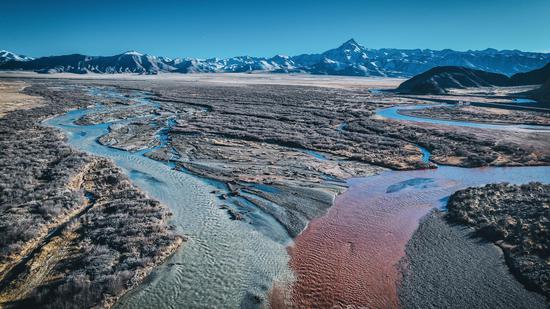
Colorful waters 'meet' in Qinghai
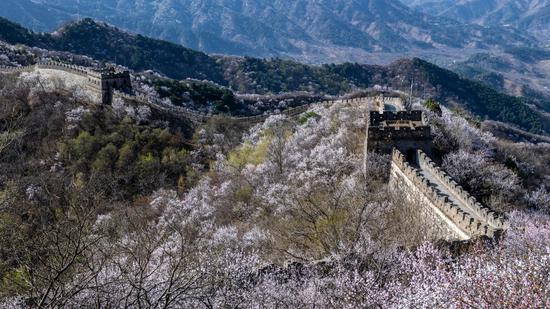
Flowers in full bloom at Mutianyu section of Great Wall
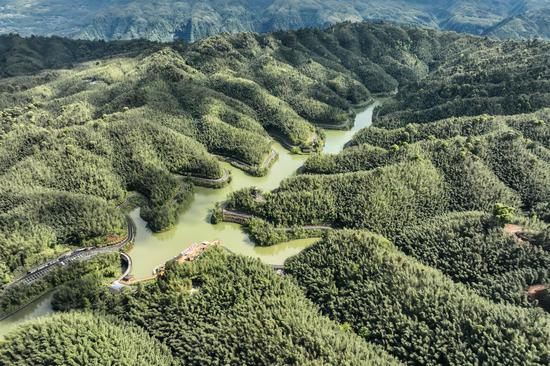
Sea of bamboo scenery in Guizhou
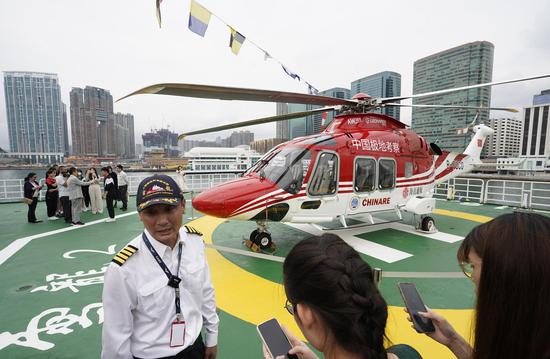
China's icebreaker Xuelong 2 opens for public visit in Hong Kong

Solar eclipse spotted in U.S.

Baikal teal ducks create spectacular 'Bird wave' formation in NE China
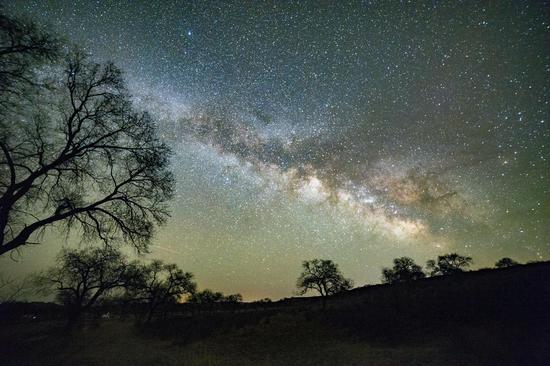
Night landscape against stunning Milky Way in N China
Most popular in 24h, more top news.
- New envoy reaffirms Beijing's support to UN
- China provides boost to digital economy, talent
- U.S. returns 38 ancient cultural artifacts to China
- PLA lawfully responds to U.S. aircraft flying through Taiwan Strait
- China-U.S. military ties seen as key to stability

Insights丨German expert: Renewable energy development important for accelerating economic growth

Insights | German Journalist in Scholz's delegation to China impressed by its modernization

Huangshan, Yunnan
Around the Globe
Hurricane tracker.
Severe Weather
Radar & Maps
News & features, today's weather.
Sat, Apr 20
Occasional morning rain and drizzle; otherwise, mostly cloudy Hi: 68°
Tonight: Partly to mostly cloudy Lo: 52°
Current Weather
Huangshan weather radar & maps.
Hourly Weather
10-day weather forecast.
Rain and drizzle this morning
Night: Partly to mostly cloudy
Occasional rain and drizzle
Partly cloudy
Some sun, then clouds; warmer
Patchy clouds
Nice and warm with some sun
Breezy in the afternoon
Times of clouds and sun
Rain and drizzle in the p.m.
Mainly clear
Rain and drizzle in the a.m.
Warm with plenty of clouds
Mostly cloudy
Sun & Moon
Air quality.
The air quality is ideal for most individuals; enjoy your normal outdoor activities.
Allergy Outlook
Top Stories
Tornadoes, storms to escalate as 'dangerous pattern' evolves over US
7 hours ago

Winter Weather
Potentially damaging frosts and freezes coming to Midwest, Northeast
5 hours ago

Weather Forecasts
Water-logged areas of south-central US facing renewed flooding risk

Meteor shower drought to end as Lyrids peak this weekend

Colorado braces for snow: Skiers delight but slippery roads ahead

Featured Stories
AccuWeather Ready
Top 3 tips on lightning safety from a leading safety expert
9 hours ago

Weather News
Some bumblebees can survive underwater for up to a week, study shows

More than 100 killed across Pakistan and Afghanistan as flash floods a...

Camels evolved from a cold-weather ancestor

5 ways the Columbia disaster changed spaceflight forever

Weather Near Huangshan:
- Heqing County , Yunnan
- Lijiang , Yunnan
- Yongsheng County , Yunnan
We have updated our Privacy Policy and Cookie Policy .
Get AccuWeather alerts as they happen with our browser notifications.
Notifications Enabled
Thanks! We’ll keep you informed.
Top Things to Do in Yunnan
Yunnan Province, covering an area of 394,000 square kilometers (about the size of California or Germany), combines unique ethnic cultures, magnificent alpine scenery, rainforest, rice terraces, tea plantations, authentic ancient towns, and delicious food.
Kunming , Dali , Lijiang , and Shangri-La are always on the bucket list to those who haven't been to Yunnan before. Then there are some in-depth themed visit options : hiking, ethnic culture discovery, photography, etc. for those to want to further discover certain parts of colorful Yunnan.
With the opening of the 'Nujiang Beautiful Road' (part of China's National Highway G219) on December 30, 2019, people are rushing to northwest Yunnan to discover the stunning Nujiang Valley and unveil "the last mystery of Yunnan".
Scroll down to read the top things to do in Yunnan and find out the most suitable places for your upcoming tour of Yunnan. Or take a look at our Yunnan tours for more inspiration.
Kunming Top Things to Do for First-Time Yunnan Travelers
1. explore the towering karst pillars — the stone forest.
The Stone Forest is praised as the " Stone Forest Museum " as you'll find countless awesome stone formations displayed like large-scale geological exhibits. The Stone Forest area is also the home of the Sani and Yi people. You can enjoy their folk customs and performances at the Stone Forest.
2. Enjoy Panoramic Views from Dragon Gate
Xishan (Western Hills Park) lies along the bank of Dianchi Lake. On the top of one of the hillls lies Dragon Gate, where you will not only enjoy panoramic views of Dianchi Lake and Kunming City, but will also have the chance to appreciate the grottoes, sculptures, corridors, and pavilions that were cut into the cliffs.
More on Top Things to Do in Kunming >>>
Recommended tours :
- 3-Day Stone Forest and City Essence Tour
- 6-Day Kunming and Yuanyang Rice Terraces Tour
Dali Top Things to Do for First-Time Travelers
1. wander in leisurely dali ancient town.
Dali Ancient Town has clear springs and houses the unsophisticated native Bai people. The local people have a custom of growing flowers in their gardens with clear streams of water running by. Their finely-decorated traditional houses make this town well worth visiting.
2. Admire the Long-Lasting Three Pagodas
The Three Pagodas were built over 1,000 years ago. Arranged in the shape of a triangle, they have become a must-take iconic picture for all visitors. In addition, for those who are interested in Buddhism or history, you will be impressed by their size, beauty, antiquity, and intact preservation.
3. Bike along Charming Erhai Lake
Erhai Lake covers an area of about 250 square kilometers (100 sq mi). Its unusually clear water and Cangshan mountain backdrop make the scenery extremely beautiful. The best way to enjoy the breathtaking views would be to take a bike ride along the lakeshore. Read more on Erhai Biking .
More on Top Things to Do in Dali and How Long to Spend in Yunnan
- 6-Day Yunnan Ethnic Minorities Tour
- 7-Day Kunming, Dali, and Lijiang Winter Tour
Lijiang Top Things to Do for First-Time Visitors
1. stroll in magical lijiang ancient town.
Lijiang Ancient Town is the most popular ancient town among domestic and foreign travelers. It is characterized by old Naxi architecture and an ingenious ancient network of waterways. The cobbled streets, ancient bridges, and traditional houses add to the charming picture of this ancient town.
2. Appreciate the Vivid Murals in Baisha Village
The Baisha Murals depicts stories of Taoism, Han Buddhism, and Tibetan Buddhism and embody artistic features of the Naxi, Tibetan, Han, and Bai ethnic groups.
3. Admire the Holy 'Jade Dragon Snow Mountain'
Jade Dragon Snow Mountain has 13 peaks that stretch 35 kilometers (22 miles) from north to south. It looks like a dragon from distance, hence its name. The main peak Shanzidou (扇子陡), reaching an altitude of 5,596 meters (18,360 feet), can be seen from Lijiang Ancient Town.
4. Listen to the Roaring of Tiger Leaping Gorge
Tiger Leaping Gorge , located between Lijiang and Shangri-La, is one of the world's deepest gorges. With Jade Dragon Snow Mountain as the backdrop, the scenery there is just amazing and is considered by many as China's best hike.
More on Top Things to Do in Lijiang >>>
- 3-Day Essence of Ancient Lijiang Tour
- 5-Day Lijiang and Tiger Leaping Gorge Hiking
Shangri-La Top Things to Do for First-Timers
1. experience tibetan culture at songzanlin lamasery.
Songzanlin Lamasery is praised as "the Little Potala Palace", it is the largest Tibetan Buddhist temple complex in Yunnan Province. China Highlights can specially arrange a visit to a lama's dormitory and study room so that you can discover more about the monks' lifestyle, religious beliefs, and discipline. Contact us for a special and unique experience.
2. Enjoy Highland Views at Pudacuo National Park
Pudacuo National Park has an average altitude of 3,500 meters (11,500 feet) and retains a well-preserved ecosystem within its virgin forests. The must-see scenery in this park is Lake Shudu, which is one of the largest freshwater lakes on the Diqing plateau and is home to lots of wild animals such as bears, golden cats, deer, and pheasants.
More on Top Things to Do in Shangri-La >>>
- 4-Day Shangri-La Exploration Tour
- 6-Day Shangri-La, Deqin, and Tacheng Adventure Tour
Top Things to Do for an In-depth Yunnan Tour
1. photograph picturesque landscapes.
The Yuanyang Rice Terraces are an ideal place for photography. The sunrise scenery of Duoyishu must not be missed and Bada is the best place to see the sunset scenery.
Exploring the Hani people's villages is another highlight of Yuanyang. The Yuanyang Rice Terraces were crafted by the Hani people 1,000 years ago.
The site has since been extended by more than 100 square kilometers (40 square miles) and was acknowledged by UNESCO as a World Cultural and Natural Heritage Site in 2013. The massive tiers upon tiers of rice terraces attract numerous photographers every year.
Dongchuan Red Land is a new, rising destination loved by photographers. Praised as "God's palette", it is believed to be the world's most imposing red-colored land.
The Meili Snow Mountains in Deqin County are a holy land of pilgrimage for Tibetan Buddhists. The sunrise over the snowy mountains, perennial glaciers, and the panoramic views of the thirteen peaks are the main elements that Chinese and international photographers pursue.
- 6-Day Yuanyang Rice Terraces and Kunming Tour
2. Experience Minority Cultures — Bai, Dai, Naxi, Lisu…
Yunnan is home to 25 ethnic minorities including the Bai, Yi, Dai, Naxi, Hani, Miao, Tibetan, Lisu, and Yao. All these minorities have quite splendid cultures, especially the Naxi minority. There are more than 400 ethnic festivals celebrated throughout the year, which still maintain unique folk traditions and customs.
In Yunnan Ethnic Village in Kunming, you can not only enjoy a variety of architectural arts, clothing, and remarkable customs, but also live presentations of cultural songs and dances.
Shuhe Ancient Town near Lijiang was the earliest settlement area for the Naxi's ancestors, and it is where you can best appreciate their unsophisticated Naxi customs and architectures.
Zhoucheng Village near Dali, regarded as the "living fossil" of Bai minority culture, is the biggest Bai minority village.
In Shangri-La , you can see numerous ancient Tibetan Buddhist monasteries and experience Tibetan culture. Many travelers go there to experience Tibet without having to apply for a permit for the difficult-to-enter province.
Xishuangbanna is a paradise for Dai people, plants, and animals. You will experience both Chinese culture and Southeast Asian culture there.
If you are interested in Yunnan festivals , please check the dates before planning a tour.
- 6-Day Xishuangbanna and Pu'er Tour
3. Discover Less-Traveled Roads in Northwest Yunnan
Yunnan province not only has famous Kunming, Dali, Lijiang, and Shangri-La. In the northwest corner of Yunnan, there is a piece of land enjoying the reputation of being "the paradise where God and humans live together". The Nu Jiang (Salween River) flows between the mountains and mysterious ethnic minorities enjoy their lives in the magnificent gorges.
The best season to discover Northwest Yunnan is from December to March. Go there before it is "more-explored", and enjoy an adventure holiday along the long, deep, and mysterious Nujiang Grand Canyon while experiencing the unique Christian culture in the colorful Lisu minority villages.
Recommended tour :
- 8-Day Yunnan Tour of the Nu River and Tengchong
Special Recommendations for Hiking and Mountaineering in Yunnan
Yunnan has several great destinations for hiking and mountaineering. Most of these destinations have lofty snow-capped mountains, and the sunrises and sunsets there are quite magnificent. We have chosen some hiking/mountaineering routes for different levels to help you to choose the best for you, easiest first…
1. Hiking for Nature Enthusiasts: The Cangshan Mountains
- Difficulty: ★
- Scenery: ★★★★
- Time needed: 2-3 hours
- Best season: May to November
The Cangshan Mountains are located near Dali City and are full of natural and cultural surprises. The mountain massif is known for its clouds, snow, moon, peaks, and streams. In addition, the views of Erhai Lake and Dali City from the mountainside are stunning.
You may combine both cable cars and hiking to best use your time and immerse yourself in mountain nature.
2. Peacefully Hike to Qiunatong Village
- Difficulty: ★★
- Time needed: 1 day
Qiunatong Village is located in northwest Yunnan and was once an important town during the Ancient Tea Horse Road period. Imagine you are a horse caravan and have a moderate hike to this beautiful village.
Though the hiking takes no more than a full day, you can enjoy a seemingly unlimited amount of amazing scenery when passing through the Nu River gorge. One of the highlights is walking the original Tea Horse Road carved into the cliffs.
3. First Choice for Amateur Mountaineers: Haba Snow Mountain
- Difficulty: ★★★
- Time needed: 3 days
- Best season: November to February
Haba Snow Mountain is near Lijiang, facing Jade Dragon Snow Mountain across Tiger Leaping Gorge.
With an altitude of 5,396 meters (17,703 feet) above sea level, Haba Snow Mountain is always the first choice for amateur mountaineers in Yunnan. The mountain is rich in wildlife and plants and has been eulogized as "Gardens of the World" and "Natural Zoo" by biologists.
To reach the summit, it is better to choose dates between November and February when it is drier.
4. Holy Mountain of the Naxi: Jade Dragon Snow Mountain
- Difficulty: ★★★★
- Best season: November to next May
"I want to die among those beautiful mountains rather than in a bleak hospital bed all alone."
America explorer Joseph Rock said this in a letter to his friend to express his endless love for the Jade Dragon Snow Mountain range.
Follow Rock's footsteps in the embrace of his favorite mountain. Feel Jade Dragon Snow Mountain beneath your feet and see its beauty up close with you own eyes.
5. Celebrated Classic Hiking Trail: Tiger Leaping Gorge
- Scenery: ★★★★★
- Time needed: 2–3 days
- Best Season: May to November
Tiger Leaping Gorge lies in between the Haba Snow Mountain and Jade Dragon Snow Mountain ranges. Known for its throbbing roar and ecological wealth of unusual plants and animal species, it is praised as "the most beautiful gorge in China" and "one of the deepest gorges in the world".
The lengthy gorge is divided into three parts: Upper Gorge, Middle Gorge, and Lower Gorge. All parts are all well-lined with hostels and restaurants due to its popularity among local backpackers. You may choose to hike the three parts or choose one or two according to your physical condition.
6. Paradise for Hikers: Yubeng Village
- Time needed: 4–5 days
- Best season: September to November
Yubeng Village is in Deqin County, north of Shangri-La. It is an ancient Tibetan village hidden under Mentsmu Peak of the Meili Snow Mountains. Historically, it was blocked off from traffic and isolated from the world, just like a miniature version of the legendary Shangri-La.
Sacred waterfalls, holy lakes, luxuriant forests, and deep gorges can be seen during the hike and you will pass the Sino-Japanese Base Camp for Kawagarbo (the un-summited highest Meili Mountain peak).
More suggestions about the hiking in Yunnan >>>
- 4-Day Yubeng Village Hiking Tour
- 3-Day Tiger Leaping Gorge and Stone Village Hiking Tour
- More China Hiking Tours
Touring Yunnan with China Highlights
We have prepared several tours to offer you a true experience of colorful Yunnan. These are the most popular:
- 6-Day Shangri-La, Deqin and Tacheng Adventure Tour
- 8-Day Kunming, Dali, Lijiang, and Shangri-La Highlights Tour
See yet more Yunnan tours , which cover the highlights of Yunnan and also include exclusive programs to give you a unique experience.
- 8-Day Beijing–Xi'an–Shanghai Private Tour
- 11-Day China Classic Tour
- 14-Day China Natural Wonders Discovery
- 3-Week Must-See Places China Tour Including Holy Tibet
- How to Plan Your First Trip to China 2024/2025 — 7 Easy Steps
- 15 Best Places to Visit in China (2024)
- How to Plan a 10-Day Itinerary in China (Best 5 Options)
- 2-Week China Itineraries: Where to Go & Routes (2024)
- China Weather in January 2024: Enjoy Less-Crowded Traveling
- China Weather in February 2024: Places to Go, Costs, and Crowds
- China Weather in March 2024: Destinations, Crowds, and Costs
- China Weather in April 2024: Where to Go (Smart Pre-Season Pick)
- China Weather in May 2024: Where to Go, Crowds, and Costs
- China Weather in June 2024: How to Benefit from the Rainy Season
- China Weather in July 2024: How to Avoid Heat and Crowds
- China Weather in August 2024: Weather Tips & Where to Go
- China Weather in September 2024: Weather Tips & Where to Go
- China Weather in October 2024: Where to Go, Crowds, and Costs
- China Weather in November 2024: Places to Go & Crowds
- China Weather in December 2024: Places to Go and Crowds
Get Inspired with Some Popular Itineraries
More travel ideas and inspiration, sign up to our newsletter.
Be the first to receive exciting updates, exclusive promotions, and valuable travel tips from our team of experts.
Why China Highlights
Where can we take you today.
- Southeast Asia
- Japan, South Korea
- India, Nepal, Bhutan, and Sri lanka
- Central Asia
- Middle East
- African Safari

- Travel Agents
- Loyalty & Referral Program
- Privacy Policy

Address: Building 6, Chuangyi Business Park, 70 Qilidian Road, Guilin, Guangxi, 541004, China

共同通信グループのプレスリリース配信メディア
KYODO NEWS PRWIRE
- 会員登録のお問い合わせ
- 提携サイトのお問い合わせ
- プレスリリースの内容に関するお問い合わせ
- 国内プレスリリース配信
- 海外プレスリリース配信
- プレスリリース講座(汐留PR塾)
- プレスリリース配信先メディア
- プレスリリース掲載・提携サイト
- TOP Yunnan Innyo Co., Ltd. Animated Life in Yunnan
Animated Life in Yunnan
Yunnan Innyo Co., Ltd.
2024/4/18 15:17
KUNMING, China, April 18, 2024 /PRNewswire/ -- Yunnan Innyo Co., Ltd., is set to embark on an animated adventure that invites global adventurers to experience Yunnan: A Many-Splendored Life. From April 09 to April 30, 2024, a series of animations that embody the profound and vibrant culture of Yunnan Province will be successively released on its promotion matrix.

The word "Animated" has two implications. On the one hand, it refers to it's full of life and excitement in Yunnan: This has a bearing on the vibrant and dynamic aspects of life in Yunnan, with its lively culture, bustling markets, colorful festival events, and energetic people to characterize the region.
On the other hand, it focuses on the use of various expressions to depict life in Yunnan, which include AI generated animations that showcase the beauty, diversity, and unique features of Yunnan's landscapes, wildlife, and cultural heritage.
This theme-based series of animations starts with a general introduction to Yunnan, then extends to different festivals and cultural contents. In this series, viewers will be taken on a captivating journey through the diverse landscapes and unique culture of Yunnan. They will not only feel immersed at first, but also be attracted to embark on their own adventure to Yunnan later. From the lush forests to the charming culture, each episode will delve into the fascinating Yunnan with their own approach. Whether you're drawn to its rich cultural heritage, diverse ecosystems, or simply seeking an escape into nature's embrace, Yunnan welcomes you with open arms.
Come immerse yourself in the warmth of its people, savor the flavors of its cuisine, and uncover the hidden treasures that await around every corner. Let Yunnan be your next unforgettable adventure leaving you with cherished moments, as we sincerely welcome you to embark on an enchanting journey through Yunnan with our captivating video series.
Our official channels are as follows: Website: visityunnanchina.com Tiktok: @visityunnan Facebook: @goyunnan.official Youtube: @visityunnan21 X: @goyunnanchina Instagram: @visit_yunnan
PR Newswire Asia Ltd.

PR Newswire 1954年に設立された世界初の米国広報通信社です。配信ネットワークで全世界をカバーしています。Cision Ltd.の子会社として、Cisionクラウドベースコミュニケーション製品、世界最大のマルチチャネル、多文化コンテンツ普及ネットワークと包括的なワークフローツールおよびプラットフォームを組み合わせることで、様々な組織のストーリーを支えています。 www.prnasia.com
本プレスリリースは発表元が入力した原稿をそのまま掲載しております。また、プレスリリースへのお問い合わせは発表元に直接お願いいたします。
プレスリリース添付画像

https://cdn.kyodonewsprwire.jp/prwfile/release/M107864/202404189662/_prw_OI1tn_4kDjpkL5.jpg
https://cdn.kyodonewsprwire.jp/prwfile/release/M107864/202404189662/_prw_OI1im_rfQaM4d2.jpg
https://cdn.kyodonewsprwire.jp/prwfile/release/M107864/202404189662/_prw_OI1fl_ka62Cqws.jpg

PR-Newswire-Logo-2024.jpg
https://cdn.kyodonewsprwire.jp/prwfile/release/M107864/202404189662/_prw_OI2tn_1aIAR128.jpg
https://cdn.kyodonewsprwire.jp/prwfile/release/M107864/202404189662/_prw_OI2im_Wb9uVTGf.jpg
https://cdn.kyodonewsprwire.jp/prwfile/release/M107864/202404189662/_prw_OI2fl_GQ2Gl902.jpg
このプレスリリースには、報道機関向けの情報があります。
プレス会員登録を行うと、広報担当者の連絡先や、イベント・記者会見の情報など、報道機関だけに公開する情報が閲覧できるようになります。
プレスリリース受信に関するご案内

SNSでも最新のプレスリリース情報をいち早く配信中

- 業種 水産・農林業 鉱業 建設業 食料品 繊維製品 パルプ・紙 化学 医薬品 石油・石炭製品 ゴム製品 ガラス・土石製品 鉄鋼 非鉄金属 金属製品 機械 電気機器 輸送用機器 精密機器 その他製品 電気・ガス業 陸運業 海運業 空運業 倉庫・運輸関連 通信インフラ 情報サービス・コンテンツ ソフトウエア・SI 新聞・放送・出版 その他情報・通信業 卸売業 小売業 銀行業 証券業 保険業 その他金融業 不動産業 芸術・エンタテイメント 企業向けサービス 消費者向けサービス 観光 広告・広報 医療サービス その他サービス業 大学 初等教育・中等教育 教育サービス その他教育 政府・官公庁 自治体 各種団体
- テーマ 新商品・新製品 新サービス 新技術・研究開発・特許 新店舗・新施設 イベント・セミナー・展示会 キャンペーン・プレゼント 調査・アンケート 経営・IR情報 人事・採用・組織変更 提携・M&A・新会社・IPO コーポレートガバナンス 環境・CSR・社会貢献活動 危機管理・リスクマネジメント 海外展開・国際交流 訃報
- ジャンル 生活用品・生活雑貨 住居・インテリア・エクステリア 料理・グルメ ペット・ペット用品 恋愛・ブライダル 葬儀・終活・相続 防災・防犯・警備 女性向けファッション・アクセサリー 男性向けファッション・アクセサリー キッズ・ベビー向けファッション その他ファッション・アクセサリー 美容・理容・化粧品 健康・ヘルスケア 芸能・タレント 映画・テレビ・動画・CM 音楽・演劇・興行・ライブ 観光・旅行・宿泊・レジャー 趣味・娯楽 玩具・ホビー コンピュータゲーム オンラインゲーム スポーツ全般 スポーツ用品 スポーツ施設 育児・家庭教育 学校教育 生涯学習・習い事 芸術・美術・文学・学問 文化施設・社会教育施設 政治・行政 経済・ビジネス 社会・時事 地方自治・地域経済・地域社会 法律・司法・税金・税務 金融・保険・証券 住宅・不動産 物流 卸売業 小売業 消費者動向・消費者問題 広告・マーケティング・広報 メディア産業 出版・書籍・コミック 就職・転職・人材派遣 農林・畜産・林業 水産・漁業・養殖 食品 飲料 アルコール飲料 飲食店・飲食サービス 運輸・交通 通信・郵便 電気・ガス・水道・下水道 科学技術・工業技術 公害・環境保全・リサイクル 資源・エネルギー 新エネルギー・省エネルギー 土木・建築 建設資材・機械 産業用・業務用機械・機器 自動車・オートバイ・自転車 家電 映像・音響機器 電気設備・電気工事 コンピュータ・パソコン 情報通信機器 エレクトロニクス・精密機械・器具 スマートフォン・携帯電話 アプリ システムインテグレーション ソフトウエア・情報処理 ネットワーク・ITインフラ 情報セキュリティ インターネットサービス EC・通販 鉄鋼・金属・非鉄金属 化学工業 紙・パルプ・包装 繊維・アパレル・皮革 宝飾品・時計・眼鏡・工芸品 文房具・事務用品・事務機器 医学・医療・看護 医療施設・医療技術・医療機器 医薬・市販薬 福祉・介護・衛生・社会保障
- エリア 北海道 道央 道北 道東 道南 東北地方 青森県 岩手県 宮城県 秋田県 山形県 福島県 関東地方 東京都 神奈川県 埼玉県 千葉県 茨城県 群馬県 栃木県 中部・北陸地方 新潟県 富山県 石川県 福井県 山梨県 長野県 岐阜県 静岡県 愛知県 近畿地方 三重県 滋賀県 京都府 大阪府 兵庫県 奈良県 和歌山県 中国地方 鳥取県 島根県 岡山県 広島県 山口県 四国地方 徳島県 香川県 愛媛県 高知県 九州・沖縄地方 福岡県 佐賀県 長崎県 熊本県 大分県 宮崎県 鹿児島県 沖縄県

- 今、メディアがプレスリリースに求めること【メディアアンケート2023】
- メディアに喜ばれる新商品発表のプレスリリースの書き方【テンプレート付き】
- 【テンプレート付き】イベント開催プレスリリースの書き方を解説
動画で見るプレスリリース

- プレスリリースを配信する
- プレスリリースを受信する
- プレスリリースお役立ち情報(汐留PR塾)
- 一般社団法人共同通信社
- 株式会社共同通信デジタル
- 株式会社共同通信イメージズ
- クォンツ・リサーチ株式会社
- 株式会社共同通信テクノスタッツ
- 株式会社矢野経済研究所
- プレスリリース取扱基準
- 86-19138970032 (GMT+8 18:00~09:00)

- Beijing Xian Tours
- Shanghai Beijing Tours
- Hong Kong Guilin Tours
- Hangzhou Suzhou Tours
- Kunming Lijiang Tours
- Shanghai Yangtze Cruise Tours
- Chengdu Tibet Tours
- More Short Stay Tours
- China Tours in January
- China Tours in February
- China Tours in March
- China Tours in April
- China Tours in May
- China Tours in June
- China Tours in July
- China Tours in August
- China Tours in September
- China Tours in October
- China Tours in November
- China Tours in December

- High Speed Trains
- China Yangtze Cruise Tour
- Photography
- Desert Adventure
- Ethnic Villages
- Biking Tours
- Kung Fu Tours
- Heritage Sites Exploration
- China Spring Tours
- China Summer Tours
- China Autumn Tours
- China Winter Tours
Notice! 2024 available cruise routes include 4~5 days Chongqing-Yichang(most classic) and 11~12 days Chongqing-Yichang-Shanghai(limited).

- Best-value Yangtze Cruises
- Top Family-friendly Cruise Ships
- Top 3 Luxury Yangtze River Cruises
- Yangtze River Highlights
- Yangtze River Cruise Routes
- Upstream or Downstream?
- Dining & Drinking
- Accommodations
- On-board Activities
- Yangtze Cruise Booking Steps

- Inner Mongolia

- Fanjingshan
- How to Plan Your First China Tour
- How to Plan Beijing Tour
- How to Plan Xian Tour
- How to Plan Shanghai Tour
- How to Plan Guilin Tour
- How to Plan Sichuan Tour
- How to Plan Family Tour
- 2024 China Travel Ideas
- Best Time to Visit China
- What to Pack for Your China Journey
- Updated China Travel News
- Ultimate Chinese Visa Guide
- Chinese Visa Types
- Chinese Visa Requirements
- Do I Need a Visa for China
- Chinese Visa Application
- Chinese Visa Exemptions
- 144-hour Visa Free
- Shenzhen Visa on Arrival
- Hainan 30-day Visa Free
- Embassies & Consulates
- Invitation Letter
- Useful Visa FAQs & Tips
- Entry Regulations
- Baggage Allowance
- Customs Declaration
- Exit Regulation
- How to Book Train Tickets
- How to Collect Train Tickets
- How to Cancel & Alter Train Tickets
- How to Read Train Tickets
- China High Speed Train Types
- Seats Class & How to Choose
- Friendly Facilities on the Train
- The Train Station Departure Process
- Available Food and Drinks on the Train
- Western Toilets on the Train
- Luggage Racks & Baggage Allowance
- Beijing Train Stations
- Shanghai Train Stations
- Guilin Train Stations
- Xian Train Stations
- Chengdu Train Stations
- Hong Kong West Kowloon Railway Station
- Beijing - Xian
- Beijing - Shanghai
- Guangzhou - Shanghai
- Shenzhen - Shanghai
- Chengdu - Xian
- Shanghai - Hangzhou
- Shanghai - Xian
- Chengdu - Chongqing
- Kunming - Lijiang
- Beijing Capital International
- Beijing Daxing International
- Shanghai Pudong International
- Shanghai Hongqiao International
- Guangzhou Baiyun International
- Hangzhou Xiaoshan International
- Chengdu Tianfu International
- Chengdu Shuangliu International
- Xian Xianyang International
- Shanghai - Beijing
- Hong Kong - Shanghai
- Guangzhou - Beijing
- Chengdu - Lhasa
- Shanghai - Guilin
- Shanghai - Sanya
- Travel in Spring Season
- Travel in Summer Season
- Travel in Autumn Season
- Travel in Winter Season
- Weather in January
- Weather in February
- Weather in March
- Weather in April
- Weather in May
- Weather in June
- Weather in July
- Weather in August
- Weather in September
- Weather in October
- Weather in November
- Weather in December
- Top 10 China Destinations
- Top 15 Things to Do
- China World Heritage Sites
- Top 10 Best Natural Beauties
- Top 10 Museums in China
- Top 10 Old Towns & Villages
- Five Great Mountains in China
- Top 10 Monasteries & Temples
- Top 10 Ski Resorts
- Top 10 Beautiful Lakes in China
- 7 Best Beaches in Sanya
- Top 6 Beautiful Waterfalls
- Panda Volunteering
- Having fun on Ice and Snow Festival
- About Us Who We Are Our Team Why Travel with Us Feedback & Reviews Travel Stories Travelers' Gallery Payment Guide Customer Support Contact Us
- Tour Experiences
Destinations
- Travel Guide
How to Get to & around Yunnan: by Flights, Trains & Buses
Yunnan Province (云南省) is located at the border area of the southwest of China, with Guizhou and Guangxi Provinces on the east, Sichuan Province on the north, Tibet on the northwest, and Laos, Vietnam and Burma countries on the south and west. Boasting comfortable weather, stunning natural splendors and amazing cultural charm of various ethnic minorities, the “Colorful Yunnan” intrigues traveling fans on the earth to experience her irresistible highlights.
So, how to get to Yunnan and transfer within this fabulous land ? You got a lot to choose! Frequent direct flights, high speed trains, normal trains, coaches, and so forth make your travel there without any blocks no matter from the famous domestic counties, places in other countries and regions, or the famous destinations in Yunnan. Let’s have a good brief of the transportation to and in Yunnan from here.
Best Yunnan Tours:
>> 6 Days Best of Yunnan Tour (Lijiang/Shangri-La/Kunming)
>> 8 Days Classic Yunnan Tour (Kunming/Dali/Lijiang/Shangri-La)
>> 11 Days Amazing Yunnan Tour (Kunming/Yuanyang/Jianshui/Dali/Lijiang/Shangri-La)
Get to & Away from Yunnan
To arrive in and departure Yunnan, flights and high speed trains are usually the top choices. Check the detailed information about cities connecting with Yunnan and the shifts of flights and trains at below.
Flights to / off Yunnan
Of course, flying to Yunnan is the best way to a large extent. By 2016, there are totally 14 airports for passengers scattered in Kunming, Lijiang, Dali, Xishuangbanna, etc. in Yunnan area, among which Kunming Airport and Lijiang Airport are the most frequently used for your arrival and departure.
Airport: Kunming Changshui International Airport (昆明长水国际机场)
Kunming (昆明) as the provincial capital of Yunnan is well connected by flights with major domestic cities and some famous foreign places. So you could feel free to take a plane from the places at below.
Also, there are daily flights to Yunnan from domestic cities like Guilin, Zhangjiajie, Zhengzhou, Wuhan, Changsha, Nanjing, Lanzhou, Harbin, Yichang, Taiyuan, Sanya, etc. and international cities like Seoul (about 2 daily flights, about 5 hrs), Singapore (about 3 daily flights, 4 hrs), Bangkok (about 7 daily flights, about 2-3 hrs), Taipei (about 1 daily flight, about 3.5hrs), Kuala Lumpur (about 3 daily flights, 3.5-4 hrs), Phuket Island (about 2 daily flights, 2.5-3 hrs), etc. To know more flight information from your cities to Kunming , please contact us for details.
Transfer to Kunming Downtown: the Airport Shuttle Bus Line 1, 2, 3, 4, 5, 6 that start every 20 minutes ~1 hour could take you to Kunming downtown area. Also, you can travel by metro line 6. If you go with a taxi, you will be in the downtown area in about 40 minutes ~ 1 hour. How to Get to City Center from Kunming Airport >>
Check more about How to Get to & around Kunming .
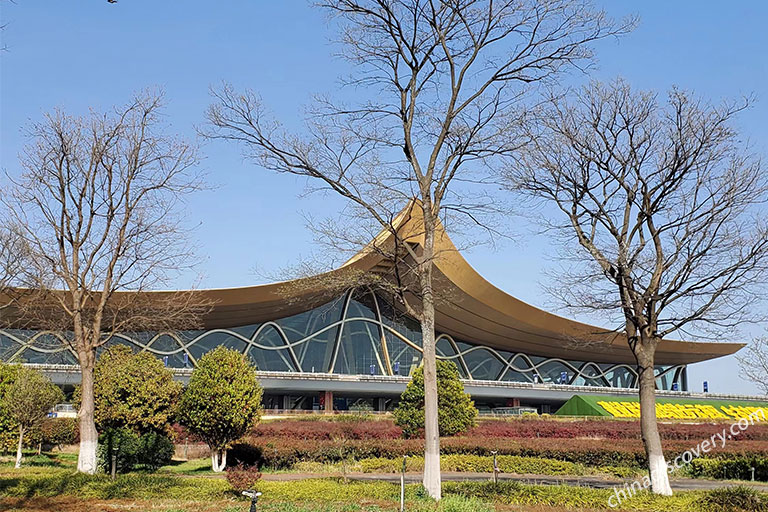
Kunming Changshui Airport
Airport: Lijiang Sanyi International Airport (丽江三义国际机场)
Lijiang (丽江), a really famous romantic old city in Yunnan. There are good reasons for its convenient access with other major cities in China by air.
Besides the above cities, you could also fly to Lijiang from Guilin (about 1 daily flight, about 1.5 hrs), Nanjing (over 3 daily flights, 2 hrs), Wuhan (over 2 daily flights, about 2.5 hrs), Changsha (about 4 daily flights, about 2.5 hrs), Zhengzhou (over 2 daily flights, about 2.5 hrs), and so forth. Besides, flights are also available between Lijiang and Taipei, etc.
Transfer to Lijiang Old Town: there are Airport Shuttle Buses that will take you to Liantian Hotel (蓝天宾馆) in Lijiang Downtown, from where you can get to Lijiang Old Town in about 10 minutes by taxi. Also, you could take a local taxi for about 40 minutes ~1 hour. Know more details of Lijiang Airport to Old Town >>
Check more about How to Get to & around Lijiang .
Airport: Huangcaoba Airport (大理荒草坝机场)
To benefiting your access to Dali Old Town and other highlights in this romantic city, flights have linked Dali (大理) with Beijing, Shanghai, Guangzhou, Chengdu (about 5 daily flights), Xian (over 1 daily flight), Changsha (over 1 daily flight), Chongqing, Hangzhou, Wuhan, Zhengzhou, Lanzhou, etc.
Transfer to Dali Old Town: taking a local taxi is the best way, which costs about 1 hour to drive for about 30km.
Check more about How to Get to & around Dali .
4. Shangri-La
Airport: Diqing Shangri-La Airport (迪庆香格里拉机场)
To get to the fascinating Shangri-La (香格里拉) by air, you could leave from Chengdu (about 1.5 hrs), Chongqing (about 2 hrs), and Lhasa (about 1 hrs & 50 mins) that offer 1 daily flight there.
Transfer to downtown: from the airport, you could arrive at the downtown by taxi for less than half an hour. And if you transfer by bus, it would take about 1 hour and 20 minutes. So, consider your more time for break and sceneries, we advise you choose the taxi with speed.
Check more about How to Get to & around Shangri-La .
5. Xishuangbanna
Airport: Xishuangbanna Gasa International Airport (西双版纳嘎洒国际机场)
Xishuangbanna (西双版纳), the enthusiastic botanic garden in Yunnan, is linked by flights with Beijing, Shanghai, Guangzhou, Xian, Wuhan, Zhengzhou, with daily flights but with a short stop by at another major city, like Kunming. However, there are also some direct flights from Chengdu, Chongqing (every day), Hangzhou, Changsha, Guiyang, etc.
Transfer to downtown: to get to the downtown area, you could take the local bus for about 50-70 minutes. Besides, local taxi needs only about 20 minutes to take you there.
Besides the above airports, you could also get to Yunnan by flying to the airport in Mangshi, Tengchong, Zhaotong, Puzhehei, Baoshan, Lincang, and Simao. To know more flight information from your cities to Yunnan, please contact us for details.
Trains to / off Yunnan
Want to take a train to Yunnan? Good idea! There are not only trains, but also the advanced and cool high speed trains from Beijing, Shanghai, Guangzhou, Shenzhen, Guilin, Chengdu, Chongqing, Wuhan, Changsha, Zhengzhou, Guilin, etc. to Kunming so far. Check the high speed train information of popular cities with Kunming at below for your reference.
(Note: the prices of train tickets are varied based on the types of seats on high speed trains.)
Besides, if you are not transferring from the above cities and traveling with more time, you could take a high speed train from Beijing (10.5-13.5 hrs), Shanghai (11.5-12.5 hrs), Hangzhou (10.5-11.5 hrs), Wuhan (7-8.5 hrs), Changsha (5.5-7 hrs), Xiamen (13 hrs), etc. with the highest speed of 250-350km/h.
Transfer from Kunming South Station: from this high speed train station, you could take the local Metro Line 1 and bus K12 to the downtown area, which needs about 1.5 hours. Taking a taxi needs about 1 hour and 10 minutes.
>> Check more about Kunming High Speed Trains .
Apart from the high speed train, run some normal trains also run from many domestic cities. And there are usually 5 daily K trains from Kunming Railway Station to Hekou, from where you could go to visit Vietnam by passing the Entry & Exit Inspection with your valid passport and visa. To know more information of Kunming trains, please feel free to ask our Travel Consultant for help!
Transportation in Yunnan
After landing in Yunnan, how to transfer between the top favored destinations, like Kunming, Dali, Lijiang, Shangri-La, Yuanyang, Lugu Lake, etc.? Within this province, convenient distance coaches and trains would escort you among them with great efficiency. So let’s take a look of transportation in Yunnan at below.
- Kunming to Lijiang
Lijiang is about 517 km northwest of Kunming. Travelers can get to Lijiang from Kunming either by high speed train (about 3-3.5 hours) or by flight (about 1 hour). Taking a high speed train is more popular than taking a flight.
By High Speed Train
There are about 6 daily bullet trains from Kunming Railway Station / Kunming South Railway Station to Lijiang Railway Station. The whole train ride takes about 3~3.5 hours. If you want a budget option, you can choose the overnight normal train, which will take you to Lijiang in about 9 hours.
Check Real-time Kunming to Lijiang Train Schedules >>
Check Real-time Lijiang to Kunming Train Schedules >>
>> 5 Days Kunming Lijiang High Speed Train Tour (Kunming / Lijiang)
There are also 5 around daily flights available, which depart from Kunming Changshui Airport to Lijiang Sanyi Airport in about 1 hour. However, since the airports are relatively farther from the city downtown areas than the railway stations, travelers prefer the high speed trains more.
>> 5 Days Kunming Lijiang Minority Tour (by Flight) (Kunming / Lijiang)
Kunming to Lijiang via Dali
Since Dali is settled just in between Lijiang and Kunming. You can also travel from Kunming to Dali first, and then make a transfer to Lijiang. Frequent high speed trains have already linked Dali and Kunming. From Dali, you can catch a car (about 2.5-3 hours) or a train (1.5~2 hours) to Lijiang. And once you are in Dali, you can have a 2~3 days tour there before heading to Lijiang!
Check More about Kunming to Lijiang >>
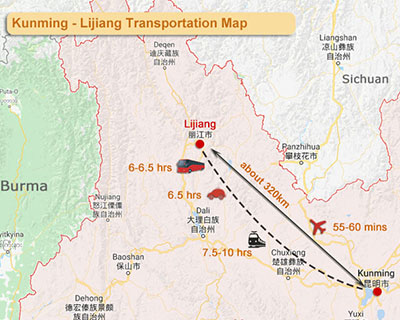
Kunming Lijiang Transportation Map
Kunming to Dali Transportation
To fly from Kunming to Dali, you could choose from the about 7 daily flights. The whole flight takes only about 1 hour .
Bullet Trains are available between Kunming and Dali and need only about 2~2.5 hours for the whole riding ! Every day, there are usually more than 20 G/D trains under operation from around 06:30-21:30 between Kunming South Railway Station (昆明南站) / Kunming Railway Station (昆明站) and Dali Railway Station (大理站) for your convenient transfer. The prices are about 132.0-155.5 RMB for the Second Class Seat, and 210.0-247.5 RMB for the First Class Seat for each passenger according to different departure time of the train. Please check detailed Kunming Dali high speed train route & map .
See more Kunming to Dali high speed train schedule >>
See more Dali to Kunming high speed train schedule >>
Actually, taking a distance coach is the cheapest but cost-efficient way to transfer between Kunming and Dali. Usually, there are many coaches starting about from 08:00 to 18:50 from Kunming West Bus Terminal (昆明西部客运站) to Dali Bus Terminal (大理汽车客运站), Dali Xingsheng Bus Terminal (大理兴盛汽车客运站), and Dali Express Bus Station (大理快速汽车客运站), which needs about 4 hours to drive along the whole way and cost about 110-140 RMB/person.
If you go from Kunming to Dali by car, it needs about 4-4.5 hours to cover about 330 km long distance.
>> Check More about Transportation between Kunming and Dali
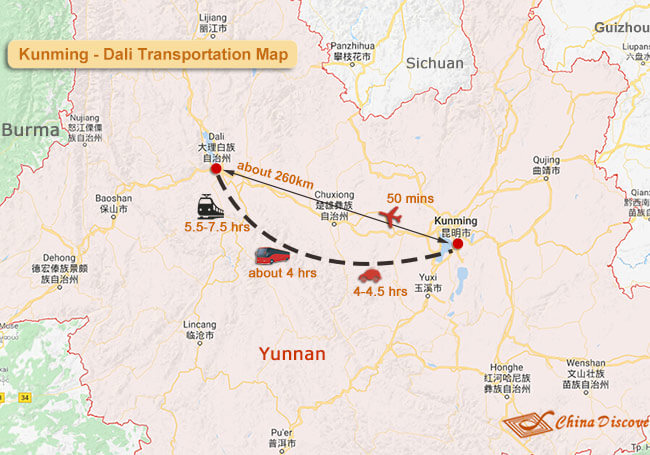
Kunming Dali Transportation Map
Kunming to Shangri-La Transportation
From Kunming to Shangri-La (autonomous prefecture center of Diqing), there are usually about over 5 daily flights , and that takes about 75-85 minutes .
There are about 6 daily coaches from Kunming West Bus Terminal (昆明西部客运站) to Shangri-La Bus Terminal (香格里拉客运站). The whole distance needs about 9.5-15.5 hours according to different routes and bus types. And the cost is about 210-250 RMB/person.
If you are planning to arrive there by car, it will take about 8.5 hours with about 620km long distance.
There are about 3 daily bullet trains from Kunming Railway Station to Shangri-La Railway Station. The whole train ride takes about 4.5~5 hours.
>> Check More about Transportation between Kunming and Shangri-La .
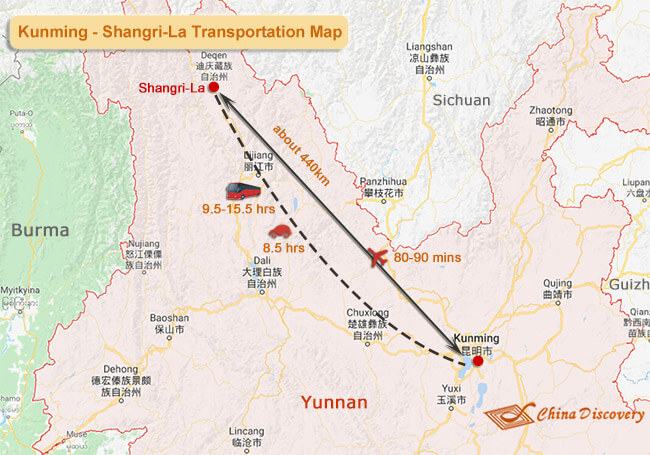
Kunming Shangri-La Transportation Map
Kunming to Yuanyang Transportation
From Kunming to Yuanyang (元阳), you can take a distance coach. Every day, there are about 3 coaches starting from Kunming South Bus Terminal (昆明南部客运站) to Yuanyang Xinjie Bus Station (元阳新街客运站), which needs about 5-6 hours and costs about 140-150 RMB/person. And from the bus station in Yuanyang, you could take a local minibus to the scenic are for about 15-20 minutes.
Besides, if you want to drive from Kunming downtown to the center of Yuanyang County, it will cost about 4.5-5.5 hours to cover about 300-340 km. And if you want to drive directly to the terrace scenic spot, it may need about 5.5-6.5 hours for covering about 330-380km. Compared with all the other ways to Yuanyang Rice Terraces, traveling with the help of local driver is the best way, because you can get rid of the hassles like looking for the right bus station. Therefore, we would recommend you to go with a private car. If you need such services, please feel free to contact us .
>> Check More about Transportation between Kunming and Yuanyang .
Check more about How to Get to & around Yuanyang .
>> 5 Days Kunming, Jianshui & Yuanyang Rice Terraces Tour
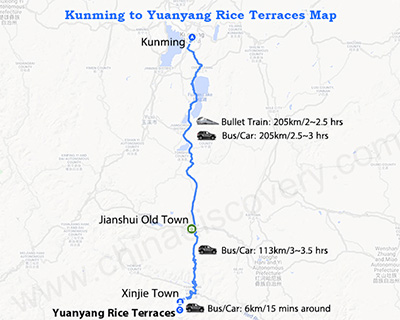
Kunming Yuanyang Transportation Map
Lijiang to Dali Transportation
In 2024, from Lijiang to Dali, there are are several high speed trains (C/Y train) at present and about 4 daily C trains available between Lijiang Railway Station and Dali Railway Station. You could choose one from about 09:00-22:00 and arrive in Dali for about 1 to 2.5 hours . And the tickets cost about 34.0-105.5 RMB/person.
Check Real-time Lijiang to Dali Train Schedules >>
Check Real-time Dali to Lijiang Train Schedules >>
To take a coach from Lijiang to Dali, you will have a lot of shift choices . From the early morning at about 07:00 to the late afternoon at about 17:00, the coaches start about every 30 minutes and arrive within about 3-3.5 hours to the bus terminals in the downtown area and the old town scenic spot. And among them, there are over 5 daily coaches departing from Lijiang Bus Terminal (丽江客运站) directly to Dali Old Town (大理古镇).
If you go from Lijiang to Dali by car, it will take you about 3 hours with a driving distance of about 170-210km. To drive to Dali Old Town, another 30 minutes is needed.
>> Check More about Transportation between Lijiang and Dali
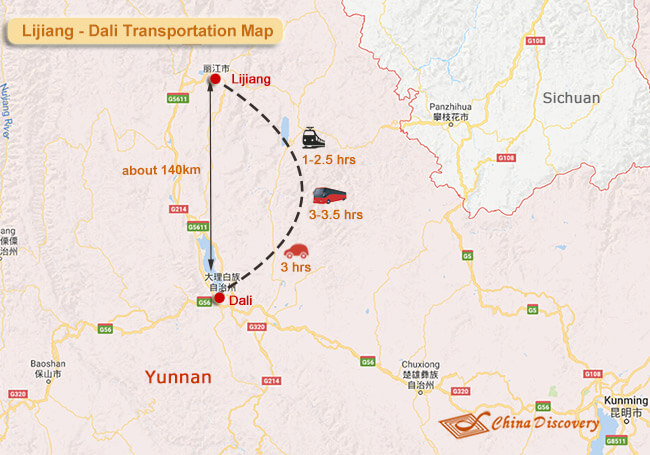
Lijiang Dali Transportation Map
Lijiang to Shangri–La Transportation
From about 07:30 to 17:10, there are comfortable coaches departing from Lijang Bus Terminal (丽江客运站) to Shangri-La Bus Terminal (香格里拉客运站), which needs about 4 hours for the whole way and costs about 40-65 RMB/person according to the types of coach. After getting to the bus station in Shangri-La, you could take a local bus to Sumtsaling Monastery for about 30 minutes or a taxi for less than 10 minutes, take a taxi to Pudacuo National Park for about 40 minutes and to Napa Lake for about 10 minutes, etc.
To drive from Lijiang to Shangri-La, you would spend about 3.5-4 hours to drive for about 176km long way.
>> Check More about Transportation between Lijiang and Shangri-La
>> 5 Days Lijiang & Shangri-La Best Highlights Tour
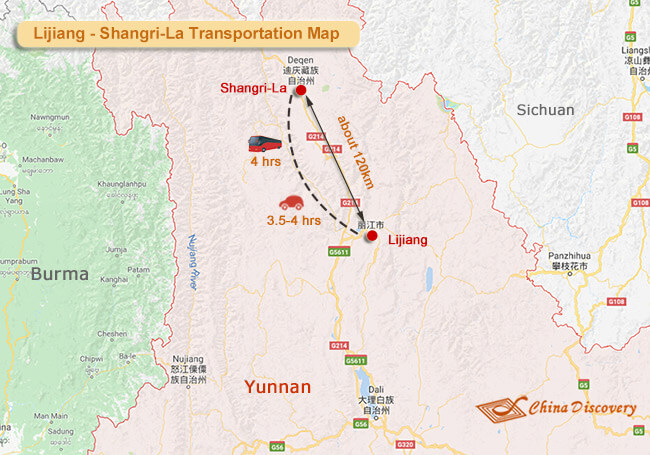
Lijiang Shangri-La Transportation Map
Kunming to Xishuangbanna
Xishuangbanna on the southwest border of Yunnan, Laos and Myanmar is about 320 km from Kunming, the capital of Yunnan Province. The best way to get there is catching a flight from Kunming . Kunming Chsngshui International Airport operates many flights to Xishuangbanna every day. The flight ride needs only about 1 hour or so . There are also long-distance coaches running between the two cities. However, the coach journey is too time-consumption when compared with the flight. The coach ride needs about 8.5 hours.
Check more about How to Get from Kunming to Xishuangbanna (Jinghong) .
>> 5 Days Kunming Xishuangbanna Contrast Scenery & Culture Tour
Kunming to Puzhehei
Puzhehei is mostly notable for its large scale of beautiful lotus and natural country scenery. Tourists can take a bullet train to get there from Kunming in 1~1.5 hours. These trains depart from Kunming Railway Station / Kunming South Railway Station and arrive at Puzhehei Railway Station. And from Puzhehei Railway Station, you can ask a taxi to travel around.
>> Real-time Kunming to Puzhehei Train Schedules
>> Real-time Puzhehei to Kunming Train Schedules
>> 5 Days Puzhehei Lotus Flowers & Bamei Xanadu Tour with Kunming
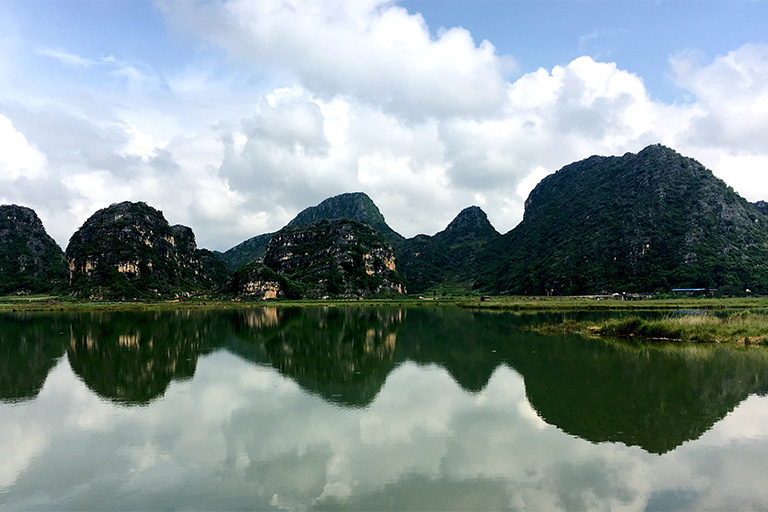
Kunming/Lijiang To Lugu Lake Transportation
From kunming.
From Kunming to Lugu Lake (泸沽湖), you could take a direct flight in the morning to Ninglang Luguhu Airport (宁蒗泸沽湖机场) for about 1 hour and 15 minutes . Usually, there are 1-2 daily flights available, so you could check the flight information in advance for your trip.
From Lijiang
There are usually 3 daily coaches from Lijiang Bus Terminal (丽江客运站) to Luguhu Bus Terminal (泸沽湖客运站), which needs about 5 hours and 65-80 RMB/person for arrival. Also, you could start from Lijiang downtown to Lugu Lake scenic area by car for about 4.5 hours , and the driving distance is about 200 m.
(PS: There are also some flights from Chengdu to Lijiang Sanyi Airport, which takes about 1.5 hours.)
>> 2 Days Magic Lugu Lake Tour with Mosuo Ethnic Culture
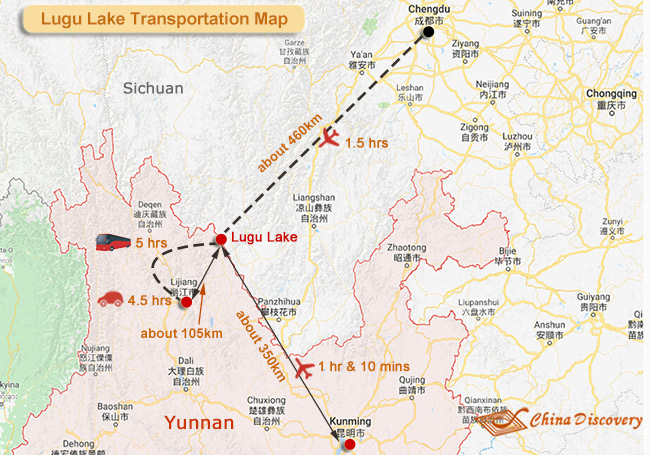
Lugu Lake Transportation Map
Note: all above information of the time, ticket prices, numbers, and stations of the flights, trains and coaches are only for your reference, since that would be adjusted according to practical situation. If you have any questions about transportation to/from/in Yunnan, please contact us for details.
Worry-free Travel with China Discovery
To travel Yunnan without any worry about the transportation, you can choose to enjoy our transfer service, and our local guide and driver would well arrange every step to pick you up at Yunnan, have easy and comfortable transfer between your ideal cities in this province, like Lijiang, Dali, Shangri-La, etc., and send you off to your next destination or home. Therefore, you could pay more attention to the wonderful highlights on the way. If you are interested, please feel free to ask our professional travel expert for details.
We have helped many global travelers enjoy their memorable trips to Yunnan for the past few years. Among them Mr. Elie & his wife from Belgium had 15 great days in Yunnan during their 69 days China trip customized with us and shared us their special travel story . Travel with China Discovery to create your wonderful Yunnan trip memories!

Keep Reading on Yunnan Transportation
- Kunming Transportation
- Lijiang Transportation
- Dali Transportation
- Shangri-La Transportation
- Yuanyang Transportation
- Xishuangbanna Transportation
- Kunming to Dali
- Kunming to Shangri-La
- Kunming to Yuanyang
- Lijiang to Shangri-La
- Lijiang to Kunming
Useful Yunnan Travel Articles
- Yunnan Tours
- Yunnan Travel Guide
- Kunming Travel Guide
- Lijiang Travel Guide
- Dali Travel Guide
- Shangri-La Travel Guide
- Yuanyang Travel Guide
- Xishuangbanna Travel Guide
- Luoping Travel Guide
- Tengchong Travel Guide
- How to Plan a Yunnan Tour
- Top 10 Places to Visit in Yunnan
- Yunnan Attractions
- Yunnan Weather & Seasons
- Yunnan Maps
- Yunnan Minorities
- Yunnan Ethnic Festivals
- Yunnan Ethnic Markets
Recommended Tours
Top 3 tours chosen by most customers to explore in the best way. Check the detailed itinerary, or tailor your own trip now with us.
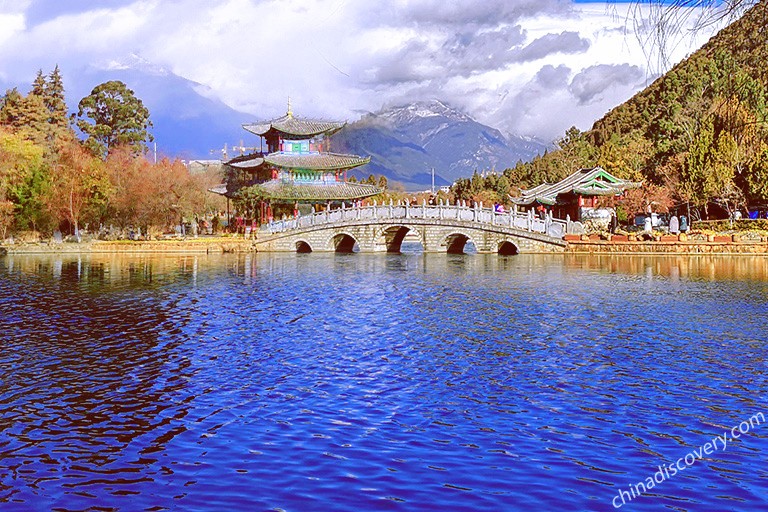
6 Days Best of Yunnan Tour (Lijiang, Shangri-La, Kunming)
Lijiang / Shangri-La / Kunming
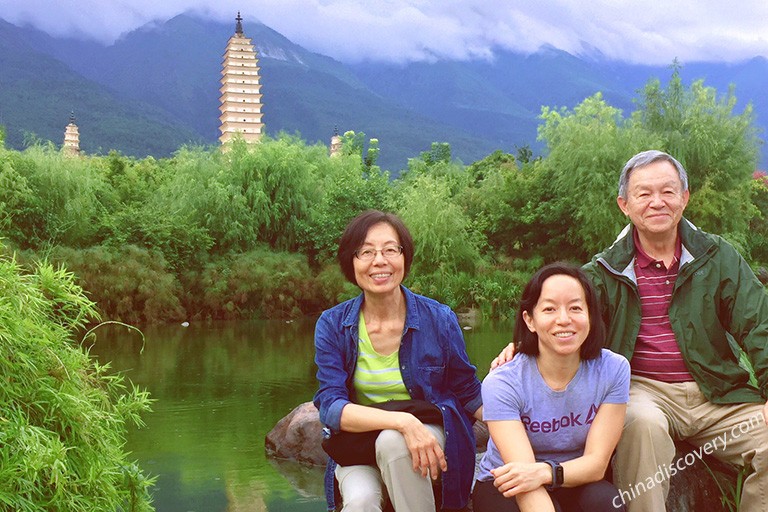
8 Days Classic Yunnan Tour
Kunming / Dali / Lijiang / Shangri-La
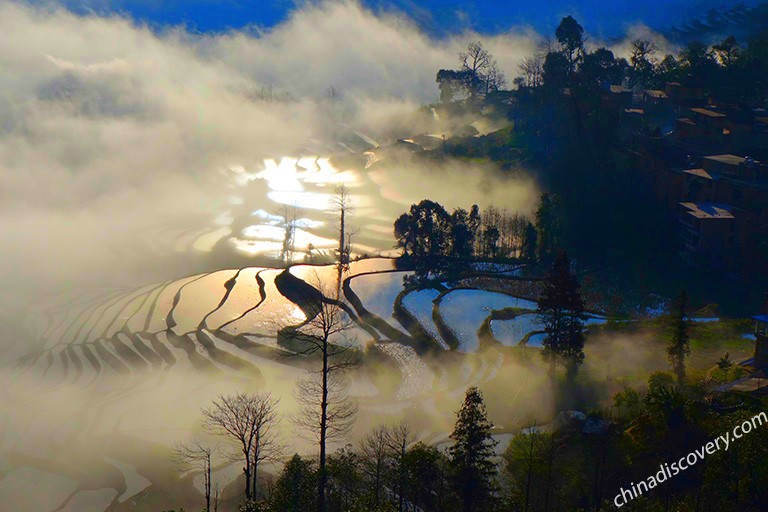
11 Days Amazing Yunnan Tour
Kunming / Stone Forest / Yuanyang / Jianshui / Kunming / Dali / Lijiang / Shangri-La
Start planning your tailor-made holiday to China by contacting one of our specialists. Once inquired, you’ll get a response within 0.5~23.5 hours.

Have a question? Get answers from our travel experts or guests
- Your Question:
- Your Email:
- Affordable and valuable price
- 100% tailor-made packages
- Highly rated customers reviews
- Efficient customer support
China Tours
- Top 10 China Tours
- Classic China Tours
- China Tours from Beijing
- China Tours from Shanghai
- China Tours from Hong Kong
- China Tours from Chengdu
- Short China Trips
- Customize China Tour
- China Panda Tours
- Family Tour with Kids
- High-Speed Train Tour
- Silk Road Travel
- Yangtze River Cruise
- Hiking & Trekking Tours
- Photography Tours
- China Minority Travel
- Beijing Shanghai Tours
- Shanghai Yangtze Tours
- Chengdu Jiuzhaigou Tours
- Chengdu Lhasa Tours
- Suzhou Hangzhou Tours
- Guilin & Yangshuo
- Zhangjiajie
“Very good experience”
“WONDERFUL 25 DAYS IN CHINA - PRIVATE TOUR”
“Awesome China tour from northeast to southwest”
Any questions, please email us at: [email protected] or call us at: 86-19138970032 (Monday-Friday 9 a.m. to 6 p.m. GMT+8)
- Terms & Condition
- Privacy Policy
- Customer Support
Copyright © 2011-2024. All rights reserved.
Cookie policy
We use cookies to give you the best experience on our website. Continue using our website means you agree with our cookie policy. For more info, please read here .
An official website of the United States government
Here’s how you know
Official websites use .gov A .gov website belongs to an official government organization in the United States.
Secure .gov websites use HTTPS A lock ( ) or https:// means you’ve safely connected to the .gov website. Share sensitive information only on official, secure websites.
GCN Circular 36130
gcn.nasa.gov
A service of the Astrophysics Science Division at NASA Goddard Space Flight Center

IMAGES
COMMENTS
The Best Times to Visit Yunnan for Good Weather. Spring and autumn are the best times to visit Yunnan for good weather. Spring (March to May) enjoys pleasant weather, especially if you prefer milder temperatures and enjoy witnessing the region's natural beauty in bloom. Daytime temperatures typically range from 15 to 25°C (59-77°F).
Spring (March to May) in Yunnan is the season for oceans of flowers. We recommend a visit to Kunming, Dali, Luoping, and Xishuangbanna. See the 5-Day Spring Tour to Kunming, Luoping, and Wanfenglin. Summer (June to September) in Yunnan is a good season to escape China's heat. We recommend Dali, Lijiang, Shangri-La, and Puzhehei.
Read on and keep scrolling! Let's explore the Top 10 Places to Visit in Yunnan together: Quick Jump to: Top 1: Lijiang and Its Exceptional Ancient Town. Top 2: Kunming - the Spring City & Vital Gateway of Yunnan. Top 3: Beautiful Shangri-La, Our Ideal Home. Top 4: Welcome to Dali, the Romantic Place with Bai Culture.
Yunnan Travel Guide. Yunnan, the South of Colorful Clouds, is the most southwestern province in China. It borders Guangxi Zhuang Autonomous Region and Guizhou in the east, Sichuan in the north, Tibet Autonomous Region in the northwest. Besides, Yunnan shares a borders of 4060 kilometers with Burma in the west, Laos in the south and Vietnam in ...
Below are the recommended best time to visit the popular destinations in Yunnan and you can check for reference. Kunming (altitude: 1895 meters): It can be visited all year round. Lijiang (altitude: 2418 meters): The best time to travel is March ~ November. Shangri-La (altitude: 3300 meters): The best time to travel is May ~ October. Dali (altitude: 2052 meters): The best time to visit is ...
Yunnan, home to 25 ethnic minorities, is a place to experience the unique cultures of China's ethnic minority groups. Yunnan has well-preserved old towns and villages, with ancient buildings, well-worn blue-stone streets, and rich histories. Visiting Local Minority Family in Lijiang. Cannot wait to visit Yunnan.
Yunnan (云南, Yúnnán) is the most diverse province in all China, both in its extraordinary mix of peoples and in the splendour of its landscapes. That combination of superlative sights and many different ethnic groups has made Yunnan the trendiest destination for China's exploding domestic tourist industry. 01 / Attractions.
Yunnan basic travel facts. A trip to Yunnan province realistically takes at least one week. However, if you want to cover all the highlights I encourage you to spend twelve days or longer. A trip to Yunnan is a breathtaking view of some of the most spectacular and overwhelming scenery within China.
1. Why you should visit China's most diverse province. Visiting Yunnan (云南) ticks all the right boxes. It is by far the most diverse of all of China's provinces. Planning a trip here means ...
Rough Guides® is a trademark owned by Apa Group with its headquarters at 7 Bell Yard London WC2A 2JR, United Kingdom. Plan your visit to Yunnan, China: find out where to go and what to do in Yunnan with Rough Guides. Read about itineraries, activities, places to stay and travel essentials and get inspiration from the blog in the best guide to ...
Yunnan has the most ethnic minorities in China, which make up about 1/3 of the province's population. Of China's 55 ethnic minorities, the province is home to 51 and 25 of them exceed populations of 5,000. These ethnic minorities live together over vast areas in the region while some live in individual concentrated communities in small areas.
Best Places to Visit in Yunnan. Top 1. Kunming - the City of Ever Spring. Kunming is the capital city of Yunnan, and while reputed as a flower city that attracts tourists from all over China. Owning China's largest flower market that delivers to all over the country every day.
April 10, 2024. Yunnan is one of the most beautiful and diverse provinces in China. In this travel guide, you can find the top things to do and see. Yunnan Province in China is a beautiful, diverse, landlocked region known for its stunning natural beauty, rich cultural heritage, and delicious cuisine. With its vibrant cities, picturesque ...
Day 10 - 12: Shangri-la (香格里拉) Getting from Lijiang to Shangri-la: Take a 3.5-hour bus from Lijiang Bus Station (62RMB). The streets of Shangri-la enchanted us with an antiquated mystique, from unique Tibetan-styled streets to grand monasteries. Weather in Shangri-la: It's the coldest place in this Yunnan itinerary.
Mingyong Glacier. Yunnan. Tumbling off the side of Kawa Karpo peak is the 12km-long Mingyong Glacier. At over 13 sq km, it is not only the lowest glacier in China (around 2200m)…
A summary of this Yunnan travel guide for your private use to copy paste! Yunnan itinerary day 1 & 2: Kunming, Yunnan itinerary day 3: Shiling Stone Forest, Yunnan itinerary day 4 & 5: to Dali & city trip, Yunnan itinerary day 6: to Lijiang via Shaxi, Yunnan itinerary day 7: Jade Dragon Snow Mountain hike, Yunnan itinerary day 8: Tiger Leaping Gorge hike, Yunnan itinerary day 9: Lijiang ...
High speed train in China. Kunming can also be reached from all over China with high-speed trains which make traveling to Kunming easy and comfortable, there are 10 high-speed trains between Kunming and Chengdu each day with the faster only taking 5hours and 8min. 3 high-speed trains from Beijing each day with the faster only taking 10 hours and 49 min to travel the 1,700 miles (2,735 km ...
Name Country Email. 10 top things to do in Yunnan are to visit Lijiang Old Town and Dali Ancient City, to boat on Lugu Lake and Erhai Lake, to admire the majesty of Jade Dragon Snow Mountain, Meili Snow Mountain and the Yuanyang Rice Terraces, to hike along Tiger Leaping Gorge, and to enjoy the primitive Potatso Park and Kunming Stone Forest.
Day 1: Kunming (visit the Stone Forest) Days 2-3: Jianshui (visit the Confucian Temple and Zhu Family Garden) Days 4-6: The Yuanyang Rice Terraces. The Confucian Temple is a must in Jianshui, where you can explore the various courtyards, halls, and gardens and gain insight into Confucian thought and philosophy.
The Beautiful Little Potala Palace. The monastery is a short ride on Bus 3 from Dukezong ancient town North Gate. The "Songzanlin Monastery" stop (the last but one stop) is actually the stop near the ticket office where you get off to purchase tickets and take the monastery shuttle bus to the monastery, 2.8 km away.
With its rich history, breathtaking landscapes, and diversity of languages and ethnicities, Yunnan Province is a cultural gem in China. Over Spring break, the region became the destination for an immersive learning trip, organized by NYU Shanghai's Office for Community-Engaged Learning (CEL) and led by Dean of Arts and Sciences David Atwill and East Asian Studies Librarian Yurong Atwill.The ...
As Yunnan enjoys the respectable reputation of the "Colorful Yunnan" and it has both brilliant culture as well as profound history, you can enjoy the most unforgettable time taking a travel in this province in the South of China. Lijiang, Dali, Shangri-La, Yuanyang, Kunming, etc. there are too many destinations to pay a visit to see their ...
Travel portal Qunar said that flight bookings to Xishuangbanna saw year-on-year growth of 20 percent during the festival, and most of the bookings were made by people from Chengdu, in Sichuan ...
Travel portal Qunar said that flight bookings to Xishuangbanna saw year-on-year growth of 20 percent during the festival, and most of the bookings were made by people from Chengdu, in Sichuan ...
Huangshan, Yunnan, China Weather Forecast, with current conditions, wind, air quality, and what to expect for the next 3 days.
Kunming Top Things to Do for First-Time Yunnan Travelers. 1. Explore the Towering Karst Pillars — the Stone Forest. The Stone Forest is praised as the " Stone Forest Museum " as you'll find countless awesome stone formations displayed like large-scale geological exhibits. The Stone Forest area is also the home of the Sani and Yi people.
In this photo released by Xinhua News Agency, an electric multiple unit (EMU) train of the China-Laos Railway arrives at Yuxi Railway Station in Yuxi in southwestern China's Yunnan Province ...
KUNMING, China, April 18, 2024 /PRNewswire/ -- Yunnan Innyo Co., Ltd., is set to embark on an animated adventure that invites global adventurers to experience Yunnan: A Many-Splendored Life. From April 09 to April 30, 2024, a series of animations that embody the profound and vibrant culture of Yunnan Province will be successively released on ...
To travel Yunnan without any worry about the transportation, you can choose to enjoy our transfer service, and our local guide and driver would well arrange every step to pick you up at Yunnan, have easy and comfortable transfer between your ideal cities in this province, like Lijiang, Dali, Shangri-La, etc., and send you off to your next ...
The fourth station of the BOOTES Network, BOOTES-4/MET, is located at the Lijiang Observatory of the Yunnan Observatories of China (Xiong et al. 2020). See also Hu et al. (2021). We acknowledge the support of BOOTES-4 technical staffs. Questions or comments? Contact GCN directly. ... Visit USA.gov ...